
Government of the
District of Columbia
Muriel Bowser
Mayor
Fitzroy Lee
Interim Chief Financial Officer
Tax Rates and Tax Burdens
Washington Metropolitan Area
Including: Washington, DC Maryland Virginia
Montgomery Co. Alexandria
Prince George's Co. Arlington Co.
Fairfax City
Fairfax Co.
Falls Church
2019
Issued April 2021

2019 Tax Rates and Tax Burdens – Washington Metropolitan Area
i
A Comparison of Tax Rates and Burdens in
the Washington Metropolitan Area
Table of Contents
List of Major Charts, Maps, and Tables ............................................................................. ii
Executive Summary ............................................................................................................ iv
Acknowledgments ................................................................................................................ vii
Part I: A Comparison of Tax Burdens in Selected
Washington Metropolitan Area Jurisdictions, 2019
Overview ................................................................................................................ 2
Individual Income Tax ........................................................................................... 4
Real Property Tax .................................................................................................. 9
Sales Tax .............................................................................................................. 14
Automobile Tax... ................................................................................................ 16
Part II: A Comparison of Tax Rates in the Washington
Metropolitan Area as of January 1, 2020
Alcoholic Beverage Tax ....................................................................................... 28
Cigarette Tax ......................................................................................................... 29
Financial Institution Taxes .................................................................................... 30
Income Taxes
Corporate Franchise ........................................................................................ 31
Individual Income ........................................................................................... 32
Unincorporated Business Franchise ................................................................ 35
Inheritance and Estate Taxes ................................................................................. 37
Insurance Premiums Tax....................................................................................... 39
Motor Vehicle Taxes…………………………………………………..................41
Motor Vehicle Excise Tax .............................................................................. 41
Motor Vehicle Registration............................................................................. 41
Motor Vehicle Fuel Tax .................................................................................. 43

2019 Tax Rates and Tax Burdens – Washington Metropolitan Area
ii
A Comparison of Tax Rates and Burdens in
the Washington Metropolitan Area
Table of Contents, continued
Property Taxes
Real Property .................................................................................................. 44
Property Tax Relief Programs ........................................................................ 47
Tangible Personal Property ............................................................................. 52
Public Utilities Tax ............................................................................................... 55
Recordation and Transfer Taxes ........................................................................... 58
Sales and Use Taxes.............................................................................................. 60
Water and Sewerage User Charges (Residential) ................................................. 63
Miscellaneous Taxes ............................................................................................. 66
Uniform Disposition of Unclaimed Property…………………………………… 68
Appendix: Additional Tax Burden Maps................................................................................. 69
Office Locations and Telephone Numbers ............................................................................... 76
List of Major Charts, Maps, and Tables
Part I: A Comparison of Tax Burdens in Selected Washington Metropolitan
Area Jurisdictions, 2019
Table 1 Individual Income Tax, Washington Metropolitan Area (2019).....…........7
Chart 1 2019 Metropolitan Area Individual Income Tax Burdens….......................8
Table 2 Housing Value Assumptions for Major
Washington Metropolitan Area Jurisdictions, Calendar Year 2019……..10
Table 3 Calculation of Effective Residential Property Tax Rates………………..13
Chart 2 2019 Metropolitan Area Effective Property Tax Rates……………….....14
Chart 3 2019 Metropolitan Area Real Property Tax Burdens...……………….....14
Table 4 Selected Sales Tax Rates ……………………………………………….15
Table 5 Automobile Tax Assumptions, 2019 ........................................................17
Table 6 2019 Major State & Local Tax Burdens for a Family of Three
in Selected Washington Metropolitan Area Jurisdictions ........................19
Table 7 Summary of Average Tax Burdens for Selected
Washington Metropolitan Area Jurisdictions and DC, 2019 ...................20
Chart 4 DC’s Combined Tax Burdens Compared with Average of Other Metro
Areas, 2019…………………………….…………….…………………..21
Chart 5 Estimated Tax Burdens for Five Hypothetical Families, 2019………… 22

2019 Tax Rates and Tax Burdens – Washington Metropolitan Area
iii
A Comparison of Tax Rates and Burdens in
the Washington Metropolitan Area
Table of Contents, continued
Map 1 Combined 2019 Metro Area Tax Burdens (Income, Property, Sales, &
Auto) as a % of Income (Family Earning $75,000/Year)……………......24
Table 8 Selected State and Local Tax Rates in the DC Metropolitan Area, as of
December 31, 2019 .....…………………………………………………..25
Table 9 Demographic Statistics for Selected Metropolitan Area Jurisdictions,
2019…...………………………………………………………………….26
Part II: A Comparison of Tax Rates in the Washington Metropolitan Area as of
January 1, 2020 (unless otherwise noted)
Table 10 Metropolitan Area Tax Rates on Alcohol …..…......................................28
Table 11 Metropolitan Area Tax Rates Per 20 Cigarettes…………………...…....29
Table 12 Unincorporated Business Franchise and Business License Taxes ..…….36
Table 13 Insurance Premiums Tax Rates………………………………………….40
Table 14 Annual Registration Fees for Passenger Cars……………………………42
Table 15 Real Property Tax Rates, As of December 31, 2019 ..........................…..46
Table 16 Property Tax Relief Programs ...........................................................…...50
Table 17 Tangible Personal Property, Tax Year 2019– 2020 (FY 2020)…………54
Table 18 Public Utilities Tax to Residential Consumers………………………….56
Table 19 Public Utilities Tax to Suppliers ..........................................…………....57
Table 20 Metropolitan Area Sales and Use Tax Rates..…………………………..62
Table 21 Water and Sewerage User Charges (Residential), 2019………………...64
Appendix
Map 2 DC Metropolitan Area Map……………………………………...............70
Map 3 Combined 2019 Metropolitan Area Tax Burdens (Income, Property, Sales,
& Auto) as a % of Income (Family Earning $25,000/Year)……..……...71
Map 4 Combined 2019 Metropolitan Area Tax Burdens (Income, Property, Sales,
& Auto) as a % of Income (Family Earning $50,000/Year)………….....72
Map 5 Combined 2019 Metropolitan Area Tax Burdens (Income, Property, Sales,
& Auto) as a % of Income (Family Earning $75,000/Year)….................73
Map 6 Combined 2019 Metropolitan Area Tax Burdens (Income, Property, Sales,
& Auto) as a % of Income (Family Earning $100,000/Year)…………...74
Map 7 Combined 2019 Metropolitan Area Tax Burdens (Income, Property, Sales,
& Auto) as a % of Income (Family Earning $150,000/ Year)……..........75

2019 Tax Rates and Tax Burdens – Washington Metropolitan Area
iv
Executive Summary
Overview
This publication contains two studies: (I) the Washington, DC Metropolitan Area tax
burden comparison, and (II) the Washington, DC Metropolitan Area comparison of tax rates.
Hypothetical state and local tax burdens for a family of three, at five income levels, are
presented in Part I of this publication. These burdens reflect individual income, real property,
sales, and automotive taxes in the District of Columbia and selected jurisdictions in the
Washington metropolitan area. The District’s tax structure employs taxes typically used by local
governments, such as real and personal property taxes, deed taxes, and others. At the same time,
the District has taxes usually associated with the state level of government, such as the income
tax, estate tax, sales and use taxes, excise taxes, gross receipts taxes, and motor vehicle taxes.
About two-thirds of the District’s generated revenues come from taxes usually administered by
the states.
Taxation of individuals is an important factor in considering the competitiveness of a
given jurisdiction within a major metropolitan area. Simply comparing nominal tax rates,
however, does not provide an accurate picture of how one location
compares to other jurisdictions, and can be misleading given that
statutory rates do not reflect the wide array of adjustments and
provisions made to the tax base, such as tax deductions, credits,
and other preferences. Further, the District’s tax rates are often
compared to either state rates, or other city rates, and not usually a
combination of both rates that would be applicable to residents
living in those locales. As such, this study calculates the combined
state and local tax burdens a hypothetical family [at five different
income levels] would face living in DC as compared to
neighboring jurisdictions.
In order to compare different locations within the major metropolitan Washington area,
this study estimates hypothetical state and local tax burdens for a family of three in eight
Washington-area jurisdictions: the District of Columbia, the Maryland counties of Montgomery
and Prince George’s; the Virginia counties of Arlington and Fairfax; and the Virginia cities of
Alexandria, Fairfax, and Falls Church. Part II of the report also includes rates for Loudon and
Prince William Counties in Virginia. The hypothetical family comparison accounts for
differences in tax bases as well as tax rates across jurisdictions and can be conducted at a variety
of income levels.
In this study, the hypothetical family consists of two wage-earning spouses and one
school-age child. The gross family income levels used are $25,000, $50,000, $75,000, $100,000,
and $150,000. The wage and salary split is assumed to be 70-30 between the two spouses. All
other income is assumed to be split evenly. The family at each income level is assumed to own a
single-family home, except for families at the $25,000 income level, who are assumed to occupy
rental housing. All families are assumed to reside within the confines of the jurisdiction, and all
wage and salary income is assumed to have been earned in the jurisdiction.
…this study calculates
the combined state and
local tax burdens that a
hypothetical family [at
five different income
levels] would face living
in DC as compared to
neighboring jurisdictions.

2019 Tax Rates and Tax Burdens – Washington Metropolitan Area
v
The four taxes used in the comparison are the individual income tax; the real property tax
on residential property; the general sales and use tax; and automobile taxes, including the gasoline
tax, registration fees, and personal property tax for tax year 2019.
This study is not intended to measure the overall level of taxation in a jurisdiction; rather,
it attempts to measure a hypothetical tax burden for a family given assumptions identified for
each tax. There is no single “best” way of measuring tax burdens. To estimate tax payments, the
study makes critical assumptions about typical households, their sources of income, and
consumption patterns. Property tax liabilities are particularly difficult to measure accurately
because of varying assessment practices, property characteristics, and relief mechanisms. The
methodology used to derive the estimated tax burden for each tax is presented in the section
pertaining to that tax.
Findings
The main results of the study are presented in Tables 6 and
7, pages 19-20, and are also illustrated in Charts 4 and 5 on pages
21-23. When combining the four different tax burdens studied
together, the District of Columbia taxes its residents lower relative
to neighboring jurisdictions at each income level. At the
$25,000/year income level, the five Virginia jurisdictions rank
highest in the combined tax burdens, with Fairfax City’s burden
being the highest. At the $50,000- and $150,000-income levels,
Prince George’s County, Maryland’s tax burden ranks first, with
Falls Church, Virginia, ranking second. At the $75,000- and
$100,000-income levels, Falls Church ranks first with Prince
George’s County ranking second. At the four highest income levels,
Fairfax City and Alexandria, Virginia, share the third and fourth ranks, while Arlington and
Fairfax County share the fifth and sixth ranks. At every income level Montgomery County,
Maryland’s combined tax burden ranks seventh, while DC’s is eighth.
Individual Income Tax: The District’s individual income tax burden is lower than the
metropolitan average (excluding DC) at all levels except at the $100,000- and $150,000-income
level. The District’s income tax burden ranges from less than 0 percent (negative $2,572,
representing a tax refund), at the $25,000 income level to 5.8 percent ($8,745) at the $150,000
income level, (see Table 7, page 20). DC has the highest income tax burden at the $150,000-
income level; Montgomery County ranks highest for the $100,000-income level, while
Montgomery and Prince George’s Counties are tied with the highest burdens for the $50,000- and
$75,000-income levels. At the $25,000-level the Virginia jurisdictions rank highest (even with a
$0 tax burden) because the two Maryland counties and DC offer a refund through an Earned
Income Tax Credit (and a refundable property tax credit in DC). Except at the highest income
level, the tax burdens in the Maryland jurisdictions are higher than in DC and Northern Virginia
because these two counties levy their own local income tax, in addition to the income tax levied
by the state of Maryland. Without taking the local income taxes into account, the families in DC
would have a higher income tax burden than the families in the Maryland counties at the highest
three income levels. This fact highlights a reason for analyzing tax burdens in a more
comprehensive manner by including both state and local taxes.
Main Finding:
When combining the
four different tax
burdens together, the
District of Columbia
taxes its residents lower
relative to neighboring
jurisdictions at each
income level.

2019 Tax Rates and Tax Burdens – Washington Metropolitan Area
vi
Property Tax: The real property tax burden for District of Columbia homeowners falls
below the area-wide average (excluding DC) for homeowners at all income levels, a result of its
lower property tax rate and homestead deduction. For DC homeowners (those families earning
$50,000 or more) the tax burden ranges from 1.36 percent ($682) of income at the $50,000
income level to 2.19 percent ($3,285) at the $150,000 income level. In the District, the 2019
nominal rate of $0.85 per $100 of taxable assessed value is multiplied by the effective assessment
level (statutory assessment level of 100% X median assessment sales ratio) and applied to the
market value of the home after deducting $74,850 for the homestead exemption. For homeowners
at all income levels, Prince George’s County, Maryland has the highest property tax burden. In
this study, the families earning $25,000/year are assumed to rent instead of own and based on the
way that the property tax equivalent of rent is calculated for the study, the property tax burden at
this income level is assumed to be the same for all the metro jurisdictions. The high property tax
equivalent of rent reflects the high cost of rental housing in the metro region. As previously noted,
DC provides a property tax credit for renters which is reflected in the income tax burdens since it
is administered through that tax.
Sales and Use Tax: The District’s sales tax burden is higher than the metropolitan area
average (excluding DC) at all income levels. The general sales tax rate in the District of Columbia
is 6.0 percent (the same as Maryland and Northern Virginia’s general rates). However, each
jurisdiction has a multiple rate system in which sales tax rates on items such as food consumed
away from home and rental vehicles are higher than the general rate, thus the tax burdens
calculated for this study differ from one another.
Automotive Taxes: The District of Columbia automotive tax burden is lower than the
metropolitan area average (excluding DC) at all income levels. Unlike Virginia localities, the
District and Maryland jurisdictions do not levy a personal property tax on automobiles. The
combined state and local registration fees in Virginia are comparable to the state rate in Maryland.
The District imposes the highest registration fee in the metropolitan area, ranging from $72 for a
vehicle weight under 3,500 pounds to $155 for vehicles of 5,000 pounds or more.
The District of Columbia gasoline tax rate of 23.5 cents per gallon at the end of 2019 is
lower than Maryland’s recently increased rate of 36.79 cents per gallon, and lower than Virginia’s
30.12 cents per gallon (combined state + local rate).
See Map 1 (page 24) for an illustration of the metro area jurisdiction’s combined tax
burdens (income, property, auto, and sales) as a percentage of income, for a family earning
$75,000/year. At all income levels, DC has the lowest combined tax burden of the surrounding
jurisdictions. For maps illustrating combined metro area burdens for the other income levels, see
the Appendix on page 69.
This report is organized in two sections. Part I presents the Washington, DC Metropolitan
Area tax burden comparisons; and Part II contains a comparison of tax rates across the
Washington, DC Metropolitan Area.

2019 Tax Rates and Tax Burdens – Washington Metropolitan Area
vii
Acknowledgments
Each year the Government of the District of Columbia, Office of the Chief Financial
Officer, Office of Revenue Analysis publishes Tax Rates and Tax Burdens: Washington
Metropolitan Area as required by DC Code 47-817.
1
Taxpayers and government officials in the
District of Columbia have a significant interest in the relative tax position of the District
compared to the surrounding jurisdictions.
The Office of Revenue Analysis acknowledges and sincerely appreciates the time, effort,
and courtesy of officials in the Washington metropolitan area who cooperated in providing
information for this report. To properly compare tax rates and tax burdens, uniform and reliable
data must be used. Officials from the area jurisdictions assist with data compilation included in
this report. Part I of this volume compares tax burdens for the 2019 tax year and Part II compares
tax rates effective as of January 1, 2020.
I would also like to thank Lori Metcalf, who prepared this document, and Bob Zuraski,
Farhad Niami, and Charlotte Otabor, who offered editing assistance.
Questions and/or comments relating to this publication should be addressed to Lori
Metcalf, Fiscal Analyst, Office of Revenue Analysis, 1101 4
th
Street, SW, Suite 770 West,
Washington, DC 20024, or call (202) 727-7775.
Norton Francis
Chief Economist and
Deputy Chief Financial Officer (Interim)
April 2021
1
“In establishing a real property tax rate or rates, the Council shall make a comparison of tax rates and burdens applicable to
residential and nonresidential property in the District with those such rates applicable to such property in jurisdictions in the
vicinity of the District. The comparison shall include other major taxes in addition to the tax on real property. Without in any way
limiting the authority of the Council, it is the intention of Congress, that tax burdens in the District be reasonably comparable to
those in the surrounding jurisdictions of the Washington metropolitan area.”

2019 Tax Rates and Tax Burdens – Washington Metropolitan Area
1
Part I
A Comparison of Tax Burdens
in Selected Washington
Metropolitan Area Jurisdictions
2019

Part I: A Comparison of Tax Burdens in Selected Washington Metropolitan Area Jurisdictions
2019 Tax Rates and Tax Burdens – Washington Metropolitan Area
Page 2
Overview
There is wide diversity in state and local tax systems in the United States. The fifty states
and the District of Columbia employ a broad range of taxes and fees to fund state and local
government operations. The combination of taxes and fees used by a particular jurisdiction is
dependent upon many factors, including its revenue needs, the local government tax base, the
fiscal relationships between the state and the local government, constitutional and legal
limitations on the powers of taxation, and the jurisdiction’s philosophy of government taxation.
The District’s tax structure includes taxes typically imposed by local governments, such
as real and personal property taxes, deed taxes, and others. At the same time, the District also
levies taxes usually associated with the state level of government, such as individual and
corporate income taxes, excise taxes, and motor vehicle related taxes. About two-thirds of the
District’s locally generated revenues come from taxes usually administered by a state.
The District is often compared to other cities, or states, independently, without
considering its unique situation of having to charge taxes that both a city and a state normally
levy. Therefore, the Office of Revenue Analysis produces a report comparing District tax
burdens on a hypothetical family to the combined state and local tax burdens the family would
face if it lived in the largest city in each state. As a companion to that nationwide study, the
present study compares the state and local tax burdens of a hypothetical family of three in the
eight major Washington metropolitan area jurisdictions: the District of Columbia; the Maryland
counties of Montgomery and Prince George's; the Virginia counties of Arlington and Fairfax;
and the Virginia cities of Alexandria, Fairfax, and Falls Church. Each jurisdiction provides its
own level of services and levies various taxes to pay for those services. The study does not
attempt to compare the level of services provided by each jurisdiction.
Further, this study defines the term ‘tax burden’ as the dollar amount of taxes owed if the
final incidence of each major tax examined (income, property, sales, and auto) is on the
individual.
2
Similar to the assumptions in the nationwide study, the hypothetical family in this
study consists of two wage-earning spouses and one school-age child. Families with annual gross
income levels of $25,000, $50,000, $75,000, $100,000, and $150,000 for each jurisdiction are
analyzed. The wage and salary split is assumed to be 70-30 between the two spouses.
The family at each income level over $25,000 is assumed to own a single-family home
and to reside within the confines of the city or county. However, at the $25,000 income level, the
study assumes that the household rents and does not own its housing unit and owns one
automobile. Families with annual income of $50,000 are presumed to own their home and one
automobile; and families with annual incomes of $75,000, $100,000, and $150,000 are assumed
to own their own home and two automobiles. This study compares the tax burden in each
jurisdiction for the hypothetical family across four major tax categories: individual income tax,
real property tax, sales tax, and automobile-related taxes.
2
This approach differs from the use of the phrase ‘tax burden’ that may be more common in the field of economics, which includes an economic
analysis of which group bears the ‘burden’ of a tax by ultimately having to pay it, also known as the ‘incidence’ of a tax.

Part I: A Comparison of Tax Burdens in Selected Washington Metropolitan Area Jurisdictions
2019 Tax Rates and Tax Burdens – Washington Metropolitan Area
Page 3
This study does not intend to measure the overall level of taxation in a jurisdiction;
rather, it attempts to measure a hypothetical tax burden for a family given the assumptions noted.
There is no single "best" way of measuring tax burdens. To estimate tax payments, the study
makes critical assumptions about typical households, their sources of income, and consumption
patterns. Property tax liabilities are particularly difficult to compare accurately because of
varying assessment practices, property characteristics, and relief mechanisms.
The methodology used to derive the estimated tax burden for each tax is presented in the
section pertaining to that tax. The methodology used in this report is best suited to provide a
relative comparison of tax burdens, within a single tax type and within a single year, across each
of the jurisdictions studied. Comparisons across the different types of taxes or across years
should be made with caution. As in past years, readers are advised not to compare the
hypothetical tax burdens across years; any number of small changes in the assumptions of the
study can result in misleading information under such comparisons. The purpose of the study
remains to compare tax burdens on a hypothetical household in different jurisdictions in a
specific year, and not over time.
The individual income tax rates, exemptions, and deductions in effect for calendar year
2019 in the District of Columbia, Maryland, and Virginia are shown in Table 1, on page 7.
Factors used in the housing value assumptions are detailed in the property tax section, and the
assumed housing values by income level for each jurisdiction are shown in Table 2, page 10. The
assumptions used to derive the automobile tax burdens are contained in Table 5, page 17.
Table 6, page 19, presents detailed data on state and local tax burdens for each type of tax
by income level for each selected metropolitan area jurisdiction. The District's tax burden is
compared with the average for the metropolitan area at each income level for the four tax
categories, separately and combined, in Table 7, page 20. Chart 4 on page 21 presents the DC
combined tax burdens compared to the metro area averages at each income level.
Finally, selected state and local tax rates in the Washington metropolitan area as of
December 31, 2019 are outlined in Table 8, page 25. To provide context, selected demographic
information for the metro area jurisdictions is presented in Table 9, page 26.

Part I: A Comparison of Tax Burdens in Selected Washington Metropolitan Area Jurisdictions
2019 Tax Rates and Tax Burdens – Washington Metropolitan Area
Page 4
Individual Income Tax
Income Tax Calculations
The income tax burden of a hypothetical family is estimated using the actual income tax
system in each jurisdiction and assumptions about the sources of income for families at different
income levels. The features of the individual income tax systems used in the Washington, DC
Metropolitan Area are presented in Table 1 (page 7).
The five income levels used in this study are divided between wage and salary income. In
previous versions of this report, capital gains and interest income were included, in addition to
the assumptions of major itemized deductions on the following page. However, capital gains and
interest income are not included in the current report to remove some of the variation that
inconsistently changed the original income levels used, with little methodological benefit. (See
the following page for more information on the itemized deductions that continue to be included
in this report.) The following income levels are used for the income tax starting point in each
jurisdiction and the District of Columbia, where Spouse 1 is assumed to earn 70 percent of the
total income and Spouse 2 is assumed to earn 30 percent.
Gross
Income:
$25,000
$50,000
$75,000
$100,000
$150,000
Spouse 1:
$17,500
$35,000
$52,500
$70,000
$105,000
Spouse 2:
7,500
15,000
22,500
30,000
45,000
Total itemized deductions used for calculating state and local income taxes, which are
also used in the federal tax computation, are shown below. The methodology for two of the
itemized deductions—the medical and dental expenses deduction and the charitable contribution
deduction—have changed for the current report. In the past, the amounts for these deductions
were based on actual average deduction amounts for taxpayers within a range around each
income level for Washington, DC, taxpayers who were married filing jointly and had itemized
deductions. However, the pool of married filing joint taxpayers that also itemized was
insufficient at the lower income levels to produce representative deduction amounts. Therefore,
in the current report, Internal Revenue Service (IRS) data for all itemizers in tax year 2018 are
used to calculate the average percent of AGI reflected by each of these deductions, respectively.
For the gross medical deduction, the average share is eight percent of AGI. For charitable
contributions, the level of four percent of AGI is applied across incomes. These changes in the
methodology make the inputs in the income tax calculations more consistent across incomes and
conform more closely to the methodology across the other tax types (which do not rely on DC-
specific data).

Part I: A Comparison of Tax Burdens in Selected Washington Metropolitan Area Jurisdictions
2019 Tax Rates and Tax Burdens – Washington Metropolitan Area
Page 5
Gross Income Level
Deduction $ 25,000 $ 50,000 $ 75,000 $100,000 $150,000
Medical (Gross) 1/ 2,000 4,000 6,000 8,000 12,000
Nondeductible Medical 2/ -1,875 -3,750 -5,625 -7,500 -11,250
Net Medical Deduction 125 250 375 500 750
Deductible Taxes 3/ 3/ 3/ 3/ 3
Mortgage Interest 4/ 4/ 4/ 4/ 4/
Contribution Deduction 2/, 5/ 1,000 2,000 3,000 4,000 6,000
Total Deductions-without taxes
And mortgage interest 6/ 1,125 2,250 3,375 4,500 6,750
1/ Medical deductions allowed when the total is more than 7.5 percent of federal AGI. All or part of medical deduction
may be allowed in some states.
2/ New methodology for assumptions of medical and contribution deductions. 8% of AGI for medical (minus the 7.5% of
AGI limit); 4% for charitable. Data from: Table 2.1. Returns with Itemized Deductions: Sources of Income, Adjustments,
Itemized Deductions by Type, Exemptions, and Tax Items, by Size of Adjusted Gross Income, Tax Year 2018.
Available at this link.
3/The tax deduction varies from city to city and is based on real and personal property taxes computed in the current 2019
Study and individual income taxes computed in the 2018 study for tax year 2018.
4/ Assumed mortgage interest varies by income but at each income level is the same entire metro area and is based on 5th
year interest paid on a home purchased in 2014 at an interest rate of 4.17%.
5/ Contribution Deduction represents charitable contributions claimed.
6/ Note: the current report does not include miscellaneous deductions, taxable interest income or capital gains, which have
been included in previous reports. Further, if all itemized deductions do not exceed the amount of the standard deduction,
the standard deduction amount will be automatically used.
Because the Federal Earned Income Tax credit (EITC) at the $25,000 income level in
some states will determine the state’s EITC, it is necessary to compute the 2019 federal
individual income tax at each income level using the above assumptions. DC, Maryland, and
Virginia each allow taxpayers to begin their state income tax computations with federal adjusted
gross income (AGI)
Further, depending on levels of deductions used in each state, the standard deduction may
be more advantageous for certain taxpayers. In 2019, the federal standard deduction increased to
$24,400; and state level standard deductions vary by state. Because the federal standard
deduction was significantly increased in the Tax Cuts and Jobs Act of 2017 (TCJA), more of the
families included will now take the standard deduction. This also means that if states require
taxpayers taking the federal standard deduction to also take the state standard deduction, those in
states with standard deductions lower than their itemized deductions may face an increased tax
liability in 2019 as compared to 2017 (both Maryland and Virginia require taxpayers taking the
federal standard deduction to also to take the state standard deduction. The DC standard
deduction is now the same as at the federal level). For the current study of tax year 2019, all
families earning $75,000 per year and below would take the federal standard deduction as it was
higher than the itemized deductions assumed for these income levels in the report.
The 2019 deductible real and personal property taxes computed in the current year’s

Part I: A Comparison of Tax Burdens in Selected Washington Metropolitan Area Jurisdictions
2019 Tax Rates and Tax Burdens – Washington Metropolitan Area
Page 6
Metro Area study are used for the 2019 property tax deduction. For the 2019 state and local
individual income tax deduction, 2018 tax burdens from the previous year’s study were used.
Each of these figures was used in computing the 2019 federal income tax burden, which is the
starting point for the Metro-area income tax burden calculations.
The highest individual income tax rate in Maryland is 5.75 percent and is not reached
until taxable income exceeds $300,000 for joint filers ($250,000 for single filers). In addition,
Maryland local tax rates, which are applied to all taxable income, range from 3.03 percent in
Charles County, to 3.2 percent in Montgomery and Prince George’s Counties. At the $25,000
income level, one-half of the federal earned income credit is deducted from state tax liability in
Maryland (and nonrefundable), while 28 percent is fully refundable (meaning that the taxpayer
may receive money back if their credit is more than their tax liability). In contrast, Virginia's
maximum 5.75 percent tax rate is reached when taxable income exceeds $17,000 and 20 percent
of the federal earned income credit is deducted from Virginia’s tax liability (and not refundable);
and the District's maximum rate of 8.95 percent in 2019 was not reached until the $1,000,000
taxable income level is exceeded. At the $25,000 income level, eligible DC taxpayers received
40 percent of the federal earned income credit as a deduction from their District tax liability and
the DC credit is refundable.

Part I: A Comparison of Tax Burdens in Selected Washington Metropolitan Area Jurisdictions
2019 Tax Rates and Tax Burdens – Washington Metropolitan Area
Page 7
Table 1: Individual Income Tax Washington Metropolitan
Area (2019)
PERSONAL EXEMPTIONS
EXEMPTIONS
TAXABLE
INCOME 5/
RATES
DISTRICT OF COLUMBIA
Single
$0 1/
$0 - $10,000
$10,001-$40,000
$40,001-$60,000
$60,001-$350,000
$350,000-$1,000,000
Over $1,000,000
4.0%
$400 + 6.0% of excess > $10,000
$2,200 + 6.5% of excess > $40,000
$3,500 + 8.5% of excess > $60,000
$28,150 + 8.75% of excess > $350,000
$85,025, plus 8.95% of the excess above
$1,000,000
Married Filing Separately
$0
Married Filing Jointly
$0
Head of Household
$0
Dependent (additional to federal)
$0
Blind (additional to federal)
$0
Age 65 and over (additional to
federal)
$0
Standard Deduction
$24,400 1/
MARYLAND 2/
Single
$3,200
$0 - $1,000
$1,001-$2,000
$2,001-$3,000
$3,001-$150,000
$150,001-$175,000
$175,001-$225,000
$225,001-300,000
Over $300,000
2.0%
$20 + 3.00% of excess > $1,000
$50 + 4.00% of excess > $2,000
$90 + 4.75% of excess > $3,000
$7,072.50 + 5% of excess > $150,000
$8,322.50 + 5.25% of excess > $175,000
$10,947.50 + 5.5% of excess > $225,000
$15,072.50 + 5.75% of excess> $300,000
Married Filing Separately
$6,400
Married Filing Jointly
$6,400
Head of Household
$3,200
Dependent (additional)
$3,200
Blind (additional)
$1,000
Age 65 and over (additional)
$1,000
Standard Deduction
3/
VIRGINIA
Single
$ 930
$0 - $3,000
$3,001-$5,000
$5,001-$17,000
Over $17,000
2.0%
$60 + 3.00% of excess >$3,000
$120 + 5.00% of excess > $5,000
$720 + 5.75% of excess > $17,000
Married Filing Separately
$ 930
Married Filing Jointly
$1,860
Head of Household
$ 930
Dependent (additional)
$ 930
Blind (additional)
$ 800
Age 65 and over (additional)
$ 800
Standard Deduction
4/
Source: Survey of State Revenue Department Officials; State Web Sites; and Federation of Tax Administrators, “State Individual Income Taxes
for tax year 2019.” March 29, 2019. 2019 State Tax Handbook, Wolters Kluwer/ CCH Group, 2018.
1/ As a result of the 2017 Tax Cuts and Jobs Act and DC’s federal conformity provisions, DC personal exemptions are reduced to zero and
the federal standard deduction will apply thereafter. Standard deduction listed is for married couples filing jointly.
2/ Maryland rates do not include local rates that may be as low as 1.75% in Worcester County and as much as 3.20% in Howard, Montgomery
and Prince George’s Counties, among others.
3/ The standard deduction for an individual is 15% of Maryland AGI not to exceed $2,250 ($4,550 for joint and head of household returns and
those filing as qualifying widow(er) with dependent child). The minimum is $1,500 for single, married filing separately and dependent
taxpayers. All others are allowed a minimum of $3,000.
4/ Single - $3,000; married persons filing separately - $3,000; and married persons filing jointly or combined separate - $6,000.
5/ Brackets and rates are for married filing jointly.
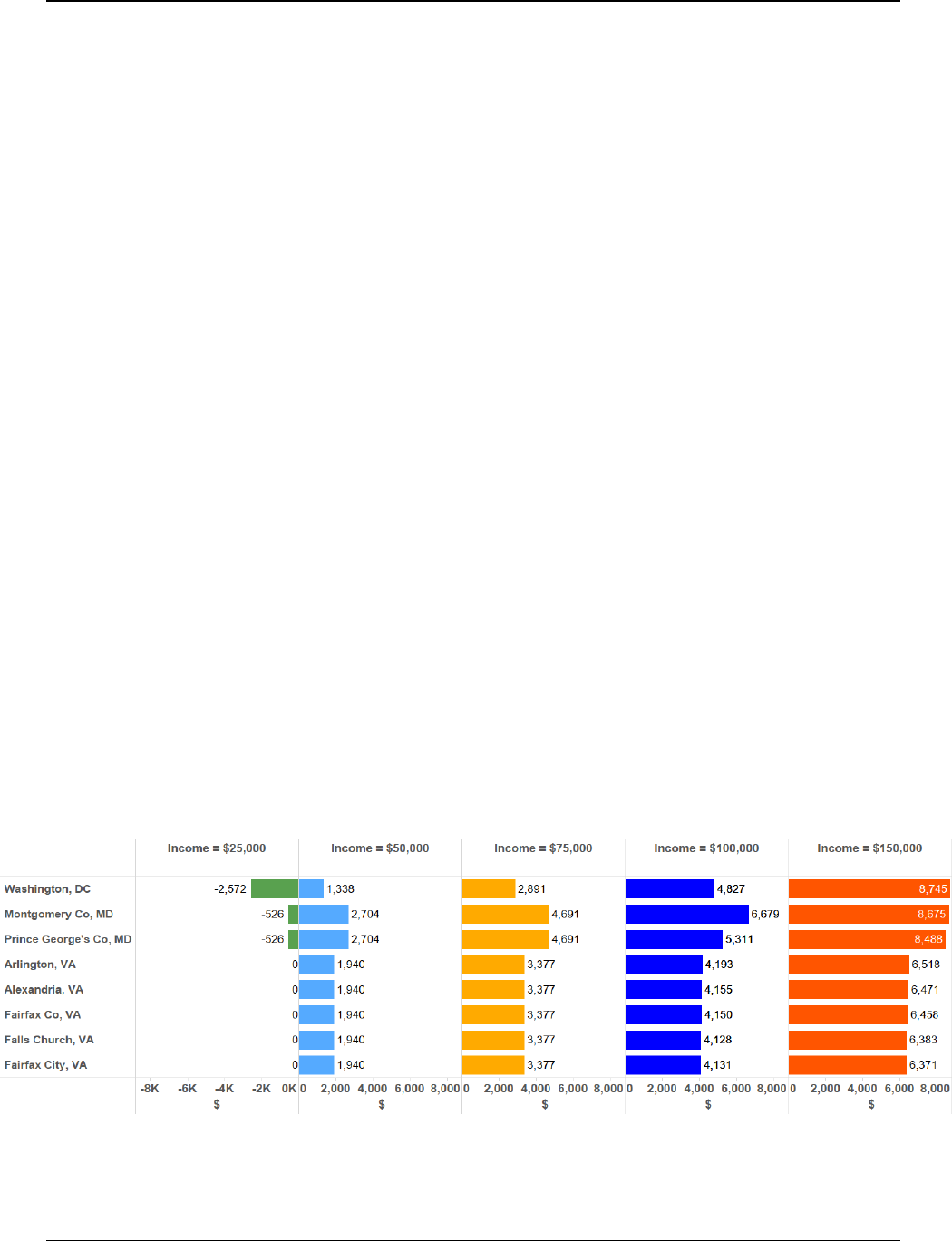
Part I: A Comparison of Tax Burdens in Selected Washington Metropolitan Area Jurisdictions
2019 Tax Rates and Tax Burdens – Washington Metropolitan Area
Page 8
Income Tax Burdens
At the $25,000 income level, the metro area average individual income tax burden
(excluding DC) represents a negative 0.60 percent of family income (due to refunds through the
EITC). The metro area average income tax burden is 4.32 percent at $50,000; 5.00 percent at
$75,000; 4.68 percent at $100,000; and 4.70 percent at $150,000 (see Table 7, page 20).
The District’s individual income tax burden is lower than the average of the other metro
areas at every level except at the $100,000- and $150,000-income level. The District’s individual
income tax burden ranges from a negative $2,572, or negative 10.3 percent at the $25,000
income level to $8,745 or 5.8 percent at the $150,000 income level. (The family earning $25,000
per year in the District also receives a refund through the EITC, as well an income tax refund of
property tax paid through the Schedule H credit, which is available to renters). The Montgomery
and Prince George’s county individual income tax burdens exceed the metropolitan average at
every income level except at $25,000.
In those two Maryland counties, the tax burden is a negative 2.1 percent at the $25,000
income level, and 5.8 percent at the $150,000 income level in Montgomery County and 5.7
percent at that level in Prince George’s County. For the Virginia area jurisdictions (Arlington
County, Alexandria, Fairfax City, Fairfax County, and Falls Church), the average of the four
individual income tax burdens is 0 percent at the $25,000 level, and 4 percent at the $150,000
income level. (Chart 1 below presents income tax burdens in dollars, ranked by highest to lowest
burdens at the $150,000 income level.)
Chart 1: 2019 Washington Metropolitan Area Individual
Income Tax Burdens
Source: ORA.
Note: Negative income tax burdens are a result of refundable tax credits.

Part I: A Comparison of Tax Burdens in Selected Washington Metropolitan Area Jurisdictions
2019 Tax Rates and Tax Burdens – Washington Metropolitan Area
Page 9
Real Property Tax
Property Tax Calculations
Real property tax burdens in the metropolitan area are a function of residential real estate
values, the ratio of assessed value to market value, applicable tax deductions or credits, and the
tax rate. The District allows a homestead deduction from the value of residential property before
the tax is calculated on owner-occupied properties ($74,850 in 2019), while the Virginia
jurisdictions do not allow any deductions for the typical homeowner. Montgomery County,
Maryland offers a property tax credit to offset the county income tax for owner-occupied
properties which is applied to County property taxes. The amount set by the County Council for
tax year 2019 was $692 and was applied to each family in the study assumed to own a home. The
state of Maryland has a supplemental homeowners’ tax credit for incomes up to $60,000 per year
but is only applicable if property taxes exceed a certain amount. None of the study’s families in
Montgomery or Prince George's County would have qualified because calculated taxes did not
meet the limit required. Both the District of Columbia and the state of Maryland have limits on
the amount a property’s assessment can increase from one year to the next (both are capped at 10
percent), however neither of these are included in the study because it is a point in time
calculation.
The effective property tax rates used for property tax burden calculations for each of the
metropolitan jurisdictions, presented in Chart 2, page 14, indicate a variety of ranges in these
rates and are net of property assessment levels. For the present 2019 Study, median sales ratio
statistics have been included to derive an “effective assessment level” that results from
multiplying the statutory property assessment level times the median sales ratio statistic. Median
sales ratios are a measure of the property valuation and assessment practices within a
jurisdiction. A sales ratio (or assessment sales ratio) is the ratio of the appraised value of the
property to the sales price, or market value; the median is the median ratio value of all the
properties included in the study.
3
If property assessments do not keep up with market value,
residents’ property taxes will be lower than they would otherwise be if taxed at the full market
value of the property. Including the available median sales ratio statistic into the property tax
burden calculations is an attempt to reflect how property tax systems in each jurisdiction are
administered in practice.
In addition to tax rate and effective assessment level differences, data presented in Table
2, page 10, show assumed market value differences of a residence for purposes of this study at
the different income levels. The $25,000 income level families are assumed to reside in a rental
unit and the $50,000, $75,000, $100,000, and $150,000-income families are assumed to live in
an owner-occupied house. A series of assumptions and calculations were made to estimate the
median house value for the Washington, DC metropolitan area for each income level used in the
report.
Data for the area’s median house value and median income were retrieved from the
3
“Glossary for Property Appraisal and Assessment,” International Association of Assessing Officers. 2013. Page 150.
https://www.iaao.org/media/Pubs/IAAO_GLOSSARY.pdf.

Part I: A Comparison of Tax Burdens in Selected Washington Metropolitan Area Jurisdictions
2019 Tax Rates and Tax Burdens – Washington Metropolitan Area
Page 10
Census Bureau’s 2019 American Community Survey. A linear multiplier was calculated by
dividing the area’s median house value by its median household income for mortgage holders.
This multiplier was used to scale the house values to the various income levels in the report
(multiplying it by each income level). This assumption serves as an input for both the property
tax burden calculations and the mortgage interest deduction for the income tax burden. This
method, which has been used since 2012, assumes that house values increase in a linear fashion
with income. Since 2014, the use of median household income of mortgage holders, rather than
the median income of all households, has been used to calculate the linear multiplier. However,
any analysis should focus on the relative rankings within a given year. Table 2 below presents
the metro area house value assumptions used in this study.
The mortgage interest amount (for use as an itemized deduction in the income tax) in the
2019 study is derived by calculating an amortization schedule for the estimated value of a house
purchased in 2014.
Table 2: Housing Value Assumptions For
Major Washington Metropolitan Area Jurisdictions
Calendar Year 2019 1/
FAMILY
INCOME
DISTRICT OF COLUMBIA,
MONTGOMERY COUNTY, MD
PRINCE GEORGE’S COUNTY, MD
ALEXANDRIA, VA
ARLINGTON COUNTY, VA
FAIRFAX COUNTY, VA
FALLS CHURCH, VA
FAIRFAX CITY, VA
$ 50,000
157,090
$ 75,000
235,635
$100,000
314,180
$150,000
471,269
Source: ORA.
1/ For the $50,000 income levels and above, data on 2019 median household incomes for mortgage holders and median
house values for the Washington DC, MSA were retrieved from the Census Bureau's ACS 2019. A multiplier was
then applied to each income based on the relationship of median income to median home value.
Property Tax Equivalent of Rent
As previously noted, the study assumes that the family with an annual income of $25,000
does not own a home (and as a result does not pay property tax directly), but instead rents.

Part I: A Comparison of Tax Burdens in Selected Washington Metropolitan Area Jurisdictions
2019 Tax Rates and Tax Burdens – Washington Metropolitan Area
Page 11
Given the high real estate values in the metro area, the assumption that families earning $25,000
per year rent is likely more realistic than the assumption that they own a home. Because renters
indirectly pay property taxes through their rent,
4
this study and previous Tax Burden Studies
calculate a percentage of rent constituting property taxes. This concept is called the property tax
equivalent of rent (PTER) and is an important tool in comparing the incidence of the property tax
on renters versus homeowners. In a 2020 50-State Property Tax Comparison report, the Lincoln
Institute of Land Policy and the Minnesota Center for Fiscal Excellence note that states vary in
how they tax rental properties in comparison to homesteads; on average cities tax apartments 34
percent more than homesteads.
5
Their report presents a table illustrating this information for the
largest city in each state; Charleston, South Carolina, has the largest difference in effective rates
between apartment buildings and homesteads, taxing apartments more than four times the
effective rate of that levied on homesteads.
6
Conversely, in six of the largest cities in each state
(and DC), apartments are given preferential treatment over homesteads with the most preference
toward apartments given in Bridgeport, CT.
7
In eight cities, apartments are given the same
treatment as homesteads.
To relieve the implicit tax burden on renters that exists in some locations, some states
have property tax circuit breaker programs that offset renters’ tax burdens (often through the
income tax since they do not pay property taxes directly). These programs must make
assumptions of the PTER to calculate the amount that renters are paying in property taxes, and
the amount of relief they will receive through the circuit breaker program. Of the states that offer
circuit breaker programs, the PTER assumptions generally range from 6 to 25 percent (NM has a
low of 6 percent while MA uses a 25 percent assumption); on average, states assume that 17
percent of rent goes toward paying property taxes.
8
DC’s circuit breaker program assumes 20
percent.
Prior to the 2016 Tax Burden Study, a 20 percent assumption was used with some
reservation given that it has a large impact on the calculated tax burdens of the families earning
$25,000 per year. In particular, the assumption often seemed unrealistic in cities with higher
rental prices where calculated PTERs would be the highest. However, rental buildings in more
competitive markets may not be able to pass on all taxes paid, given that prices are set by the
local market, and as the Lincoln report illustrates, the specific PTER level in a city is primarily
based on the tax system in each jurisdiction. It is not clear whether states with higher PTER
percentages in their circuit breakers have data backing up the percentage of PTER in their state,
or if these states are using the circuit breaker to provide a subsidy to lower income renters hit
hardest by higher rental markets.
9
In a January 2016 report, the Minnesota Department of
Revenue (MN DOR) used several techniques based on both ACS and internal tax data to assess
the percentage of rent that constitutes property taxes throughout Minnesota. MN DOR found the
statewide PTER hovered around 15 percent each year from 2009 to 2014, though in Minneapolis
4
“50-State Property Tax Comparison Study for Taxes Paid in 2018.” The Lincoln Institute of Land Policy and the Minnesota Center for Fiscal
Excellence. June 2019: pg. 4.
5
Ibid.
6
Ibid, pg. 104-5.
7
Ibid. The study found that in Washington, DC, the classification ratio between apartments and homesteads is 1.07, indicating that homesteads
are treated slightly preferentially to rental buildings by the property tax rates (exclusive of credits) in DC.
8
Based on analysis of state programs in the Lincoln Institute of Land Policy’s Significant Features of the Property Tax Database for 2017.
9
This discussion does not intend to assess appropriate levels of PTER used in circuit breaker programs, or to advocate that they
be changed. It is intended solely to consider whether and how these levels are used as an input for the Tax Burden Study’s calculation of renters’
tax burdens as compared to homeowners’ tax burdens across the 50 states.

Part I: A Comparison of Tax Burdens in Selected Washington Metropolitan Area Jurisdictions
2019 Tax Rates and Tax Burdens – Washington Metropolitan Area
Page 12
it was often up to 16.9 percent.
10
After considering the available information we have used a level of 15 percent for PTER
since the 2016 Study to be more realistic in the property tax burden on renters, particularly in
cities with more expensive rental markets. Future refinements may be made as new information
and data become available. To compute a percentage of said rent constituting property taxes for
the 51-City Tax Burden Study, the property tax equivalent of rent (PTER) was calculated by first
obtaining data on 2019 median rents for each MSA from the U.S. Department of Housing and
Urban Development.
11
The PTER for each jurisdiction was calculated as 15 percent of the
median rent for the Washington, DC MSA. Unlike the 51-City Study in which median rents for
each metropolitan area are used to reflect different housing markets in different areas, all the
jurisdictions in the present study are in the Washington, DC, metropolitan statistical area, and
thus have the same housing assumptions, for both rental costs and house values.
The 2019 median rent for a studio apartment was $1,540 per month in the DC MSA.
Even with the lower assumption of PTER in the current study, taking 15 percent of this rent over
an entire year implies that the lowest income families in the report are spending 74 percent of
their incomes on rent in the Washington, DC area. However, viewed in the context of some DC
metro area statistics it may not be that unrealistic. In 2017, of renters earning less than
$50,000/year, more than 80 percent were spending more than 30 percent of their income in
rent.
12
Further, a 2016 DC Fiscal Policy Institute Analysis of 2014 Census data found that 42
percent of extremely low-income renters (between $16,100 - $32,100/year for a family of four)
in DC paid 80 percent of their income or more in rent, while over half of renters at this income
level paid more than half of their income in rent.
13
Property Tax Burdens
Real property tax burdens for District of Columbia residents fall below the area wide
averages (excluding DC) at all income levels, except at the $25,000 income level where property
tax burdens are assumed to be the same across the region. As previously noted, the family
renting in DC and earning $25,000 would receive a property tax credit through the income tax
that is presented in the study as an offset to the income tax burden. Using the same housing cost
assumptions across the region means that the real property tax burdens for those assumed to own
their homes only reflect differences in both real property tax rates and property tax relief
provisions among the metropolitan area jurisdictions. The metropolitan area average burden for
the real property tax is 3.33 percent of income at the $50,000 income level; 3.40 percent at the
$75,000 level; 3.43 percent at the $100,000 level; and 3.46 percent at the $150,000 level (Table
7, page 20). Chart 3 below presents property tax burdens in dollars, by income level, for each
jurisdiction.
To calculate property tax burdens, nominal real estate tax rates for each jurisdiction are
10
The MN Renter’s Property Tax Refund program allowed renters to qualify for a refund on their rent of up to 17% of rent paid
(dependent on the renter’s income level) in 2018.
11
U.S. Department of Housing and Urban Development, “2017 50
th
Percentile Rent Estimates.” Data for studio apartments used.
12
Analysis of
U.S. Census Bureau, 2013-2017 American Community Survey 5-Year Estimates.
13
Zippel, Claire. “A Broken Foundation: Affordable Housing Crisis Threatens DC’s Lowest-Income Residents.”
DC Fiscal Policy Institute. December 8, 2016.

Part I: A Comparison of Tax Burdens in Selected Washington Metropolitan Area Jurisdictions
2019 Tax Rates and Tax Burdens – Washington Metropolitan Area
Page 13
multiplied by an effective assessment level (which is the announced or statutorily prescribed
assessment level times the median assessment sales ratio statistic for each jurisdiction). The
effective property tax rate (which does not include homestead or other deductions or exemptions)
is then multiplied by the housing values to determine the real property tax due. Homestead
exemptions or other property tax relief provisions are deducted or included as applicable in the
calculation of the final property tax burden.
For the District of Columbia, the nominal tax rate of $0.85 per $100 of assessed value is
multiplied by the effective assessment level of 97.5 percent (statutory assessment level of 100%
X median assessment sales ratio of 97.5%), and then applied to the market value of the house,
less $74,850 for the 2019 homestead exemption. Therefore, the homeowner with $50,000 in
income would pay tax on $82,240 of house value; on $160,785 at the $75,000 income level; on
$239,330 of house value at the $100,000 income level; and on $396,419 at the $150,000 income
level (each of these amounts represents the median house value at that income level minus
$74,850 for the homestead deduction).
Because Virginia's property tax relief program is targeted toward the elderly (age 65 or
older), and to persons permanently and totally disabled whose incomes do not exceed $72,000,
no adjustments are made in the property tax burdens for the hypothetical family of three in the
Virginia jurisdictions.
In calculating the real property tax burdens in the Maryland jurisdictions, nominal rates of
$1.091 per $100 of value in Montgomery County and $1.465 per $100 of value in Prince
George’s County were used as the starting point to calculate the effective rates as described
above. These nominal rates in Maryland include the countywide rate, plus the state rate ($0.112
per $100 of value). The Montgomery County rate also includes a transit tax, fire district tax, a
weighted average of 23 municipal district taxes, and a tax for the Maryland National Capital Park
and Planning Commission (MNCPPC), while the Prince George’s County rate includes a
stormwater/flood control tax and a tax for the MNCPPC and a Washington Suburban Transit
Commission (WSTC). As previously mentioned, in 2019 Montgomery County, Maryland
offered an income tax offset credit on property tax bills for owner-occupied residences of $692.
Table 3: Calculation of Effective Residential Property Tax
Rates
NOMINAL RATE
EFFECTIVE ASSESSMENT LEVEL
EFFECTIVE RATE
JURISDICTION
PER $100 of Assessed Value
(Statutory Assessment Level x
Median Sales Ratio) *
PER $100 of Assessed Value
(Nominal Rate x Effective
Assessment Level)
Prince George's Co, MD
1.465
95.30%
1.3961
Falls Church, VA
1.355
93.75%
1.2703
Fairfax Co, VA
1.18
91.87%
1.0841
Alexandria, VA
1.13
95.84%
1.0830
Montgomery Co, MD
1.091
95.70%
1.0437
Fairfax City, VA
1.075
95.91%
1.0233
Arlington, VA
1.026
93.56%
0.9599
Washington, DC
0.85
97.50%
0.8288
Source: Survey of local revenue officials and local government web sites. Rates as of December 31, 2019.
Note: Maryland jurisdictions’ rates include state rate of $0.112/$100 of assessed value. Rate for Montgomery County, Maryland
is a weighted rate that includes transit tax, fire district tax, municipal district taxes, and the Maryland-National Capitol Park and
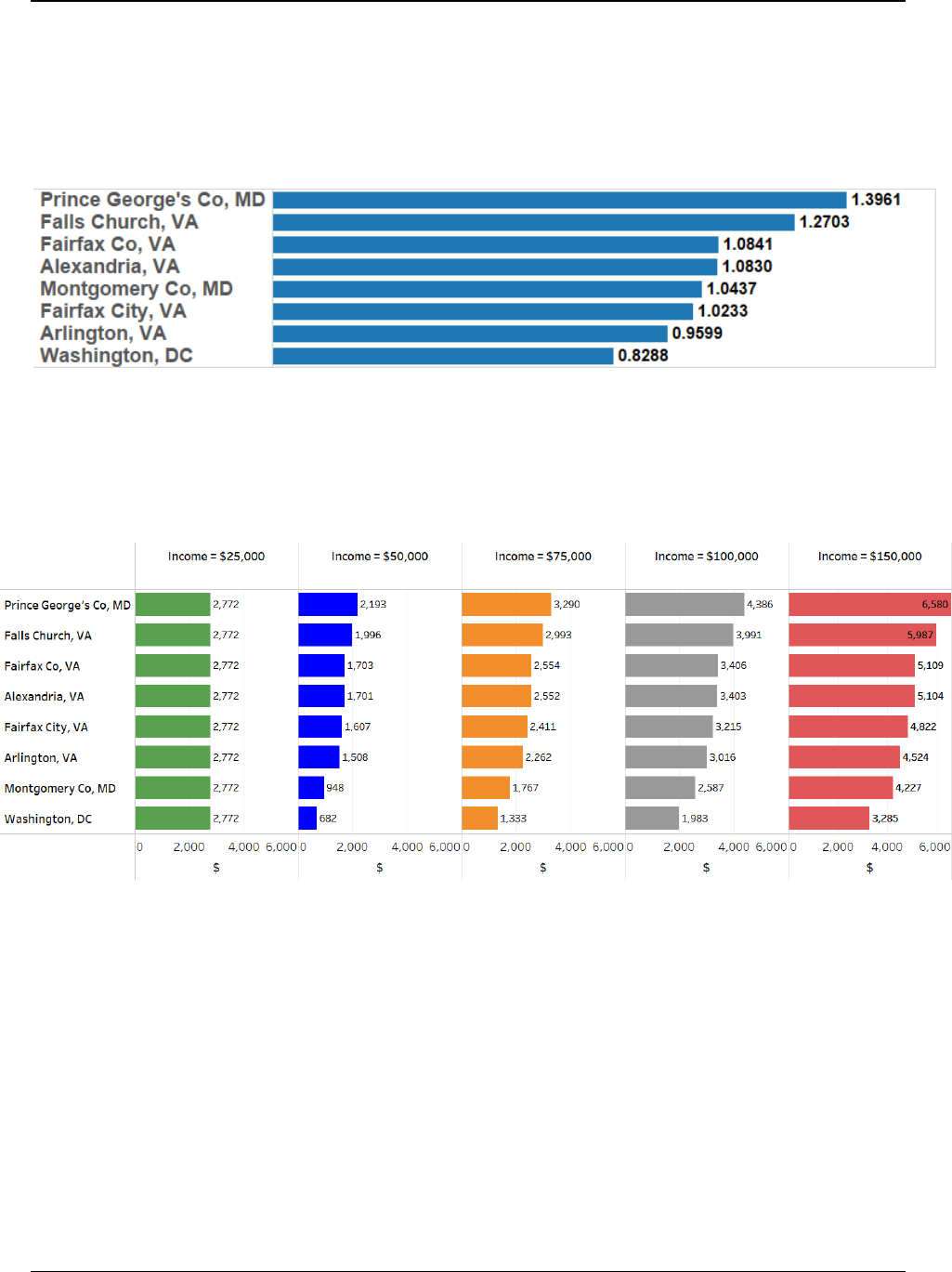
Part I: A Comparison of Tax Burdens in Selected Washington Metropolitan Area Jurisdictions
2019 Tax Rates and Tax Burdens – Washington Metropolitan Area
Page 14
Planning Commission (MNCPPC) tax. Prince George’s County rate includes rates for MNCPPC, transit, and stormwater
districts. Arlington rate includes stormwater fee. All jurisdictions have a statutory assessment level of 100% of market value.
Chart 2: 2019 Washington Metropolitan Area Effective
Property Tax Rates (Per $100 of Assessed Value)
Source: Survey of local revenue officials and local government web sites. Rates as of December 31, 2019 and
presented as effective rates after incorporating median assessment sales ratios.
Chart 3: 2019 Washington Metropolitan Area Real Property
Tax Burdens
Source: ORA.
Notes: Rental tax burden calculated differently. See pages 10-12 for details. A DC property tax credit for renters is
presented with the income tax burdens.
Sales Tax
Sales Tax Calculations
The sales tax burdens differ among the jurisdictions because some consumption items
included are taxed at a different rate than the general sales tax rate. Sales tax rates in 2019 for
certain items in the metro area are presented below.

Part I: A Comparison of Tax Burdens in Selected Washington Metropolitan Area Jurisdictions
2019 Tax Rates and Tax Burdens – Washington Metropolitan Area
Page 15
Table 4: Selected Sales Tax Rates
JURISDICTION
GENERAL
RATE
GROCERIES
RESTAURANT
MEALS
ADMISSIONS
DISTRICT OF COLUMBIA
6.0%
Exempt
10.0%
10.25%
MARYLAND
6.0%
Exempt
6.0%
10.0%
VIRGINIA
6.0% 1/
2.5% 1/
6.0%-10.0%
2/
1/ Combined local and state rate.
2/ There is no state tax on admissions in Virginia; however, Alexandria does levy a 10% admissions tax, not to exceed $0.50/person.
The estimated sales tax burdens for hypothetical households at each of the five income
levels are reported in Table 6, page 19. These burdens are derived by applying local and state
sales tax rates to data on average 2019 levels of consumption for various items by income level
provided by the U.S. Bureau of Labor Statistics in the Consumer Expenditure Survey (CES). The
average expenditures by income level have been adjusted for a 3-person household. It is
important to note that the sales tax burdens will be a function of the size of the sales tax base in a
particular jurisdiction and the specific sales tax rates that apply to the consumer items included.
The same CES categories have been included since the 2013 Tax Burden Study and
include: food (at home); food (away from home); over-the-counter drugs; housekeeping supplies,
household furnishings, and equipment; apparel and footwear; new and used cars and trucks;
vehicle finance charges, maintenance and repairs, and insurance; vehicle rentals, leases, and
licenses and other charges; public and other transportation; entertainment: fees and admissions,
audio visual equipment and services, and reading; and personal care products and services.
14
Factoring in both state and local sales tax rates for the jurisdictions in this study,
Maryland, DC, and Virginia had the same general sales tax rate of 6.0 percent at the end of 2019.
The District has higher rates for alcoholic beverages, restaurant meals, parking, and hotel rooms,
than do Maryland and Virginia.
15
The District, like Maryland, exempts all non-snack food
purchased in grocery stores from the general sales tax. Virginia levies a 2.5 percent sales tax on
all food purchased in grocery stores.
Residential usage of utilities is not in the general sales and use tax base in the District and
the State of Maryland, and gas, electricity, or water delivered to consumers through mains, lines
or pipes are not subject to the sales tax in Virginia. Further, utility taxes levied by Montgomery
and Prince George's Counties are not accounted for in the tax burden calculations. While
Montgomery County's energy tax is levied upon the distributor, its cost is effectively borne by
14
In cases where a category includes items that are both taxed and not taxed, such as “drugs” which includes both
prescription and over the counter (OTC) drugs, the expenditure amount is divided by two before applying the tax
rate of the item that is taxed (For example, states often tax OTC drugs but not prescription drugs. Similarly, states
often tax personal care products, but not personal care services.)
15
The District’s general sales tax rate increased from 5.75 to 6 percent on October 1, 2018.

Part I: A Comparison of Tax Burdens in Selected Washington Metropolitan Area Jurisdictions
2019 Tax Rates and Tax Burdens – Washington Metropolitan Area
Page 16
the customer. Prince George's County sets the tax rates annually based on a formula driven by
total consumption and revenue for each type of energy in prior years.
Sales Tax Burdens
The District’s sales tax burden is just above the metro area average (excluding DC) at
each income level. The District sales tax burdens generally are higher than those in Maryland but
tend to be lower than those in Virginia at the $25,000/year income level (except in Fairfax
County, which is lower than the District). The District has the highest sales tax burdens of all the
jurisdictions at the $50,000, $75,000, and $100,000 and $150,000-income levels, while the
Virginia jurisdictions were the highest for the $25,000 income level. As noted above, the general
sales tax rate in the District of Columbia is 6 percent (the same as Maryland and Northern
Virginia’s state plus local general rates). However, each jurisdiction has a multiple rate system in
which sales tax rates on items such as food consumed away from home and rental vehicles are
higher than the general rate, thus the tax burdens calculated for this study differ from one
another.
Automobile Tax
The taxes related to ownership of automobiles include the gasoline tax, motor vehicle
registration fees, and, where applicable, personal property taxes. The assumptions used to
calculate the automotive tax burdens are shown in Table 5, page 17.
Virginia localities are the only area jurisdictions that levy a personal property tax on
automobiles. The personal property tax rates for the seven Virginia jurisdictions included in this
study vary from $3.70 to $5.33 per $100 of value and are presented in Table 8 (page 25). Since
1999, the Commonwealth of Virginia has reimbursed all localities in Virginia for the vehicle
portion of the Personal Property Tax as part of the Personal Property Tax Relief Act (PPTRA).
From 2002 to 2005, the reimbursement amount was 70 percent of the first $20,000 of a vehicle’s
assessed tax bill. Beginning in 2007, Virginia began to reimburse localities a fixed amount based
on the 2004 level of state reimbursement. Unless the General Assembly provides additional
funding, that reimbursement is not expected to increase, and with no increases, it will cover a
gradually decreasing portion of the tax on vehicles. For 2019, the reimbursement to Alexandria
covered 53 percent of the tax bill for vehicles with assessed values between $1,000 and $20,000.
In Arlington County, vehicles that are valued at $3,000 or less, and are PPTR eligible, have no
tax liability and pay only an annual decal fee. For vehicles with assessed values between $3,000
and $20,000, the Arlington County reimbursement covered 28 percent of the tax bill. In Fairfax
County, the resident’s tax bill was reduced by 60 percent on the assessed value between $1,000
to $20,000.
The basis for assessing the tax also differs among the Virginia area jurisdictions.
Alexandria, Fairfax County, and Falls Church use the vehicle’s trade-in value; the clean loan
value is used in Arlington County. For both methods, however, values are obtained from the
National Automobile Dealers Association Used Car Pricing Guide.

Part I: A Comparison of Tax Burdens in Selected Washington Metropolitan Area Jurisdictions
2019 Tax Rates and Tax Burdens – Washington Metropolitan Area
Page 17
The District of Columbia’s registration fee is the highest in the metropolitan area. In the
District, the annual fee for a vehicle weighing less than 3,500 pounds (Class I) is $72; for
vehicles weighing 3,500 pounds to 4,999 pounds (Class II), the fee is $115; for vehicles 5,000
pounds and over (Class III), the fee is $155; and for Class IV, clean fuel or electric vehicle, the
fee is $36 (See Table 15, page 41). For tax year 2019, Maryland’s fees are slightly lower than the
District’s; the fee for vehicles less than 3,700 pounds is $135 for two years ($67.50 for one year),
and for vehicles over $3,700 pounds it is $187 for two years ($93.50 for 1 year).
The District of Columbia gasoline tax rate of 23.5 cents per gallon at the end of 2019 is
lower than the rate in both Maryland and Virginia.
16
Effective July 1, 2013, Virginia’s state
gasoline tax rate changed from 17.5 cents per gallon to 3.5 percent of the statewide average
wholesale price per gallon. In 2019, this equated to 16.8 cents per gallon (including a 0.6 cents
per gallon storage tank fee). In addition, since 2018 there is now a Virginia Motor Vehicle Fuel
Sales tax which adds 7.6 cents per gallon. There is also a special 2.1 percent sales tax levied by
all the Northern Virginia jurisdictions, making the total tax used in this study 30.12 cents per
gallon. In 2015, Maryland’s gas tax increased from 23.5 cents per gallon to 32.1 cents per gallon
and has further increased to 36.79 cents per gallon at the end of 2019.
Table 5: Automobile Tax Assumptions 2019
Market
Values
Estimated
Estimated
Engine
Mileage
Annual
Income
Size
Retail
Trade-In
Loan
Per
Gasoline
Level
Description of
Auto
Liters 1/
Weight
2/
Year
Price 2/
Value 2/
Value 2/
Gallon 1/
Usage 3/
$ 25,000
Sedan, 4 Door
1.8
2,920 lbs.
2016
$13,575
$10,300
$13,439
29
517 gallons
4-cylinder, Auto
$ 50,000
Sedan, 4 Door
1.4
2,930 lbs.
2018
$14,100
$10,950
$13,959
34
441 gallons
4 Cylinder, Manual
$ 75,000
Sedan, 4 Door
2.5
3,340 lbs.
2018
$20,175
$16,400
$19,973
33
455 gallons
4 Cylinder, Automatic
4WD Utility, 4 Door
3.5
4,464 lbs.
2013
$18,050
$14,875
$17,870
19
395 gallons*
6 Cylinder, Automatic
$100,000
Sedan, 4 Door
2.5
3,906 lbs.
2018
$22,925
$18,725
$22,696
30
500 gallons
6 Cylinder, Automatic
4WD Utility, 4 Door
3.5
4,697 lbs.
2013
$17,675
$14,250
$17,498
20
375 gallons*
6 Cylinder, Automatic
$150,000
Sedan, 4 Door
2.0
3,814 lbs.
2019
$54,220
$50,580
$53,678
25
600 gallons
6 Cylinder, Automatic
AWD Utility, 4 Door
3.5
4,095 lbs.
2015
$18,550
$15,150
$18,365
24
313 gallons*
6 Cylinder, Automatic
1/ Gas Mileage Guide, EPA fuel economy estimates for city driving, US Department of Energy. http://www.fueleconomy.gov/
2/ National Automobile Dealers Association Used Car Guide. http://www.nadaguides.com
3/ Assumes 15,000 miles driven for primary car; 7,500 for secondary car (secondary car denoted with an asterisk).
16
A surcharge went
into effect for fiscal year 2021. The surcharge will be $0.103 per gallon, and will be increased annually, beginning on
October 1, 2022, by the cost-of-living adjustment

Part I: A Comparison of Tax Burdens in Selected Washington Metropolitan Area Jurisdictions
2019 Tax Rates and Tax Burdens – Washington Metropolitan Area
Page 18
Auto Tax Burdens
Virginia localities have the highest auto tax burdens at all income levels, with Fairfax
City ranking highest at all levels except the $150,000 level, where Arlington is highest. DC has
the lowest auto tax burdens at all levels, with Montgomery and Prince George’s Counties in
Maryland ranking sixth and seventh at all levels. The District and Maryland jurisdictions do not
levy a personal property tax on automobiles, as do Virginia localities.
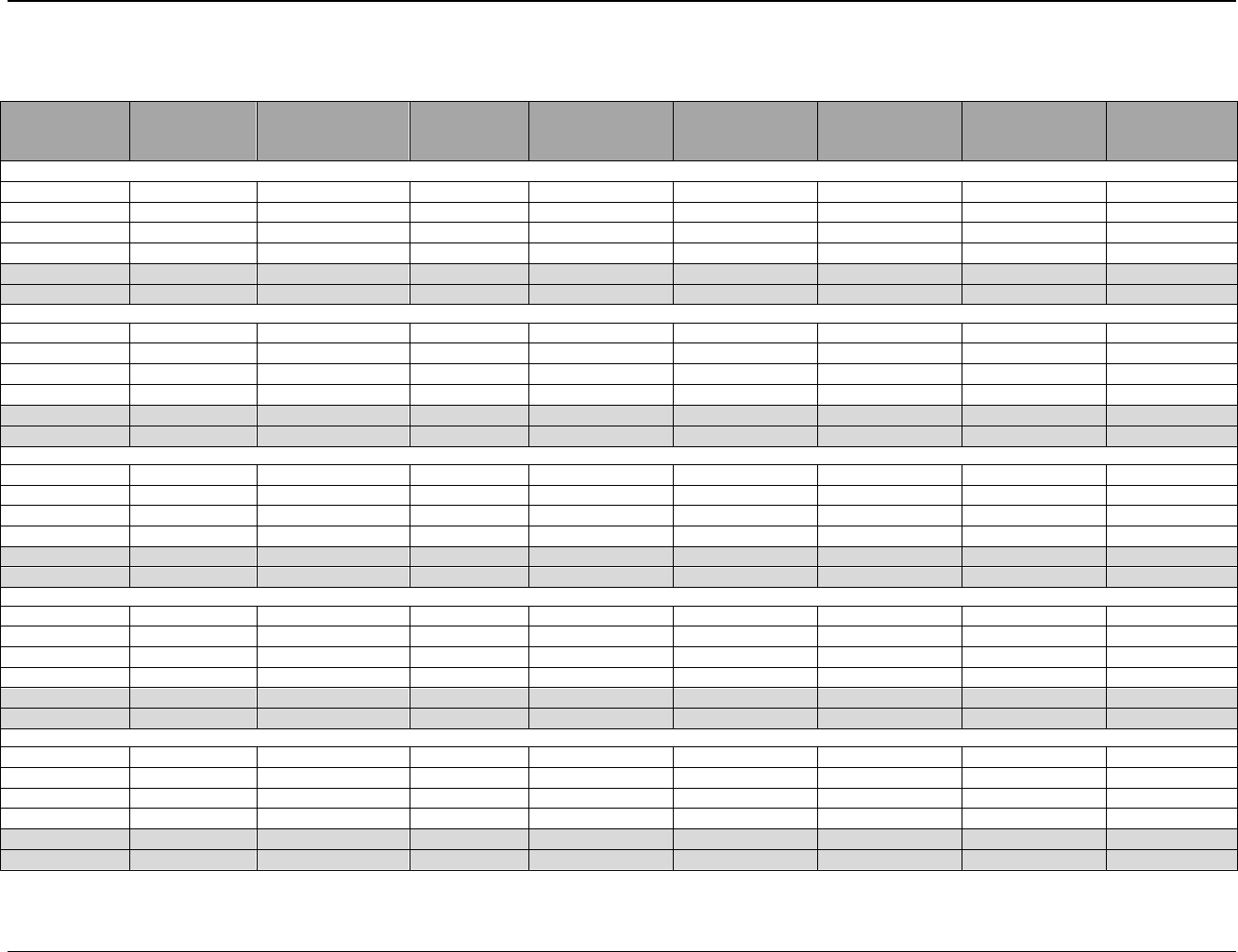
Part I: A Comparison of Tax Burdens in Selected Washington Metropolitan Area Jurisdictions
2019 Tax Rates and Tax Burdens – Washington Metropolitan Area
Page 19
Table 6: 2019 Major State & Local Tax Burdens for a Family of Three
In Selected Washington Metropolitan Area Jurisdictions
TAX
DISTRICT
OF
COLUMBIA
MONTGOMERY
COUNTY
PRINCE
GEORGE’S
COUNTY
ALEXANDRIA
ARLINGTON
COUNTY
FAIRFAX
COUNTY
FAIRFAX
CITY
FALLS
CHURCH
$25,000 INCOME LEVEL
Income 1/
-2572
-526
-526
0
0
0
0
0
Real Property
2,772
2,772
2,772
2,772
2,772
2,772
2,772
2,772
Sales and Use
945
844
853
954
954
840
954
954
Automobile
193
258
258
419
595
389
645
470
TOTAL
1,339
3,348
3,357
4,145
4,321
4,001
4,371
4,196
RANK
8
7
6
4
2
5
1
3
$50,000 INCOME LEVEL
Income
1,338
2,704
2,704
1,940
1,940
1,940
1,940
1,940
Real Property
682
948
2,193
1,701
1,508
1,703
1,607
1,996
Sales and Use
1,115
992
1,004
1,111
1,111
967
1,111
1,111
Automobile
176
230
230
413
591
378
649
466
TOTAL
3,311
4,874
6,132
5,165
5,150
4,989
5,307
5,512
RANK
8
7
1
4
5
6
3
2
$75,000 INCOME LEVEL
Income
2,891
4,691
4,691
3,377
3,377
3,377
3,377
3,377
Real Property
1,333
1,767
3,290
2,552
2,262
2,554
2,411
2,993
Sales and Use
1,370
1,228
1,250
1,294
1,294
1,135
1,294
1,294
Automobile
387
475
475
1,056
1,535
923
1,680
1,194
TOTAL
5,980
8,161
9,706
8,278
8,467
7,990
8,762
8,858
RANK
8
7
2
3
5
6
4
1
$100,000 INCOME LEVEL
Income
4,827
6,679
5,311
4,155
4,193
4,150
4,131
4,128
Real Property
1,983
2,587
4,386
3,403
3,016
3,406
3,215
3,991
Sales and Use
1,643
1,481
1,514
1,530
1,530
1,341
1,530
1,530
Automobile
436
510
510
1,148
1,627
962
1,758
1,250
TOTAL
8,889
11,257
11,721
10,235
10,366
9,859
10,633
10,899
RANK
8
7
2
3
6
5
4
1
$150,000 INCOME LEVEL
Income
8,745
8,675
8,488
6,471
6,518
6,458
6,371
6,383
Real Property
3,285
4,227
6,580
5,104
4,524
5,109
4,822
5,987
Sales and Use
2,030
1,842
1,893
1,826
1,826
1,607
1,826
1,826
Automobile
445
524
524
2,987
3,256
2,411
3,122
2,195
TOTAL
14,505
15,268
17,484
16,388
16,124
15,585
16,142
16,391
RANK
8
7
1
3
5
6
4
2
Source: ORA Analysis. Note: Numbers may not add to totals due to rounding.
1/ Negative numbers result from refundable income tax credits.
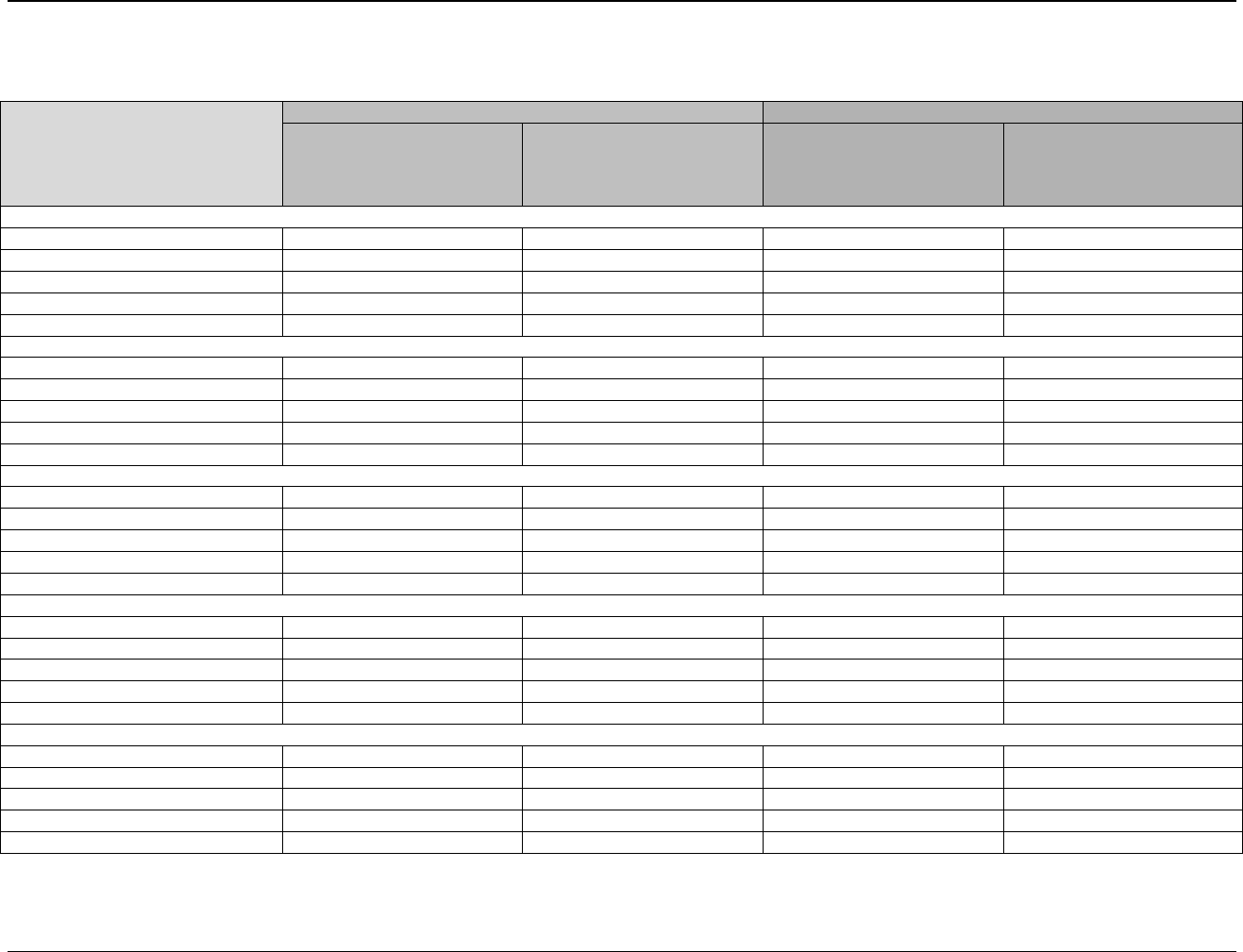
Part I: A Comparison of Tax Burdens in Selected Washington Metropolitan Area Jurisdictions
2019 Tax Rates and Tax Burdens – Washington Metropolitan Area
Page 20
Table 7: Summary of Average Tax Burdens for Selected Washington
Metropolitan Area Jurisdictions and DC, 2019
INCOME
TAX BURDENS
PERCENT OF INCOME
AREA
AVERAGE
(excluding DC) 1/
$
DISTRICT
OF
COLUMBIA
$
AREA
AVERAGE
(excluding DC) 1/
%
DISTRICT
OF
COLUMBIA
%
OVERALL BURDEN
$ 25,000
3,963
1,339
15.85%
5.35%
$ 50,000
5,304
3,311
10.61%
6.62%
$ 75,000
8,603
5,980
11.47%
7.97%
$100,000
10,710
8,889
10.71%
8.89%
$150,000
16,197
14,505
10.80%
9.67%
INDIVIDUAL INCOME
$ 25,000
(150)
(2, 572)
-0.60%
-10.29%
$ 50,000
2,158
1,338
4.32%
2.68%
$ 75,000
3,752
2,891
5.00%
3.85%
$100,000
4,678
4,827
4.68%
4.83%
$150,000
7,052
8,745
4.70%
5.83%
REAL PROPERTY
$ 25,000
2,772
2,772
11.09%
11.09%
$ 50,000
1,665
682
3.33%
1.36%
$ 75,000
2,547
1,333
3.40%
1.78%
$100,000
3,429
1,983
3.43%
1.98%
$150,000
5,193
3,285
3.46%
2.19%
SALES AND USE
$ 25,000
908
945
3.63%
3.78%
$ 50,000
1,058
1,115
2.12%
2.23%
$ 75,000
1,255
1,370
1.67%
1.83%
$100,000
1,494
1,643
1.49%
1.64%
$150,000
1,807
2,030
1.20%
1.35%
AUTOMOBILE
$ 25,000
434
193
1.73%
0.77%
$ 50,000
422
176
0.84%
0.35%
$ 75,000
1,048
387
1.40%
0.52%
$100,000
1,109
436
1.11%
0.44%
$150,000
2,145
445
1.43%
0.30%
Source: ORA Analysis. Note: Numbers may not add to totals due to rounding.
1/ Negative numbers result from a refundable Earned Income Tax Credit in DC and MD (and additionally DC has a refundable renter’s property tax credit represented in the
income tax burden).
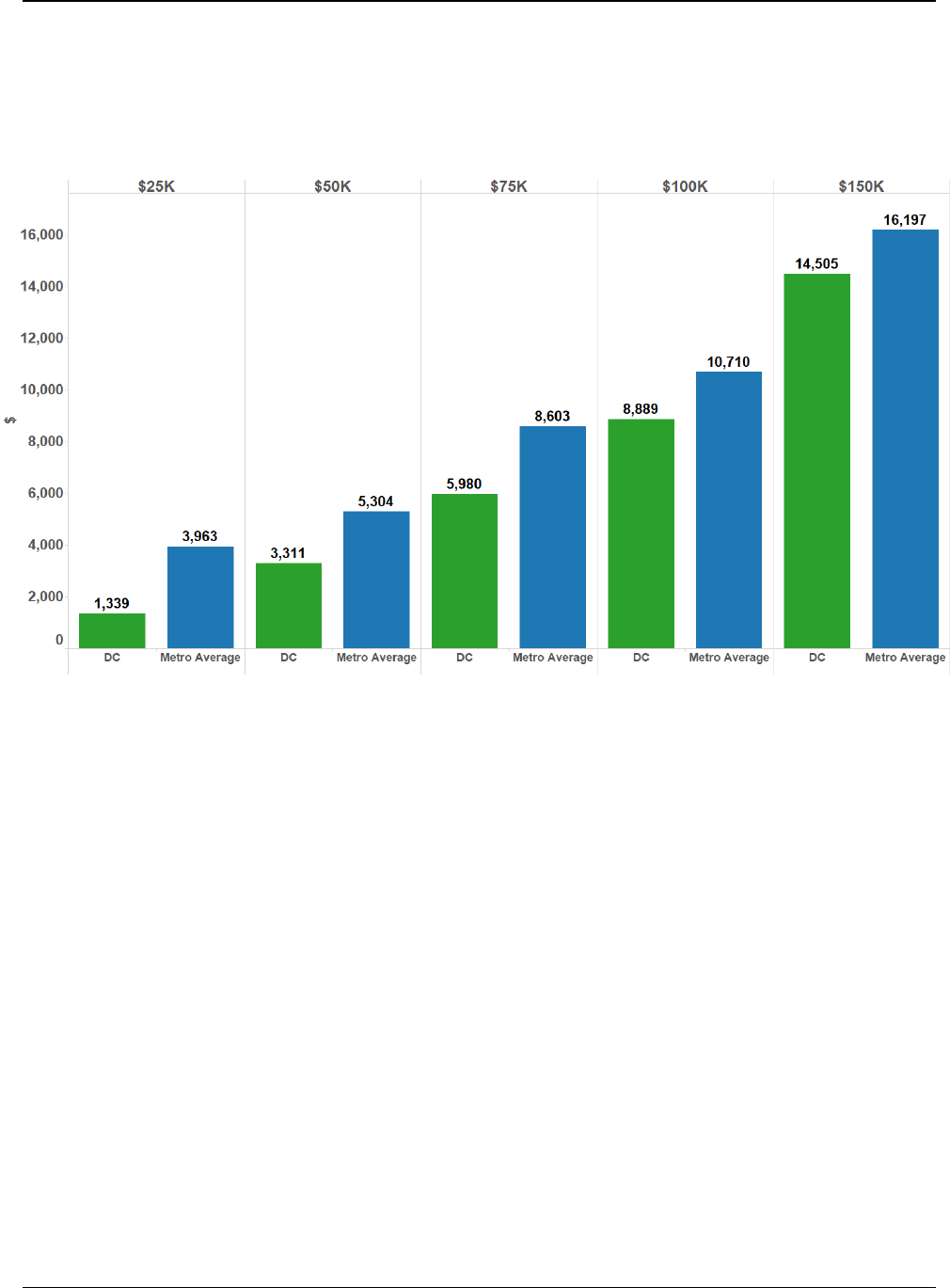
Part I: A Comparison of Tax Burdens in Selected Washington Metropolitan Area Jurisdictions
2019 Tax Rates and Tax Burdens – Washington Metropolitan Area
Page 21
Chart 4: DC’s Combined Tax Burdens Compared
With Average of Other Metro Areas, 2019
Source: ORA.
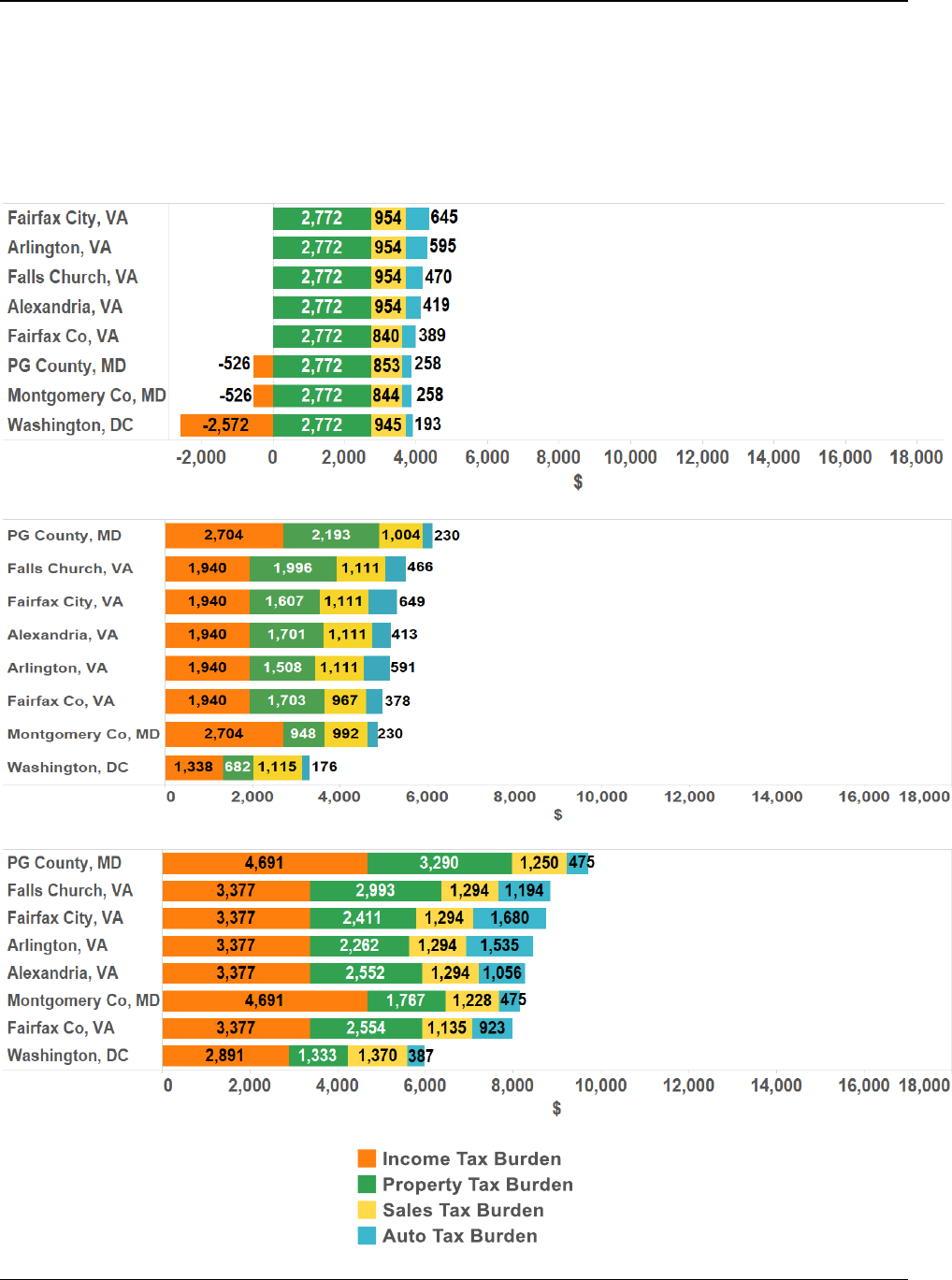
Part I: A Comparison of Tax Burdens in Selected Washington Metropolitan Area Jurisdictions
2019 Tax Rates and Tax Burdens – Washington Metropolitan Area
Page 22
Chart 5: Estimated Tax Burdens for
Five Hypothetical Families, 2019
(Axis scaled to highest income level)
Income = $25,000/Year
Income = $50,000/Year
Income = $75,000/Year
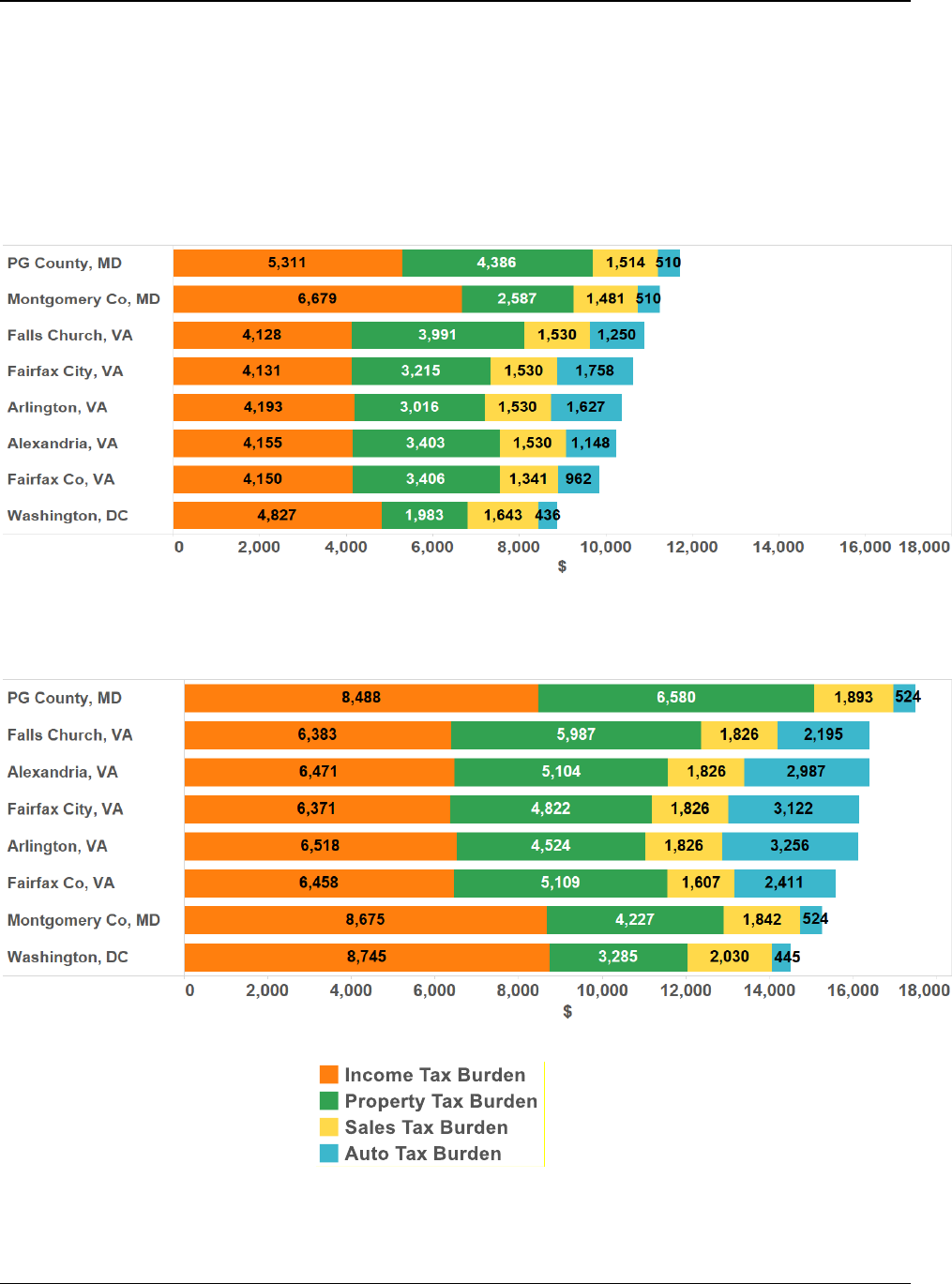
Part I: A Comparison of Tax Burdens in Selected Washington Metropolitan Area Jurisdictions
2019 Tax Rates and Tax Burdens – Washington Metropolitan Area
Page 23
Chart 5: Estimated Tax Burdens for
Five Hypothetical Families, 2019,
Continued
Income = $100,000/Year
Income = $150,000/Year
Source: ORA Analysis. Jurisdictions are sorted by highest combined burden.
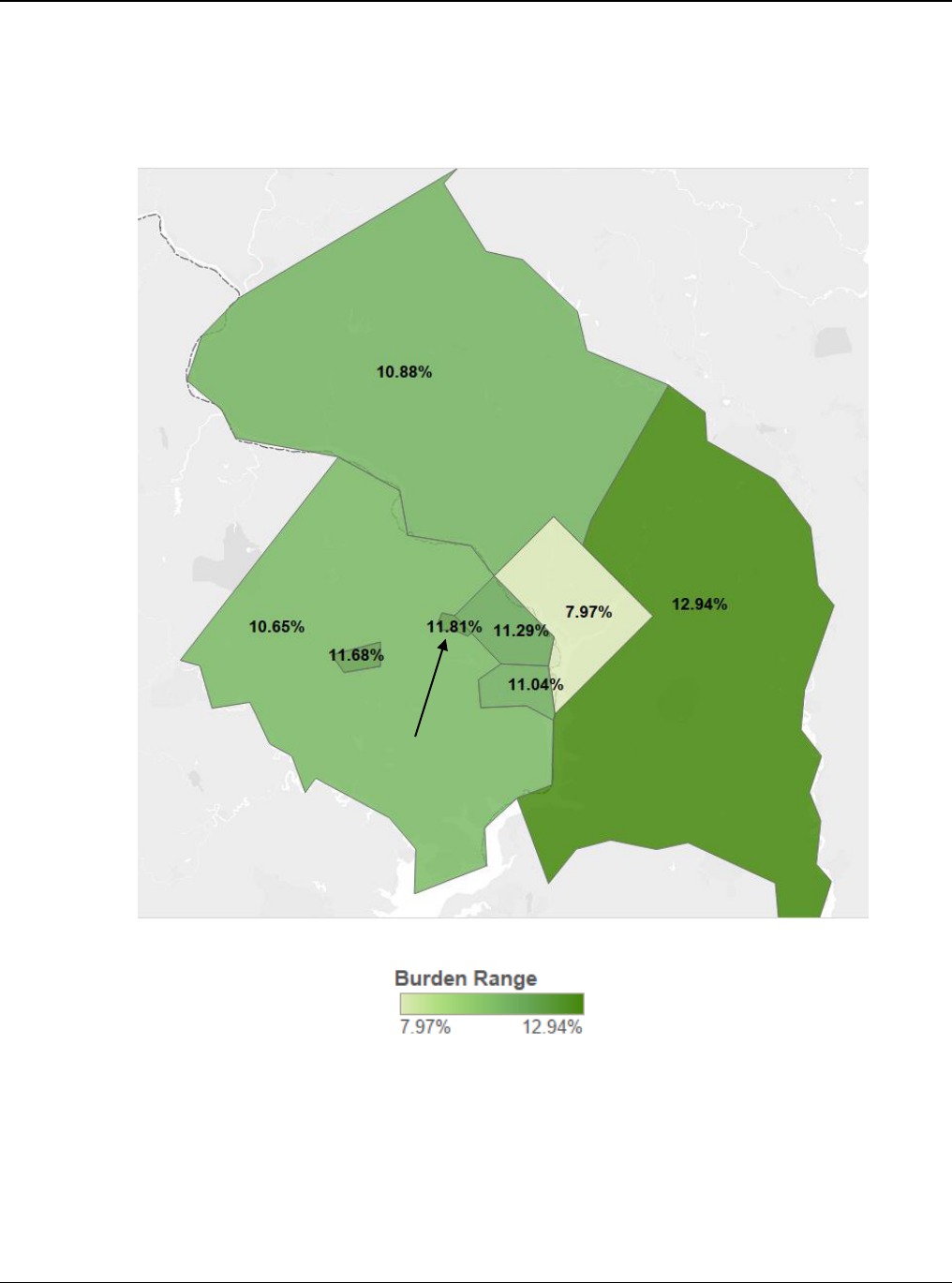
Part I: A Comparison of Tax Burdens in Selected Washington Metropolitan Area Jurisdictions
2019 Tax Rates and Tax Burdens – Washington Metropolitan Area
Page 24
Map 1: Combined 2019 Metropolitan Area Tax Burdens
(Income, Property, Sales, & Auto) as a % of Income (Family
Earning $75,000/Year)
Source: ORA Analysis. Note: The lighter green shading represents a lower tax burden.
DC
Montgomery County
Fairfax County
Alexandria
Falls Church
Arlington
Fairfax City
Prince
George’s
County

Part I: A Comparison of Tax Burdens in Selected Washington Metropolitan Area Jurisdictions
2019 Tax Rates and Tax Burdens – Washington Metropolitan Area
Page 25
Table 8: Selected State and Local Tax Rates in the
DC Metropolitan Area as of December 31, 2019
TAX
DISTRICT
OF
COLUMBIA
CHARLES
COUNTY
1/
MONT-
GOMERY
COUNTY
1/
PRINCE
GEORGE’S
COUNTY 1/
ALEX-
ANDRIA
ARLING-
TON
COUNTY
1/
FAIRFAX
CO.
FALLS
CHURCH
LOU-
DOUN
CO.
PRINCE
WILLIA
M
CO.
FAIRFAX
CITY
PROPERTY
Nominal Rate
(/$100 of value)
$0.850
$1.317
$1.091
$1.465
$1.130
$1.026
$1.18
$1.355
$1.045
$1.208
$1.075
Assessment
Level
100.0%
100.0%
100.0%
100.0%
100.0%
100.0%
100.0%
100.0%
100.0%
100.0%
100.0%
Effective
Assessment level
(incl. Median Sales
Ratio)
97.50%
92.90
95.70%
95.30%
95.84%
93.56%
91.87%
93.75%
91.49%
90.28%
95.19%
Effective Rate
(per $100 of value)
2/
$0.8288
3/
$1.2235
$1.0437
$1.3961
$1.0830
$0.9572
$1.0841
$1.2703
$0.9561
$1.0906
$1.0233
SALES AND USE
General Rate
6.0%
6.0%
6.0%
6.0%
6.0%
4/
6.0%
4/
6.0%
4/
6.0%
4/
6.0%
4/
6.0%
4/
6.0%
4/
INDIVIDUAL
INCOME
(State Rates)
4.0% -
8.95%
2% -
5.75%
2% -
5.75%
2% -
5.75%
2% -
5.75%
2% -
5.75%
2% -
5.75%
2% -
5.75%
2% -
5.75%
2% -
5.75%
2% -
5.75%
(Local Rates)
3.03%
3.2%
3.2%
0%
0%
0%
0%
0%
0%
0%
PERSONAL
PROPERTY 5/
(per $100 of value)
$3.40
6/
$3.01
$2.43
$3.38
$5.33
7/
$5.00
7/
$4.57
7/
$5.00
7/
$4.20
7/
$3.70
7/
$4.13
7/
AUTO REGISTRATION
3,499 lbs. Or less
$72.00
8/
$67.50
$67.50
$67.50
$30.75
9/
$63.75
9/
$63.75
9/
$63.75
9/
$55.75
9/
$63.75
9/
$63.75
9/
3,500 –4,000 lbs.
$115.00
$67.50/
$93.50
$67.50/
$93.50
$67.50/
$93.50
$30.75
9/
$63.75
9/
$63.75
9/
$63.75
9/
$55.75
9/
$63.75
9/
$63.75
9/
4,001– 4,999 lbs.
$115.00
$93.50
$93.50
$93.50
$35.75
9/
$68.75
9/
$73.75
9/
$68.75
9/
$60.75
9/
$68.75
9/
$68.75
9/
Over 4,999 lbs.
$155.00
$93.50
$93.50
$93.50
$35.75
9/
$68.75
9/
$73.75
9/
$68.75
9/
$60.75
9/
$68.75
9/
$68.75
9/
GASOLINE TAX
(Cents/ Gallon)
23.5
10/
36.79
11/
36.79
11/
36.79
11/
30.12
12/
30.12
12/
30.12
12/
30.12
12/
30.12
12/
30.12
12/
30.12
12/
Source: Survey of local government officials and local government web sites.
1/ Real estate rates shown include the Maryland state real property tax rate of 11.2 cents per $100 of assessed value. Rate for
Montgomery County, Maryland is a weighted rate that includes transit tax, fire district tax, municipal district taxes and Maryland -
National Capital Park and Planning Commission (MNCPPC). Prince George’s County rate includes rates for MNCPPC, transit,
and stormwater districts. Arlington rate includes stormwater fee.
2/ Effective tax rates listed here are net of assessment value and include median assessment sales ratios, but do not reflect any exemptions or
credits. See page 12-13 for a discussion of the addition of median assessment sales ratios for this year.
3/ There is a $74,850 homestead exemption for property that is owner-occupied. The exemption amount increased to $75,700 on October 1,
2019 (effective for DC's Real Property Tax Year 2020).
4/ State rate is 5% and local rate is 1%.
5/ Effective rate per $100. Applicable to private autos in Northern Virginia jurisdictions. Also, boats, trailers, and motorcycles.
6/ First $225,000 of value is exempt from tax.
7/ Fairfax City, and Arlington, Fairfax, and Loudon Counties use the NADA Used Car Guide clean trade-in value as basis for assessing tax.
Alexandria uses the loan value.
8/ Class IV, clean fuel or electric vehicle, the fee is $36.
9/ Includes $30.75 state registration fee for vehicles 4,000 pounds or less; $35.75 for vehicles over 4,000 pounds.
10/ The tax is 8 percent of the average wholesale price of a gallon of regular unleaded gasoline. The floor on the wholesale price for the
calculation of the tax is $2.94, or 23.5 cents per gallon. This is the average wholesale price in effect as of October 1, 2019. As of Oct. 1, 2020, there is a
surcharge of $0.053 per gallon, which will increase to $0.103 per gallon Oct. 1, 2022, and increase annually thereafter with a cost of living adjustment.
11/ This represents a combined rate of the motor fuel tax and the sales and use tax equivalent (SUTE).
12/ In December 2019, the fuel tax in Virginia was $0.162/gallon, plus a $0.006/gal storage tank fee, plus a $0.076 state MV excise tax. There is
an additional 2.1 percent sales tax on the total sales price, which based on a sales price of $2.61/gal in December 2019, brings the state +
local total gas tax in Virginia to $0.3012/gal. Note: The fuel tax increased from $0.162/gal to $0.212/gal on July 1, 2020.

Part I: A Comparison of Tax Burdens in Selected Washington Metropolitan Area Jurisdictions
2019 Tax Rates and Tax Burdens – Washington Metropolitan Area
Page 26
Table 9: Demographic Statistics for Selected
Metropolitan Area Jurisdictions, 2019
DC
Montgomery
County
Prince
George’s
County
Alexandria
Arlington
County
Fairfax
County
2019 Total Population 1/
705,749
1,050,688
909,327
159,428
236,842
1,147,532
Number of Households
291,570
368,897
316,361
71,005
111,887
400,186
Average Household Size
2.29
2.83
2.81
2.23
2.08
2.84
Number of Married
Couples with Own
Children <18
27,589
93,053
50,153
10,739
18,282
109,626
Households w/ children
<18
47,438
118,203
80,298
15,570
22,502
129,150
Owner-Occupied
Housing Rate
41.5%
64.8%
62.6%
44.6%
41.8%
67.4%
Median Value - Owner
Occupied Units w/ a
Mortgage
643,800
497,500
337,700
581,800
761,800
583,600
Median Gross Rent
1,603
1,788
1,469
1,781
1,993
1,900
Median Household
Income
92,266
110,389
86,290
103,284
119,755
128,374
Median Family Income
130,291
135,141
100,654
138,441
160,454
151,028
Poverty Rate,
(Population for whom
Poverty Status is
determined)
13.5%
7.4%
8.6%
8.6%
8.6%
6.0%
School System
Enrollment (3 years and
over)
169,418
266,131
233,171
31,328
52,004
299,576
% High School Graduate
or Higher
91.9%
90.2%
86.6%
95.7%
94.5%
92.7%
Population >16 in Labor
Force
587,819
836,379
728,050
133,122
197,403
910,302
Number of Government
Workers (federal, state,
and local)
96,542
122,240
118,633
26,227
38,095
126,476
Unemployment Rate
(June 2019) 2/
5.9%
3.3%
4.1%
2.2%
2.0%
2.4%
Source: All figures from U.S. Census Bureau, 2019 American Community Survey 1-Year Estimates, unless otherwise noted.
1/ Total Population from: U.S. Census Bureau, Population Division; Annual Estimates of the Resident Population: April 1,
2010 to July 1, 2019. Release date May 2019.
2/ U.S. Bureau of Labor Statistics. “Unemployment in the Washington Area by County – June 2019.”
Retrieved from: https://www.bls.gov/regions/mid-atlantic/news-release/2019/unemployment_washingtondc_20190814.htm

2019 Tax Rates and Tax Burdens – Washington Metropolitan Area
Page 27
Part II
A Comparison of Tax Rates in
the Washington Metropolitan
Area as of January 1, 2020
(Unless otherwise noted)

Part II: A Comparison of Tax Rates in the Washington Metropolitan Area as of January 1, 2020
2019 Tax Rates and Tax Burdens – Washington Metropolitan Area
Page 28
ALCOHOLIC BEVERAGE TAX
District of Columbia
The tax is imposed on all alcoholic beverages manufactured by a holder of a
manufacturer’s license and on all alcoholic beverages brought into the District by the holder of a
wholesaler’s or retailer's license.
Maryland
The tax is imposed on all alcoholic beverages sold by manufacturers and wholesalers to
retail dealers and sold by out-of-state dealers to wholesalers. The tax also applies to seized
liquors.
Virginia
The tax is imposed on the sale of all alcoholic beverages in Virginia. Persons who have a
mixed beverage carrier license are subject to tax on mixed drinks sold.
Table 10: Metropolitan Area Tax Rates on Alcohol
ITEMS
DISTRICT OF
COLUMBIA 1/
MARYLAND 1/
VIRGINIA 2/
Beer (per barrel)
$2.79
$2.79
$8.06
Spirits (per gallon)
1.50
1.50
20%
of retail price
Wine (per gallon)
14% or less alcohol
More than 14% alcohol
.30
.40
.40
.40
1.51 3/
1.51 3/
Champagne and Sparkling
Wine (per gallon)
.45
.40
1.51 3/
Source: Survey of local government officials and local government web sites.
1/ An additional 10.25% and 10% sales tax applies in DC, off-and on-premises, respectively, and an additional 9% sales tax
applies in MD.
2/ Sales at ABC Stores in Northern Virginia are subject to the 6.0% sales tax rate in addition to the rate listed.
3/ Some localities may apply additional tax. In addition, state sales tax applies. This includes a $.40 per liter wine tax, and 6%
state sales tax (state sales tax plus local sales tax) applied at ABC stores in Northern Virginia and Hampton Roads. Wines with
under 4% alcohol: $0.2565/gallon.

Part II: A Comparison of Tax Rates in the Washington Metropolitan Area as of January 1, 2020
2019 Tax Rates and Tax Burdens – Washington Metropolitan Area
Page 29
CIGARETTE TAX
District of Columbia
The District's cigarette tax is imposed on the sale or possession of all cigarettes in the
District. Exemptions from the tax are as follows: (1) cigarette sales to or by the federal or District
governments; (2) possession of cigarettes by licensed wholesalers for sale outside the District or
to licensed wholesalers; (3) possession of cigarettes bearing stamps of other jurisdictions by
vending machine operators who are licensed in the other jurisdictions; (4) possession by a
consumer of up to 200 cigarettes which were transported into or manufactured in the District by
the consumer; and (5) possession of cigarettes being transported under conditions such that the
cigarettes are not deemed to be contraband.
Maryland
The Maryland tax is imposed on all cigarettes possessed or held in the state by any
person. Cigarettes for sale to Army, Air Force, Navy, or Coast Guard exchanges or commissaries
are exempt.
Virginia
The Virginia tax is imposed upon the sale, storage or receipt of cigarettes for purposes of
distribution within the state. In addition to the state tax, certain Virginia localities impose a
cigarette tax. An exemption from taxation is provided for the free distribution of sample
cigarettes in packages containing five or fewer cigarettes and for cigarettes customarily donated
by manufacturers to cigarette factory employees (where such cigarettes are not subject to federal
taxation).
Table 11: Metropolitan Area Tax Rates per 20 Cigarettes
JURISDICTION
STATE
LOCAL
COMBINED RATE
District of Columbia
$4.98 1/
----
$4.98
Maryland
$2.37 2/
----
$2.37
Virginia
$0.54 3/
----
----
Alexandria
$1.26
$1.80
Arlington County
$0.30
$0.84
Fairfax
$0.85
$1.39
Fairfax County
$0.30
$0.84
Falls Church
$0.85
$1.39
Prince William County
$0.00
$0.54
Source: Survey of local government officials and local government web sites.
1/ Includes a per pack surtax in lieu of a retail sales tax calculated every March 31. The current rate is 48 cents.
2/ Includes retail sales tax ($0.37 per pack).
3/ Tax increased to $0.60/per pack on July 1, 2020. Includes retail sales tax ($0.24 per pack).

Part II: A Comparison of Tax Rates in the Washington Metropolitan Area as of January 1, 2020
2019 Tax Rates and Tax Burdens – Washington Metropolitan Area
Page 30
FINANCIAL INSTITUTION TAXES
District of Columbia
Financial institutions are subject to the corporate franchise tax. The franchise tax has
been reduced from 9.2 percent on January 1, 2016 to 8.25 percent for tax year 2018 and
thereafter. The minimum tax payable is $250 if gross receipts are less than $1 million. If District
gross receipts are greater than $1 million, the minimum tax payable is $1,000. Financial
institutions in the District are not subject to single sales factor apportionment, rather they have a
special formula.
Maryland
In the past, Maryland imposed a franchise tax on the net earnings of financial institutions
in lieu of the Maryland Corporate Income Tax. Financial institutions formerly subject to the
financial institution franchise tax are now subject to the corporate income tax, with special
apportionment rules based on a three-factor formula of property, payroll, and receipts. Financial
institutions are not subject to personal property taxes except on property leased to others.
Virginia
The Commonwealth of Virginia imposes a tax on the net taxable capital of banks and
trust companies at the rate of $1 per $100 of net capital, with a prorated schedule for new banks.
Net capital is determined in two steps. First, capital, surplus, and undivided profits of the
institution are added. Next, the following are subtracted from this amount: the assessed value of
real estate; the book value of tangible personal property; the pro rata share of government
obligations; the capital accounts of any bank subsidiaries; the amount of any reserve for loan
losses allowed by the Internal Revenue Service for income tax purposes (which amount is
included in the definition of capital, surplus and undivided profits); and the amount of any
reserve for marketable securities valuation that is included in capital, surplus and undivided
profits to the extent that such reserve reflects the difference between the book value and the
market value of such marketable securities. On July 1, 2016, an $18 million cap was set on the
maximum total annual bank franchise tax liability per bank; the cap will increase to $20 million
if at least 5 banks pay the maximum tax for 3 consecutive calendar years, and it will increase by
3 percent annually after 2 years at $20 million.
Virginia has authorized its cities and counties to levy a tax not to exceed 80 percent of the
state rate. The counties of Arlington, Fairfax, Loudoun, and Prince William, and the cities of
Alexandria, Fairfax, and Falls Church levy the maximum of 80 cents per $100 of net capital.
The local tax is not in addition to the state tax, but rather creates a redistribution of 80 percent of
the state tax to the localities.

Part II: A Comparison of Tax Rates in the Washington Metropolitan Area as of January 1, 2020
2019 Tax Rates and Tax Burdens – Washington Metropolitan Area
Page 31
INCOME TAXES
CORPORATE FRANCHISE
District of Columbia
Foreign and domestic corporations and financial institutions engaging in a trade or
business within the District or receiving income from District sources are subject to tax. The
franchise tax has been reduced from 9.2 percent on January 1, 2016 to 8.25 percent for tax year
2018 and thereafter. The minimum tax payable is $250 if gross receipts are less than $1 million.
If District gross receipts are greater than $1 million, the minimum tax payable is $1,000.
Businesses that do not operate entirely within the District and/or receive income from
sources not entirely within the District must allocate or apportion their income in accordance
with general allocation or apportionment rules and regulations. Apportionment of business
income is based on a single sales factor effective January 1, 2015. Special formulas may be
applied to businesses where this formula does not fairly represent the corporation's business
within the District and financial institutions. Companies with multiple entities must file a
combined or unitary report and cannot file as a separate entity.
Federal conformity is maintained pursuant to Public Law 105-100.
Maryland
In Maryland a tax is imposed upon the net income of corporations and financial
institutions at the rate of 8.25 percent.
The net income of a corporation is allocated as detailed in state rules and regulations. A
single-sales factor apportionment formula is being phased in beginning in 2018. (In 2017, the
three-factor formula was based on property, payroll, and double-weighted sales. In 2018, a three-
factor formula was based on property, payroll, and triple-weighted sales.) In 2019 the sales factor
was quadruple-weighted; in 2020 the sales factor was quintuple-weighted; in 2021 the sales
factor will be sextuple-weighted; and in 2022 and thereafter a single-sales factor will apply.
Virginia
A tax of 6 percent is imposed on the Virginia taxable income of corporations.
Professional corporations are also subject to the tax. Corporations having income from business
activity taxable both within and outside of Virginia must allocate and apportion their Virginia
taxable income as detailed by state rules and regulations. Multi-state corporate income is
generally apportioned to Virginia by a three-factor formula based on property, payroll, and
double-weighted sales.

Part II: A Comparison of Tax Rates in the Washington Metropolitan Area as of January 1, 2020
2019 Tax Rates and Tax Burdens – Washington Metropolitan Area
Page 32
INCOME TAXES
INDIVIDUAL INCOME
District of Columbia
Individuals who maintain a permanent home in the District at any time during the taxable
year, or who maintain a place of residence for an accumulative total of 183 days or more, are
subject to the individual income tax (see rates in Table 1). Nonresidents who are employed in the
District are not liable for the tax.
Because the District of Columbia selectively conforms to federal provisions, whenever
federal law changes with respect to federal individual income taxation, in many cases District tax
structure mirrors the federal changes automatically. As a result of the 2017 Tax Cuts and Jobs
Act and DC’s federal conformity provisions, DC’s personal exemptions reduced to zero and the
federal standard deduction was increased significantly (in 2019: married filing jointly - $24,400;
head of household - $18,000, single - $12,200; for 2020 see table 1 on page 7). There is an
additional standard deduction $1,300 for age 65+ or blind taxpayers (and/or spouse/registered
domestic partner).
A credit to relieve property tax burdens is provided under the DC income tax law. This
credit, called Schedule H, authorizes qualified homeowners and renters to claim a credit against
their income tax liability, or a refund if no tax is due, for a portion of property taxes or rent paid
when these payments exceed a certain percentage of household income. Renters use 20 percent
of rent paid (property tax equivalent of rent) as the assumed percentage for the District. To
qualify for the credit or refund, the homeowner or renter must have lived in the District the entire
taxable year, and the household income cannot exceed $51,000 ($62,600 if taxpayer is over 70).
For 2019, the income limit increased to $55,000, and the maximum credit was $1,200.
Other personal income tax credits are those for: individual income taxes required to be
paid to another state on income derived from sources outside the District and child and
dependent care (32 percent of federal credit for full-year residents, or qualified expenses divided
by number of months on returns filed for less than calendar year or fiscal year). In addition, the
District has an earned income tax credit. This credit is currently 40 percent of the federal credit
and like the federal credit is refundable, meaning any amount more than tax liability is refunded
to the tax filer.
The District exempts all income of U.S. Senators, Representatives, Presidential
Appointees, and Supreme Court Justices, provided such officials primary residence is not in the
District. Also exempted is the income of personal staff and employees of members of Congress
who remain bona fide residents of the congressperson's home state. Presidential appointees, to be
exempt, must be subject to approval by the Senate and serve at the pleasure of the President.
However, appointees are not exempt if they live in the District on the last day of the taxable year,
even though they meet the other conditions. Congressional staff members are not exempt if their
salaries are paid from committee funds.

Part II: A Comparison of Tax Rates in the Washington Metropolitan Area as of January 1, 2020
2019 Tax Rates and Tax Burdens – Washington Metropolitan Area
Page 33
Maryland
Persons who are Maryland residents on the last day of the tax year, or who have lived in
the state for at least six months, are subject to the individual income tax. In addition,
nonresidents are taxed on income earned in Maryland. Maryland's income tax law about income
and deductions conforms closely to that of the federal government. Individuals carrying on
business in a partnership are responsible for the tax only on their individual shares, that is, no tax
is assessed on the partnership entity.
In addition to the state individual income tax, Charles, Montgomery, Prince George's, and
other Maryland counties impose a local income tax. Until tax year 1998, this local tax
(piggyback) was a share of the state tax. However, effective for tax year 1999, counties levy a
tax using an income tax rate and state taxable income. The local rate generally ranges between
3.2 percent in Montgomery and Prince George’s Counties to 3.03 percent in Charles County.
In addition, Montgomery County passed legislation making it the first local jurisdiction
in the country with a local refundable earned income credit. This credit went into effect for tax
year 1998.
Virginia
Virginia residents are subject to the individual income tax. In addition, nonresidents are
taxed on income earned in Virginia, but a credit is allowed for taxes paid to their home states.
Members of the armed forces are not subject to the tax on their active-duty military income when
stationed in Virginia, if they had no place of domicile in the state. A spouse of a service member
shall neither lose nor acquire a residence or domicile for purposes of taxation with respect to the
person, personal property, or income of the spouse by reason of being absent or present in any
tax jurisdiction of the United States solely to be with the service member in compliance with the
service member’s military orders if the residence or domicile is the same for the service member
and the spouse.
Virginia's income tax law conforms very closely to that of the federal government. The
tax is based on an individual's federal adjusted gross income with modifications, if applicable,
personal exemptions and standard or itemized deductions. In Virginia, as in the District of
Columbia, if taxpayers use itemized deductions on their federal return, they must itemize on their
state return. If they use the standard deduction for federal purposes, then they must use it for
state purposes.
Virginia generally allows the same itemized deductions as the federal government.
However, no deduction is allowed for income taxes imposed by the state or any other taxing
jurisdiction in determining the amount of the taxpayer's income subject to tax. Instead of
allowing a credit for child and dependent care expenses (necessary for gainful employment),
Virginia provides for a deduction equal to the amount allowed under federal law in computing
the child and dependent care credit.

Part II: A Comparison of Tax Rates in the Washington Metropolitan Area as of January 1, 2020
2019 Tax Rates and Tax Burdens – Washington Metropolitan Area
Page 34
Table 1 on page 7 compares tax rates, personal exemption amounts, and deduction
amounts for the District, Maryland, and Virginia as of January 1, 2020.

Part II: A Comparison of Tax Rates in the Washington Metropolitan Area as of January 1, 2020
2019 Tax Rates and Tax Burdens – Washington Metropolitan Area
Page 35
INCOME TAXES
UNINCORPORATED BUSINESS FRANCHISE
District of Columbia
The District's franchise tax on unincorporated businesses is imposed on enterprises with
gross income over $12,000. The franchise tax has been reduced from 9.2 percent on January 1,
2016 to 8.25 percent for tax year 2018 and thereafter. The minimum tax payable is $250 if gross
receipts are less than $1 million. If District gross receipts are greater than $1 million, the
minimum tax payable is $1,000. The tax is payable by the person or persons jointly or severally
conducting the unincorporated business.
Unincorporated businesses pay the franchise tax on 70 percent of net profits, less a
$5,000 exemption. Owners who participate in the operation of the business are allowed 30
percent of the net profit as a salary deduction. When 80 percent or more of income is derived
from services, the unincorporated business income is taxed under the individual income tax.
Maryland
Unincorporated business income is taxed under the individual income tax.
Virginia
Unincorporated business income is taxed under the individual income tax.
Several Virginia jurisdictions also levy a license tax on the gross receipts derived from
various businesses. Table 12 on the following page details the business license tax rates per $100
of gross receipts imposed by metropolitan area jurisdictions on several occupations.

Part II: A Comparison of Tax Rates in the Washington Metropolitan Area as of January 1, 2020
2019 Tax Rates and Tax Burdens – Washington Metropolitan Area
Page 36
Table 12: Unincorporated Business Franchise and Business
License Taxes
OCCUPATION 1/
DISTRICT
OF
COLUMBIA
ALEXANDRIA
2/
ARLINGTON
COUNTY 3/
FAIRFAX
4/
FAIRFAX
COUNTY
4/
FALLS
CHURCH
5/
LOUDOUN
COUNTY 6/
PRINCE
WILLIAM
COUNTY 7/
AMUSEMENTS/
RECREATIONAL SERVICES
8/
$.36/$100
$.25/$100
$.27/$100
$.26/$100
$.36/$100
$30 or
$.21/$100
$.21/$100
BUSINESS SERVICES
8/
$.35/$100
$.35/$100
$.27/$100
$.19/$100
$.36/$100
$30 or
$.17/$100
$.21/$100
PERSONAL SERVICES
8/
$.35/$100
$.35/$100
$.27/$100
$.19/$100
$.36/$100
$30 or
$.23/$100
$.21/$100
PROFESSIONALS
---
$.58/$100
$.36/$100
$.40/$100
$.31/$100
$.52/$100
$30 or
$.33/$100
$.33/$100
REPAIR SERVICES
8/
$.35/$100
$.35/$100
$.27/$100
$.19/$100
$.36/$100
$30 or
$.16/$100
$.21/$100
RETAIL SERVICES
8/
$.20/$100
$.20/$100
$.20/$100
$.17/$100
$.19/$100
$30 or
$.17/$100
$.17/$100
WHOLESALE MERCHANTS
8/
$.05/$100
on gross
purchases
$.08/$100
$.05/$100
on gross
purchases
$.04/$100
on gross
purchases
$.08/$100
$30 or
$.05/$100
on gross
purchases
$.05/$100
on gross
purchases
FILLING STATIONS
8/
$.20/$100
$.10/$100
$.20/$100
$.17/$100
$.19/$100
$30 or
$.17/$100
$.17/$100
CONTRACTORS
8/
$.16/$100
$.16/$100
$.16/$100
$.11/$100
$.16/$100
$30 or
$.13/$100
$.13/$100
VENDING MACHINE SALES
8/
$.20/$100
$.20/$100
$.20/$100
$.17/$100
$.19/$100
$30 or
$.17/$100
$.17/$100
FEDERAL CONTRACTORS
8/
---
9/
$.03/$100
$.03/$100
$.03/$100
$30 or
$.03/$100
---
FINANCIAL AND REAL
ESTATE SERVICES
8/
$.58/$100
10/
$.36/$100
$.40/$100
$.31/$100
$.50/$100
$30 or
$.33/$100
$.33/$100
RENTAL BY OWNER –
RESIDENTIAL
8/
$.50/$100
$.28/$100
$.50/$100
---
$.38/$100
---
---
RENTAL BY OWNER –
COMMERCIAL
8/
$.35/$100
$.43/$100
$.23/$100
$.26/$100
$.52/$100
$30 or
$.16/$100
---
Source: Survey of local government officials and local government web sites.
1/ Categories shown are not a comprehensive listing.
2/ Less than $10,000 gross receipts-no tax; greater than $10,000, but less than $100,000-$50.00 minimum.
3/ Rates apply to businesses having gross receipts exceeding $100,000. Businesses having gross receipts less than $10,000 owe no tax; businesses grossing between
$10,000-$50,000 pay $30.00; between $50,001and $100,000 pay $50.00.
4/ If gross receipts are less than $10,000, there is no fee or license requirement; businesses with gross receipts from $10,001 to $50,000, a flat fee of $30 is assessed;
businesses with gross receipts from $50,001 to $100,000, a flat fee of $50 is assessed; and businesses with gross receipts of $100,001 or greater, the tax rate is
determined by the business classification.
5/ Less than $10,000 gross receipts-no tax; $10,000-$50,000 pays $30.00.
6/ $30 fee when gross receipts are under $200,000. The rate applies to total of gross receipts.
7/ Rates apply to business gross receipts of $250,000 or more for the license year. No license tax shall be imposed when gross receipts are less than $250,000. Rates
are for FY17.
8/ As of January 1, 2018 a rate of 8.25% is imposed on the taxable income of businesses, if not incorporated, with gross receipts over $12,000. A 30% salary allowance
for owners and a $5,000 exemption are deductible from net income to arrive at taxable income.
9/ No separate category for federal contractors, they are taxed according to service provided.
10/ Financial only.

Part II: A Comparison of Tax Rates in the Washington Metropolitan Area as of January 1, 2020
2019 Tax Rates and Tax Burdens – Washington Metropolitan Area
Page 37
INHERITANCE AND ESTATE TAXES
INHERITANCE TAX
District of Columbia
The District of Columbia's inheritance tax was abolished for any deaths after April 1,
1987.
Maryland
Effective for decedents who died on or after July 1, 2000, Maryland does not tax property
passing to a child or other lineal descendant, spouse of a child or other lineal descendant, spouse,
parent, grandparent, stepchild or stepparent, siblings or a corporation having only certain of these
persons as stockholders. The rate of 10 percent applies to property passing to all others.
Virginia
Virginia does not levy an inheritance tax. However, Virginia does levy a tax on the
probate of wills and grants of administration equal to 10 cents per $100 of the value of the estate
more than $15,000. Localities may impose a local probate tax equal to 1/3 of the state probate
tax.
ESTATE TAX
District of Columbia
The estate tax is imposed on the estate of every decedent who died while still a resident
of the District, and on the estate of every nonresident decedent owning property having a taxable
situs in the District at the time of his or her death.
In response to the Federal Economic Growth and Tax Relief Reconciliation Act
(EGTRRA) of 2001, the District decoupled from federal estate tax. By decoupling, the District
chose to create its own estate tax threshold. Hence, some District estate taxpayers may be
required to file and pay District estate taxes even when no federal filing or tax is due. The
District’s estate tax rates are derived from the federal estate tax credit that was available prior to
the enactment of EGTRRA. The highest rate of 16.0 percent applies to estates valued at more
than $10,000,000 (after allowable federal credits are taken).
The FY 2015 Budget Support Act instituted a revenue trigger for implementation of tax
policy changes recommended by the District’s Tax Revision Commission beyond FY 2015, one
of which raised the estate tax threshold from $1 million to $2 million. The FY 2015 Budget
Support Act additionally set a path for the District to recouple with federal estate tax rules. These

Part II: A Comparison of Tax Rates in the Washington Metropolitan Area as of January 1, 2020
2019 Tax Rates and Tax Burdens – Washington Metropolitan Area
Page 38
changes were stipulated upon meeting some revenue triggers that would go into effect before the
increase in the estate tax threshold. This increase in the estate tax threshold from $1 million to $2
million became effective at the beginning of FY 2017.
Effective January 1, 2018, the Estate tax statute was amended to conform with the federal
rules. That is, the estate tax exclusion will be equal to the basic exclusion amount prescribed in
section 2010(c)(3)(A) of the Internal Revenue Code and any cost-of-living adjustments made
pursuant to section 2010(c)(3)(B) of the Internal Revenue Code. The Estate Tax Clarification
Amendment Act of 2018 included in the FY 2019 Budget Support Act of 2018 decoupled the
District of Columbia’s estate tax exclusion threshold from the federal level that was set by Public
Law 115-97, the Tax Cuts and Jobs Act of 2017 at $11.18 million and establishes the District’s
threshold to $5.6 million in 2018. The estate tax threshold will be increased annually, subject to
inflation. Estates of decedents who died January 1, 2020 - December 31, 2020 have an exclusion
amount of $5,762,400
Maryland and Virginia
The Maryland estate tax is based on the maximum credit for state estate taxes allowable
under § 2011 of the Internal Revenue Code as it existed before EGTRRA.
17
The credit used to
determine the Maryland estate tax cannot exceed 16 percent of the amount by which the
decedent’s taxable estate exceeds the Maryland estate tax exemption amount for the year of the
decedent’s death ($5 million).
Legislation enacted by the 2006 General Assembly, House Bill 5018, repeals the Virginia
estate tax for the estates of decedents whose date of death occurs on or after July 1, 2007. The
estates of decedents whose date of death occurs before July 1, 2007 remain subject to the estate
tax provisions.
17
MD Tax-Gen Code § 7-309 (2018)

Part II: A Comparison of Tax Rates in the Washington Metropolitan Area as of January 1, 2020
2019 Tax Rates and Tax Burdens – Washington Metropolitan Area
Page 39
INSURANCE PREMIUMS TAX
District of Columbia
All domestic and foreign insurance companies, except those specified below, pay tax on
the premiums received in lieu of all other taxes, except taxes upon real property. The basis of this
tax is gross premiums received less the following items: dividends paid to policyholders;
premiums received for reinsurance assumed; and returned premiums.
Nonprofit relief associations composed solely of members of the armed services or
employees of the United States, District of Columbia, or of any individual company, as well as
fraternal organizations that issue contracts of insurance exclusively to their own members, are
exempt from the tax.
Maryland
All insurance companies except nonprofit hospital service plan corporations, fraternal
beneficiary associations, and domestic mutual fire insurance companies pay an annual tax on
gross direct premiums. The tax is based on all new and renewal gross premiums allocable to
Maryland. Deductions are allowed for returned premiums, dividends paid to policyholders, and
refunds made to policyholders.
Virginia
A tax is imposed on all insurance companies transacting insurance business in Virginia,
except local mutual fire insurance and fraternal beneficiary companies. The tax replaces all other
taxes, except the tax on real estate and tangible personal property. No tax is imposed on
premiums received by an insurer to provide group insurance for its employees. The basis of the
tax is gross premiums from business in Virginia, except premiums received for reinsurance
assumed from licensed insurance companies. The basis is reduced for premiums returned upon
canceled or reduced policies; however, deduction for dividends paid or deduction for any other
account is not allowed.
Table 13 on the following page presents various insurance premiums tax rates for DC,
Maryland, and Virginia.

Part II: A Comparison of Tax Rates in the Washington Metropolitan Area as of January 1, 2020
2019 Tax Rates and Tax Burdens – Washington Metropolitan Area
Page 40
Table 13: Insurance Premiums Tax Rates
TAX
DISTRICT
OF
COLUMBIA
MARYLAND
VIRGINIA
Life Insurance
Companies
1.70%
2.00%
2.25%
Life Insurance
Special Benefits
1.70%
2.00%
2.25%
Domestic Mutual
Companies
1.70%
2.00%
1.00%
Industrial Sick
Benefit Companies
1.70%
2.00%
1.00%
Workman’s
Compensation
1.70%
2.00%
2.50%
Legal Service
Insurance Companies
---
---
2.25%
Other
2.00%
1/
2.00%
2/
2.25%
3/
Source: Survey of local government officials and local government web sites.
1/ The rate is 2% on accident and health insurance policies, on surplus line brokers, and on health insurance premiums and HMO’s.
2/ The rate is 3% on unauthorized insurers and surplus line brokers.
3/ Includes surplus line brokers.

Part II: A Comparison of Tax Rates in the Washington Metropolitan Area as of January 1, 2020
2019 Tax Rates and Tax Burdens – Washington Metropolitan Area
Page 41
MOTOR VEHICLE TAXES
MOTOR VEHICLE EXCISE
All three jurisdictions impose fees on cars, trucks, buses, and trailers based on weight.
District of Columbia
The District imposes a titling tax based on the manufacturer’s shipping weight at the time
the title is issued at the following rates: up to 3,499 pounds - 6 percent of fair market value;
3,500 pounds to 4,999 pounds – 7 percent of fair market value; and 5,000 pounds and over – 8
percent. Since October 1, 1998, vehicles previously titled by individuals moving into the District
are no longer subject to the motor vehicle excise tax.
Maryland
Maryland imposes an excise tax of 6 percent of fair market value on each motor vehicle
at the time the title is issued.
Virginia
Virginia taxes motor vehicles at the time of sale at 4.15 percent.
MOTOR VEHICLE REGISTRATION
Annual registration fees for the District of Columbia, Maryland, and Virginia are
presented on the following page in Table 14.

Part II: A Comparison of Tax Rates in the Washington Metropolitan Area as of January 1, 2020
2019 Tax Rates and Tax Burdens – Washington Metropolitan Area
Page 42
Table 14: Annual Registration Fees for Passenger Cars
JURISDICTION
WEIGHT
FEES
DISTRICT OF COLUMBIA 1/2/
Vehicles
0 to 3,499 pounds
3,500 to 4,999 pounds
5,000 pounds or more
Motorcycles
Clean fuel or electric vehicle
$ 72.00
$115.00
$155.00
$ 52.00
$ 36.00
MARYLAND
Vehicles
3,700 pounds or less
Over 3,700 pounds
$ 67.50
$ 93.50
VIRGINIA (State)
Vehicles
4,000 pounds or less
Over 4,000 pounds
Electric car
Motorcycles
$ 30.75
$ 35.75
$ 88.20
$ 24.75
Alexandria 5/
Vehicles 3/
Motorcycles
NA 6/
Arlington County
Vehicles 3/
Motorcycles
+$ 33.00
+$ 18.00
Fairfax
Vehicles 3/
Motorcycles
+$ 33.00
+$ 18.00
Fairfax County 4/
Vehicles
4,000 pounds or less
Over 4,000 pounds
Motorcycles
+$ 33.00
+$ 38.00
+$ 18.00
Falls Church 5/
Vehicles
Motorcycles
+$ 33.00
+$ 28.00
Loudoun County 5/
Vehicles 3/
Motorcycles
+$ 25.00
+$ 16.00
Prince William County 5/
Vehicles 3/
Motorcycles
+$ 33.00
+$ 20.00
+ In addition to state rate.
Source: Survey of local government officials and local government web sites.
1/ The fee for motorized bicycles is $25.00.
2/ An additional fee of $35.00 is charged for vehicle inspection every two years.
3/ Flat rate applied regardless of weight.
4/ Businesses and citizens residing in the towns of Vienna, Herndon, and Clifton pay vehicle registration fees set by those jurisdictions in lieu of the Fairfax County
fee.
5/ Taxpayers who satisfy certain household gross income and net worth limitations (these requirements are the same as those applicable to the county's real property
tax relief program) may exempt one vehicle from the annual registration fee.
6/ Decal (registration) fee repealed for Tax Year 2019 and personal property tax increased to $5.33 per $100 of assessed value.

Part II: A Comparison of Tax Rates in the Washington Metropolitan Area as of January 1, 2020
2019 Tax Rates and Tax Burdens – Washington Metropolitan Area
Page 43
MOTOR VEHICLE FUEL TAX
District of Columbia
This tax is imposed on every importer or user of motor vehicle fuels, including gasoline,
diesel fuel, benzol, benzene, naphtha, kerosene, heating oils, all liquefied petroleum gases, and
all combustible gases and liquids suitable for the generation of power for motor vehicles. Fuel
exported from the District is exempt.
Effective October 1, 2013, the District levies the motor fuel vehicle tax at the wholesale
level, equal to 8 percent of the average wholesale price of a gallon of regular unleaded gasoline.
The average wholesale price is calculated, based on the average wholesale rate for regular
gasoline in the Central Atlantic Region (PADD 1B), for adjustment twice a year. As a result, the
tax rate may change each year. The average wholesale price will be determined by the District
and published by February 1 and August 1 of each year. The floor on the wholesale price for the
calculation of the tax is $2.94, or 23.5 cents per gallon. This is the average wholesale price that
was in effect as of October 2019. As of Oct. 1, 2020, there is a surcharge of $0.053 per gallon,
which will increase to $0.103 per gallon Oct. 1, 2022, and increase annually thereafter with a
cost of living adjustment.
Maryland
Every dealer pays a tax on all motor vehicle fuels sold or used in Maryland. Motor
carriers with commercial vehicles having seats for more than nine passengers or having more
than two axles are subject to a tax on the amount of motor fuel used in their operations in
Maryland. Credit is allowed for taxes paid on all motor fuel purchased in Maryland.
Virginia
A motor fuel tax is imposed on all dealers and other persons selling motor fuel in the
Commonwealth. A 2.1 percent sales tax is imposed on retail sales of fuels sold within a city or
county that is a member of any transportation district in which a commuter mass transportation
system is operated.
RATE PER GALLON
DISTRICT
MARYLAND
VIRGINIA
23.5 cents
36.79 cents
1/
30.12 cents
2/
1/ This represents a combined rate of the motor fuel tax and the sales and use tax equivalent (SUTE).
2/ As of December 2019, the rate was 16.2 cents per gallon plus a $0.006/gal storage tank fee and $0.076 Motor Vehicle Excise tax. An
additional 2.1 percent local tax is applied in the Northern Virginia jurisdictions of Alexandria, Arlington County, Fairfax, Fairfax County, Falls
Church, Manassas, Loudoun County, Prince William County, and Stafford County. This is charged by fuel distributors to retail dealers in the
Northern Virginia Transportation District for commuter mass transit systems. This local rate is included in the tax burdens calculated in this
study.

Part II: A Comparison of Tax Rates in the Washington Metropolitan Area as of January 1, 2020
2019 Tax Rates and Tax Burdens – Washington Metropolitan Area
Page 44
PROPERTY TAXES
REAL PROPERTY
District of Columbia
All real and personal property is subject to taxation unless expressly exempt by statute.
The District of Columbia real property tax is based on four classifications:
(a) Class One Property - improved residential real property that contains five or
fewer dwelling units (whether as a row, detached, or semi-detached structure), or
a single dwelling unit owned as a condominium and used exclusively for
non-transient residential dwelling purposes. Improved residential real property
owned by a cooperative housing association also shall be classified as Class One
Property, provided that at least 50 percent of the dwelling units are occupied by
the shareholders or members of the cooperative housing association. The Class
One property tax rate is $0.85 per $100 of taxable assessed value.
Unimproved (vacant) property that abuts and has identical ownership with a Class
One Property also shall be considered Class One Property. A $74,550 homestead
deduction was applied to property that was owner-occupied for 2019. The
homestead deduction increased to $75,700 for 2020.
(b) Class Two Property - improved commercial property. Hotels, motels, and inns are
included in this class. For properties assessed below $5 million the rate is $1.65 per
$100 of assessed value; for properties with assessed values between $5 million and $10
million the rate is $1.77 per $100 on properties; and for properties with assessed values
above $10 million the rate is $1.89.
(c) Class Three Property - vacant real property.
(d) Class Four Property – improved blighted property.
All property in the District is annually assessed at a statutory level of 100 percent of its
estimated market value.
To limit the increase of real property taxes for homeowners, eligible homeowners are
provided an Assessment Cap Credit. The Assessment Cap Credit provides that a real property
tax bill will not increase by more than 10 percent above the prior year’s real property tax bill.
The credit only applies to the principal residence of the property owner (homestead property) and
is based on the total assessment for the dwelling and land associated with the dwelling. Senior
citizens (age 65 and older) now receive additional real property tax relief with the senior
homestead 5 percent cap on real property tax increase that was effective October 1, 2018, as well
as a property tax credit that reduces a qualified property owner's property tax.

Part II: A Comparison of Tax Rates in the Washington Metropolitan Area as of January 1, 2020
2019 Tax Rates and Tax Burdens – Washington Metropolitan Area
Page 45
Maryland
The state property tax rate of 11.2 cents per $100 of assessed market value applies to real
property only. It is imposed annually on all taxable land and improvements. The tax is applied to
an assessed value. (Also, see table 15 below for Maryland county rates applicable in this study.)
The Maryland Department of Assessments and Taxation makes assessments. Real
property for state and county tax purposes is assessed according to a three-year assessment
schedule. A physical review of each property is made every three years. Reassessments are
updated based on an analysis of sales, cost, and rental data in the area. The amount of the
increase in the established market value of one-third of the properties reassessed each year is
phased in over a three-year period. A decline in assessed value, however, becomes effective in
the first year. Real property is assessed at 100 percent of its value.
Residential property owners are entitled to an assessment limitation tax credit. For state
tax purposes, this is a credit against property taxes equal to the tax rate, times that part of the
2019 total assessment greater than 110 percent of the 2018 assessment. County and municipal
governments may choose a percentage amount lower than 110 percent of assessment.
Virginia
The Commonwealth of Virginia does not levy a real property tax. However, local
jurisdictions are required to tax real property at 100 percent of estimated market value.
Tax rates for the jurisdictions of the Washington Metropolitan Area are presented in
Table 15.
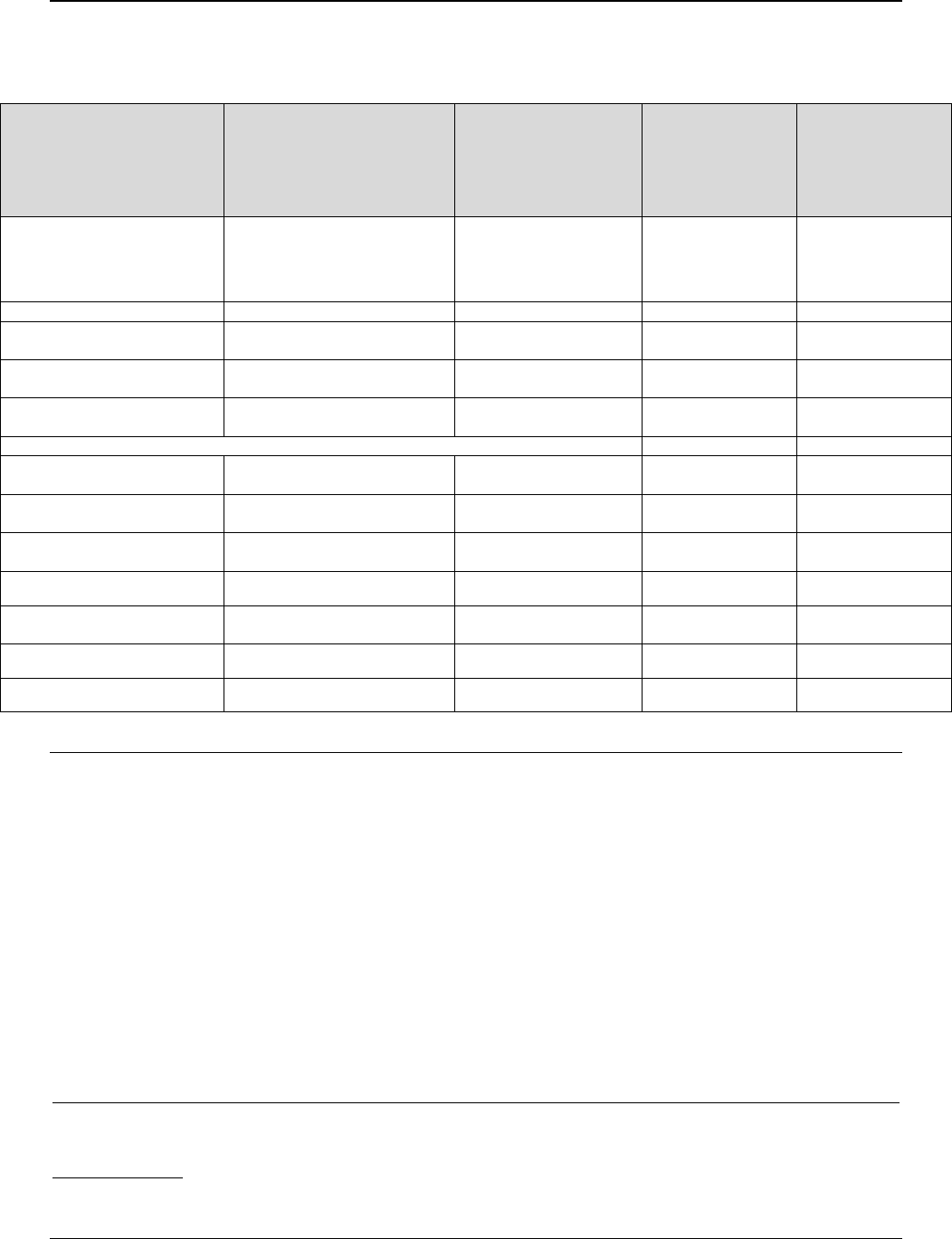
Part II: A Comparison of Tax Rates in the Washington Metropolitan Area as of January 1, 2020
2019 Tax Rates and Tax Burdens – Washington Metropolitan Area
Page 46
Table 15: Real Property Tax Rates
As of December 31, 2019, 1/ 2/
JURISDICTION
NOMINAL RATE
(PER $100 OF TAXABLE
ASSESSED VALUE)
STATUTORY
ASSESSMENT LEVEL
(% OF MARKET
VALUE)
EFFECTIVE
ASSESSMENT
LEVEL
(INCL. MEDIAN
ASSESSMENT
SALES RATIO) 13/
EFFECTIVE
RATE
(PER $100 OF
TAXABLE
ASSESSED
VALUE)
DISTRICT OF COLUMBIA
Class I (residential) $ 0.85
Class II (commercial) $ 1.89 4/
Class III (vacant) $ 5.00
Class IV (blighted) $10.00
100%
100%
100%
100%
97.50%
$0.8288
MARYLAND 5/
Charles County
$1.317 6/
($0.04 - 0.320)
100%
92.90%
$1.2235
Montgomery County
$1.091
($0.01 - $0.622) 7/
100%
95.70%
$1.0437
Prince George’s County
$1.465
($0.895-$1.069) 8/
100%
95.30%
$1.3961
VIRGINIA
Alexandria
$1.130
100%
95.84%
$1.0830
Arlington County
$1.026
100%
93.56%
$0.9599
Fairfax City
$1.075
100%
96.19%
$1.0233
Fairfax County
$1.180
9/ 10/
100%
91.87%
$1.0841
Falls Church
$1.355
100%
93.75%
$1.2703
Loudoun County
$1.045
10/ 11/
100%
91.49%
$0.9561
Prince William County
$1.208
12/
100%
90.28%
$1.0906
Source: Survey of local government officials and local government web sites.
1/ In the District of Columbia the 2019-2020 real property tax year is October 1, 2019 - September 30, 2020. For the Maryland area
jurisdictions, the 2019-2020 real property tax year is July 1, 2010 to June 30, 2020. The rates presented are those in effect as of December 31,
2019, which is FY 2020 for each jurisdiction.
2/ Rates are per $100 of value. Special area rates in effect are shown in parentheses.
3/ Effective tax rates listed here are net of assessment value and do not reflect any exemptions or credits, nor does they incorporate median sales
ratios, as in Table 3 for the property tax calculations in the report.
4/ 1
st
$5(M) rate is $1.65 per $100 of assessed value; a rate of $1.77 per $100 assessed value applies to value over $5 million up to $10,000,000;
and a rate of $1.89 per $100 of assessed value applies over $10 million in value.
5/ Rates shown include the Maryland state rate of $0.112 per $100 of assessed value.
6/ Rate includes fire and rescue tax of $0.064/ per $100 of assessed value.
7/ Rate includes weighted average of municipal taxes, fire and transit district taxes, and Maryland - National Capital Park and Planning
Commission (MNCPPC) taxes.
8/ Includes MNCPPC taxes, transit taxes, and stormwater taxes.
9/ Relatively few residential properties in three areas pay an additional $0.02, 0.023, and 0.047 cents per $100 of assessed value for community
centers. Those in tax districts with a special assessment for leaf collection pay an additional $0.012 cents per $100 of assessed value.
10/ Loudoun County and Fairfax County have a Route 28 taxing district. Residents of this district are subject to an additional $0.18 cents per
$100 of assessed value.
11/ Loudoun County has a Dulles Rail service district. Residents of this district are subject to an additional $0.20 per $100 of assessed value.
12/ Rates ranging from $0.02 to $.201 are applied in special tax districts for recreation, and roads improvements. Includes $0.0025 per assessed
value of $100 is applied for Mosquito and Forest Pest Management and $0.08 Fire and Rescue levies (except in the Town of Quantico).
13/ See page 9 for an explanation of the addition of the median sales ratio statistic for this year.

Part II: A Comparison of Tax Rates in the Washington Metropolitan Area as of January 1, 2020
2019 Tax Rates and Tax Burdens – Washington Metropolitan Area
Page 47
PROPERTY TAXES
PROPERTY TAX RELIEF PROGRAMS
District of Columbia
Class One (owner-occupied residential) property owners may obtain a homestead
deduction. DC Law 4-129, effective July 24, 1982, requires the filing of the homestead deduction
application once every five years. This deduction eliminates property taxes on the first $74,850
of assessed value for homeowners in 2019 ($75,700 in 2020, equivalent to a $643.45 credit) and
has been indexed annually (by the CPI) since October 1, 2012. In addition to the homestead
deduction, senior citizens age 65 or older with total household adjusted gross income below
$133,100 (for 2019) may have their real property tax payments reduced by half.
Owner-occupied residential properties are also subject to a 10 percent property tax cap
whereby a property may not be taxed on more than a 10 percent increase in the property’s
assessed value each year. Effective beginning in 2019, there will be a 5 percent cap annually on
taxable assessed value on real properties owned and occupied by senior citizens and person with
disabilities.
The District provides several property tax relief programs for qualified homeowners and
renters who live in the District during the entire taxable year. A Schedule H property tax credit
can be claimed against their individual income tax liability (with a refund if the credit exceeds
any tax due) for a portion of the property taxes paid or rent paid constituting property taxes that
exceeds a stated percentage of household income. The specific percentages are presented in
Table 16, below. For the taxable year beginning January 1, 2019, the income eligibility limit is
$75,000 for eligible senior claimants and $55,000 for all other claimants, increased annually
pursuant to the cost-of-living adjustment, and the maximum credit is 1,200.
Eligible homeowners who meet the income level requirement and whose property is less
than $479,066 (as of 2019) in value may be eligible for abatement of real property taxes for a 5-
year period beginning October 1 following the recordation of the homeowner's deed as well as
abatement of deed recordation and transfer taxes. Application must be made at the time the deed
conveying the real property involved is offered for recordation with the Recorder of Deeds.
The District also has a special tax relief program for qualified historic properties
approved by the Joint Committee on Landmarks of the National Capital. Owners of the property
must be willing to enter into an agreement with the DC government to preserve the building as
historic property for at least 20 years.
Maryland
The Maryland homeowner's property tax credit program (circuit breaker) is designed to
provide relief for property tax burdens more than a certain percentage of income. The maximum
assessment that can be used to calculate the credit is $300,000. Applications must be filed by
September 1 of each year.

Part II: A Comparison of Tax Rates in the Washington Metropolitan Area as of January 1, 2020
2019 Tax Rates and Tax Burdens – Washington Metropolitan Area
Page 48
The state of Maryland also makes available a refundable renter's tax credit of up to $1,000
a year for renters who are age 60 or over, or who are permanently and totally disabled and will
qualify based on income. Renters under 60 years of age, with at least one dependent under the
age of 18, who receive no federal or state housing subsidies or reside in public housing, and meet
certain income limits, may be eligible. The applicant's entitlement to the credit is tied to a
flexible scale that relates the annual rent paid to the applicant's annual gross income. In
comparing the applicant's gross income to his or her annual rent paid, an allowance is made for
utilities paid by the renter. For example, if the renter pays for gas only, it is assumed that 6
percent of his or her gross income is dedicated to that item. By way of contrast, if the renter must
pay for heat, gas, and electricity, it is assumed that 18 percent of income is devoted to these
items. (Note: the income limits preclude the hypothetical family earning $25,000 in this report
from receiving a renter’s credit).
The Renter's Tax Credit Program is independent of the state individual income tax.
Applications must be filed by September 1 of each year. The applicant must, however, submit a
copy of his or her most recent Federal Tax Form 1040 and all the accompanying forms with the
renter's tax credit application.
Virginia
In Arlington County each owner of property for which exemption or deferral or both are
claimed must be age 65 or older during the current taxable year and occupy such property as
their sole dwelling or be permanently and totally disabled. A dwelling jointly held by a husband
and wife shall qualify if either spouse is or becomes 65 years old or is or becomes permanently
and totally disabled during the current taxable year.
Income cannot be more than $86,029 and the value of assets may not exceed $413,714 for
an exemption (or $558,513 for a deferral) (2021 levels). Total financial worth shall include the
value of all assets, including equitable interest, of the owner(s) and the owner’s relatives living in
the dwelling for which the exemption or deferral or both are claimed, and shall exclude the fair
market value of the dwelling and the land upon which it is situated, not exceeding one acre, for
which the exemption is claimed.
Fairfax and Prince William Counties, and Falls Church provide an exemption from, or
deferral of, real property taxes on dwellings owned and occupied by persons who are age 65 or
older, or who are permanently and totally disabled and whose income is not more than $72,000
(Fairfax County), $89,900 (Prince William County), and $100,800 (Falls Church). In Falls
Church, those with incomes from $63,701 - $100,800 are eligible for a deferral only. Income of
$7,500 may be excluded by a permanently and totally disabled applicant. Household gross
income includes the income of all relatives residing therein. From this amount, the homeowner
excludes the first $6,500 of income for each relative residing in the household other than the
spouse of the owner. In Falls Church and Prince William County, the homeowner may deduct
$10,000 for non-spouse income (caregiver income). The combined financial net worth of the
owner and spouse cannot exceed $340,000 up to one acre of land in Fairfax County and
$340,000 in Prince William County, up to 25 acres of land, excluding the value of the home. The

Part II: A Comparison of Tax Rates in the Washington Metropolitan Area as of January 1, 2020
2019 Tax Rates and Tax Burdens – Washington Metropolitan Area
Page 49
asset limit is $400,000 in Falls Church (There was a change in 2019 to lower the asset limit from
$540,000 to $400,000, but current recipients with assets over $400,000 but below $540,001 who
would otherwise qualify for relief can continue in the program for 2 years).
Loudoun County provides a tax relief program that exempts real property taxes on the
dwelling and up to three acres of land on which the dwelling is situated. The dwelling must be
owned and occupied as the full-time residence of the applicant(s) seeking tax relief. Applicants
must be 65 years or older or certified permanently and totally disabled by January 1
st
of the
current tax year. Loudoun County’s gross household income limitation is $72,000 to receive a
full exemption. The first $7,500 of disability income may be excluded by applicants who are
permanently and totally disabled. Not including the spouse of the applicant, the first $10,000 of
income of each relative residing in the dwelling may be excluded when computing gross
household income. Loudoun County’s net worth limitation is $440,000, which does not include
the value of the dwelling, and up to ten acres of land on which the dwelling is situated. The value
of land more than three acres is not eligible for tax relief.
The City of Alexandria has two programs for real estate tax relief: First, tax relief for the
elderly and permanently and totally disabled. This program allows for both exemption from and
deferral of real estate taxes. To qualify for relief, the total combined household income of the
applicant cannot exceed $100,000 for the calendar year immediately preceding the year in which
the application is made. Total household assets may not exceed $430,000. For household
incomes up to $40,000, taxes are exempted in full. For household incomes between $40,001 and
$55,000, up to 50 percent of the applicant’s real estate tax bill is exempted. For household
incomes between $55,001 and $72,000, up to 25 percent of the applicant’s real estate bill is
exempt. Up to $10,000 in income of any relative (not a spouse) living in the property is
excluded, as well as up to $10,000 in income of any owner residing in the property who is
permanently disabled is also excluded. To qualify for deferral, the total household income of
Alexandria city applicants cannot exceed $72,000 for the calendar year immediately preceding
the year in which the application is made. The date of deferral of taxes is the date the taxes
would ordinarily be due.
The second program provides a full real estate tax exemption for veterans with 100
percent service-connected disability: The veteran must be rated at 100 percent or service-
connection is rated at less than 100 percent, but the veteran is paid at the 100 percent disability
rate due to un-employability under either standard. The disability must be considered total and
permanent. Veterans with temporary disability, no matter how severe, do not qualify.
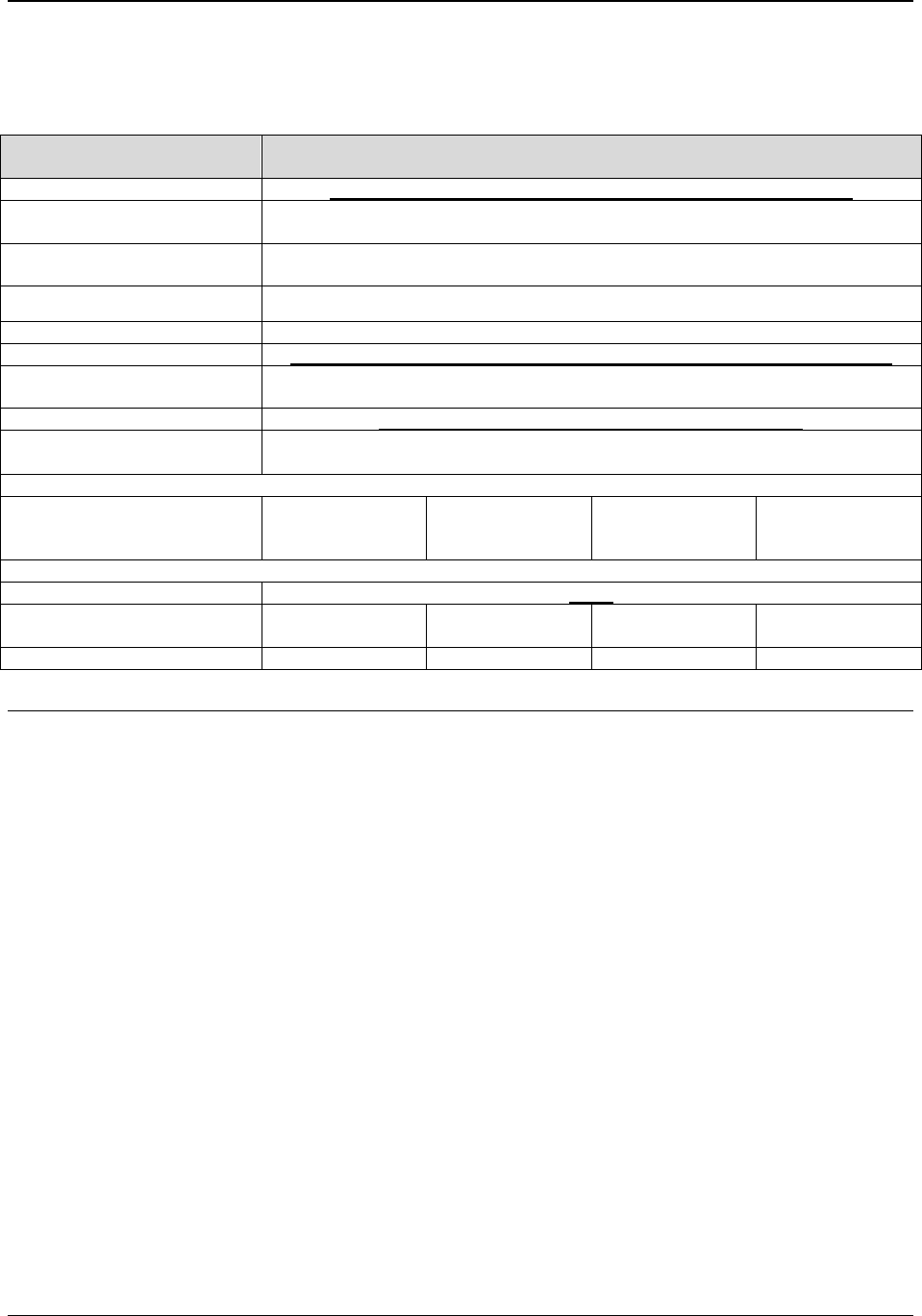
Part II: A Comparison of Tax Rates in the Washington Metropolitan Area as of January 1, 2020
2019 Tax Rates and Tax Burdens – Washington Metropolitan Area
Page 50
Table 16: Property Tax Relief Programs
FILING UNIT
GROSS INCOME
TAX CREDIT EQUALS:
DISTRICT OF COLUMBIA 1/
Regular Property Tax Circuit Breaker (Schedule H renters’ credit)
$ 0 - 24,999
100% of property tax equivalent exceeding 3.0% of household income – up to $1,200
$ 25,000 – 51,999
100% of property tax equivalent exceeding 4.0% of household income – up to $1,200
$ 52,000 – 55,000
100% of property tax equivalent exceeding 5.0% of household income – up to $1,200
Senior (Age 70 and Over) Circuit-Breaker Relief (Schedule H renters’ credit)
$ 0 – 75,000
100% of property tax exceeding 3.0% of household income – up to $1,200
Senior Citizen or Disabled Owner Property Tax Relief
$ 134,550
Reduces qualified owners’ property tax by 50%
JURISDICTION
HOUSEHOLD
GROSS INCOME
LESS THAN:
NET WORTH
LESS THAN:
RELIEF
AMOUNT:
TAX LIMIT:
Rates
MARYLAND 2/
$60,000
$200,000
Determined by
state
$4,380
1/ Renters use 20 percent of rent paid as a property tax equivalent of rent. Income and credit limits are for Tax Year 2019.
2/ Maryland counties may provide county supplemental programs. Prince George's County does not offer a supplement to the homeowners' tax
credit program. However, several Prince George's County municipalities offer a supplemental program including the cities of Bowie, College
Park, Greenbelt, Hyattsville, and Mount Rainier.

Part II: A Comparison of Tax Rates in the Washington Metropolitan Area as of January 1, 2020
2019 Tax Rates and Tax Burdens – Washington Metropolitan Area
Page 51
Table 16: Property Tax Relief Programs, Continued
JURISDICTION
HOUSEHOLD
GROSS
INCOME
LESS THAN:
NET WORTH
LESS THAN:
RELIEF AMOUNT:
VIRGINIA
Alexandria 3/ 4/
$100,000
$430,000
5/
Arlington County 6/
$99,472
$413,714
7/
Fairfax 3/ 4/
$72,000
$340,000
8/
Fairfax County 3/ 4/
$72,000
$340,000
8/
Falls Church 3/
$72,000
$400,000
9/
Loudoun County
$72,000
$440,000
10/
Prince William County 3/
$89,900
$340,000
11/
Source: Survey of local government officials and local government web sites.
3/ Tax relief program is for residents 65 years of age or older, or permanently and totally disabled. Disabled applicants may exclude the first
$10,000 of income. For each relative other than a spouse residing in the household, the first $7,500 may be excluded.
4/ Excludes home and one acres of land from net worth calculation.
5/ Household income less than $40,000 receives full exemption; income $40,001 to $55,000 receives a 50 percent partial exemption; income
$55,001 to $72,000 receives 25 percent partial exemption; income not more than $72,000 can receive deferral of tax. Those with income over
$72,000 but not more than $100,000 may defer their taxes, also subject to repayment with interest.
6/ For Seniors 65 and older, or homeowners with a total and permanent disability. For deferrals, asset level cannot exceed $558,518; income
cannot exceed $106,969.
7/ The asset level excludes the value of the residence. The amount of relief received, if eligible, is based on household income and the value of
the household's assets. Net worth limit is $558,513 for a deferral.
8/ Incomes up to $52,000 receive 100% relief. Incomes of $52,001 to $62,000 50% relief; incomes $62,001 - $72,000 receive 25% relief, with
a deferral of the balance.
9/ Incomes $38,840 and below (0-40% AMI) receives 100% relief; $38,841 to $58,260 (41-60% AMI) receives 75% relief; $58,261 to $62,100
(61-80% AMI) receives 50% relief; $62,101 to $97,100 (81-100% AMI) deferral only.
10/ Total exemption is granted for home and up to three acres. Those with net worth up to 920,000 and income up to $46,00 may receive a partial
exemption up to 50%.
11/ Total exemption of the tax on a home and up to one acre of land it occupies is granted to applicants whose gross household income does not
exceed $62,000 annually. Partial exemption of the tax on a home and up to twenty-five acres of land it occupies is
granted to applicants whose gross household income is greater than $62,000 but does not exceed $89,900.

Part II: A Comparison of Tax Rates in the Washington Metropolitan Area as of January 1, 2020
2019 Tax Rates and Tax Burdens – Washington Metropolitan Area
Page 52
PROPERTY TAXES
TANGIBLE PERSONAL PROPERTY
District of Columbia
The tax is imposed on all tangible personal property, except inventories, used in a trade or
business. Such property includes machinery, equipment, furniture, fixtures, and supplies.
Tangible personal property leased to another business or individual located in the District of
Columbia is taxable to the owner. Tangible personal property must be assessed at full and true
value. Renters under a "lease purchase" or a "security purchase" agreement who are obligated to
become the owner must report the property on the personal property tax return. The first
$225,000 of taxable value is exempt from tax.
Maryland
The state of Maryland exempts business property (including commercial inventory,
manufacturing R&D inventory, and manufacturing R&D machinery) from tangible personal
property taxation. The state is responsible for the assessment, at full cash value, of corporate
tangible personal property.
A county rate may apply to commercial and manufacturing inventories; most, but not all,
Maryland counties levy a personal property tax. The county rates of tax on tangible personal
property are 2.5 times those for real property.
Virginia
The tax on tangible personal property is a local tax in Virginia. The rates shown in Table
17, page 54 are nominal. Counties and cities impose different rates on tangible personal property
and classify certain items separately from other tangible personal properties.
Virginia jurisdictions are the only ones in the Washington Metropolitan Area that tax
automobiles (as well as motorcycles, recreational vehicles, boats, airplanes, and trailers) under
the tangible personal property tax. Mobile homes are taxed at the real property tax rate. Motor
vehicles must be listed separately and are assessed at trade-in value according to the January 1
(of each year) National Automobile Dealers Association handbook in Alexandria, Falls Church,
Fairfax City, Fairfax County, and Prince William County. The clean loan value is the basis used
in Arlington County and Loudoun County. All Northern Virginia jurisdictions included in the
report prorate vehicle personal property taxes based on the length of time the vehicle is in their
locality.
Beginning in 1999, Virginia adopted a personal property tax relief program on the first
$20,000 of a vehicle’s assessed value. For calendar year 2016, personal property taxes paid by
citizens were reduced by various percentages based on the 2015 level of state reimbursement in
which the state reimbursed the locality for that reduced assessment amount. Owners of vehicles

Part II: A Comparison of Tax Rates in the Washington Metropolitan Area as of January 1, 2020
2019 Tax Rates and Tax Burdens – Washington Metropolitan Area
Page 53
valued at less than $1,000 pay no tax (the state pays 100 percent). In Arlington County, vehicles
that are valued at $3,000 or less, and are PPTR eligible have no tax liability and pay only an
annual decal fee. Each vehicle that is PPTR eligible pays no tax on the first $3,000 of value.
Several counties offer additional relief for taxpayers meeting income, age, or other
eligibility criteria. Prince William County allows an exemption of personal property taxes on one
automobile per qualifying applicant for the low-income elderly and the permanently and totally
disabled. County tax relief applicants who meet the income and net worth requirements may
qualify for a reduced tax rate on one vehicle per qualifying applicant. Qualifications for personal
property tax relief for the low-income elderly and disabled are as follows:
• Gross income of the applicant may not exceed $89,900 (as of December 2019).
• The combined net assets of the applicant and spouse may not exceed $340,000.
• Personal property relief for this program is limited to one vehicle.
• Disabled applications may exclude the 1
st
$7,500 of income from the calculation of total
income, i.e., an effective gross income of $29,500.
Loudoun County provides an alternative personal property tax rate on one vehicle per
qualified applicant who is age 65 or over or declared permanently and totally disabled by
January 1
st
of the current year. The vehicle must be used primarily by or for the applicant, and if
co-owned, the gross income limitation includes income from all sources of the owners of the
vehicle and the spouse of the applicant. The gross income limit for the alternative tax rate is
$52,000. The applicant’s net worth cannot exceed $195,000, which may exclude the value of the
applicant’s Loudoun County residence and up to one acre of land on which it is situated. The
alternative tax rate is established annually by the Board of Supervisors. The current rate is $2.10
per $100 of assessed value for qualified applicant’s vehicles.
Falls Church allows an exemption of up to the first $25.00 of personal property taxes plus
$33 of decal relief (total $58) on one automobile per household for the low-income elderly and
the permanently and totally disabled (income limit is $20,000 per year).

Part II: A Comparison of Tax Rates in the Washington Metropolitan Area as of January 1, 2020
2019 Tax Rates and Tax Burdens – Washington Metropolitan Area
Page 54
Table 17: Tangible Personal Property
Tax Year 2019– 2020 (FY 2020) 1/
RATE PER $100 OF VALUE
DISTRICT OF COLUMBIA
$3.40 2/
MARYLAND 3/
Charles County
$3.01
Montgomery County
$2.43
Prince George’s County
$3.38 4/
VIRGINIA
Alexandria
$5.33 5/ ($4.50) 6/ ($3.55) 7/
Arlington County
$5.00 5/
Fairfax
$4.13 5/
Fairfax County
$4.57 5/ ($1.09) 8/ ($0.01) 9/
Falls Church
$5.00
Loudoun County
$4.20 5/ 10/ ($2.75) 6/ ($1.205) 8/ ($1.00) 11/
($0.01) 9/ ($4.00) 12/ ($2.10) 13/
Prince William County
$3.70 4/ 12/ ($0.00) 13/ ($1.25) 14/ ($1.00) 15/
($1.125) 16/
Source: Survey of local government officials and local government web sites.
1/ The personal property tax year in Virginia area jurisdictions is on a calendar year basis. The rates submitted by Virginia jurisdictions for this
report are applicable to calendar year 2019. In the District of Columbia and the Maryland area jurisdictions, the 2019 personal property tax
year is July 1, 2019 to June 30, 2020. The rates presented are those in effect for this period. Rates in parentheses apply to specific items
detailed in the corresponding footnote.
2/ First $225,000 of value is exempt from tax.
3/ Maryland property tax rate is not levied against personal property. Rates listed for all three counties are unweighted county rates.
4/ Includes MNCPPC, WSTC, and stormwater rates. Rate applies to non-town businesses. The county rate for municipalities ranges from $2.012
to $2.294.
5/ Rate applied to regular individual personal property and business tangible personal property. Alexandria offers 100% relief on the total
assessed value of vehicles valued $1,000 and under; 53% relief on the total assessed value for vehicles valued between $1,001 and $20,000.
For CY 2019, Arlington County provided 100% tax relief for assessed vehicle value at or below $3,000. For assessed value between $3,001
and $20,000 for conventional vehicles, the taxpayer paid 72% of the tax liability, with the State block grant funds contributing the remaining
28%. For calendar year 2019, taxpayers in Fairfax County received a 60.% tax relief on their Personal Property tax liability on the first
$20,000 of the value for vehicles owned by individuals. Vehicles valued less than $1,000 received a 100% tax relief. Taxpayers in Falls
Church received tax relief of 43%. For CY 19, taxpayers in Loudoun County received 38% tax relief on their Personal Property tax liability
on the first $20,000 of the value for vehicles owned by individuals. Vehicles valued less than $1,000 received a 100% tax relief. Prince
William County taxpayers received 46% tax relief on assessed values under $20,000.
6/ Rate applied to machinery and tools, personal property used in a research and development business, and Interstate Motor Carrier vehicles.
7/ Vehicles with special equipment designed to aid the handicapped are assessed at a rate of $3.55 per $100 of value.
8/ Rate applied to mobile homes and public service corporation non-vehicular personal property.
9/ Rate applies to vehicles specifically equipped for the handicapped, privately-owned vans used for van pools, and vehicles belonging to
volunteer fire and rescue squad members, vehicles owned by reserve deputy sheriffs and auxiliary police officers. The same rate also applies
to boats, antique automobiles, aircraft and flight simulators, and property owned by homeowners' associations. One vehicle owned by a fully
disabled veteran is included in this special subclass.
10/ Vehicles using clean special fuels.
11/ Rate applied to four-wheeled electrically powered low-speed vehicles.
12/ Rate applied to heavy construction machinery.
13/ Rate applied to vehicles specially equipped for use by the handicapped and vehicles owned by certain elderly and disabled individuals.
14/ Rate applied to computer equipment and peripherals used in a trade/business.
15/ Rate applied to property used for research and development.
16/ Rate applied to mobile homes.

Part II: A Comparison of Tax Rates in the Washington Metropolitan Area as of January 1, 2020
2019 Tax Rates and Tax Burdens – Washington Metropolitan Area
Page 55
PUBLIC UTILITIES TAX
District of Columbia
The District imposes a gross receipts tax on utilities operating in the District of Columbia.
The rate is 10 percent of gross receipts from sales to residential customers and 11 percent of
gross receipts from sales to nonresidential customers. In addition, similar taxes are assessed on
heating oil companies, natural and artificial gas marketers, long distance telephone companies,
and subscription television, video, and radio service providers. Under provisions of the
Telecommunications Competition Act of 1996, the District assesses an 11 percent gross receipts
tax on local telephone companies, including wireless telecommunications providers. The
regulated utilities pay the bulk of the revenues associated with these taxes.
Maryland
Called the franchise tax in Maryland, the public utilities tax applies to any company
engaged in a telegraph, telephone, oil pipeline, electric, or gas business in the state. The tax is
based on gross receipts for the preceding calendar year. The rate is 2 percent and receipts subject
to this tax are not subject to state income tax except for long distance phone companies, which
surcharge the tax to their customers.
In addition, retail sales of natural or artificial gas, oil, electricity, coal, nuclear fuel
assemblies, and steam for nonresidential use are also taxed by several local subdivisions.
Virginia
Electric and gas; water or heat; light and power companies; and telegraph and telephone
companies are subject to tax at different rates. Telephone and telegraph taxes are based on
mileage of poles or conduits, including mileage of buried cable; an additional charge is
applicable to gross receipts from intrastate business.
Virginia exempts consumers from tax for the use or consumption of gas, electricity, and
water delivered through mains, lines, or pipes. However, some Virginia localities do tax
consumers for these services at different rates.
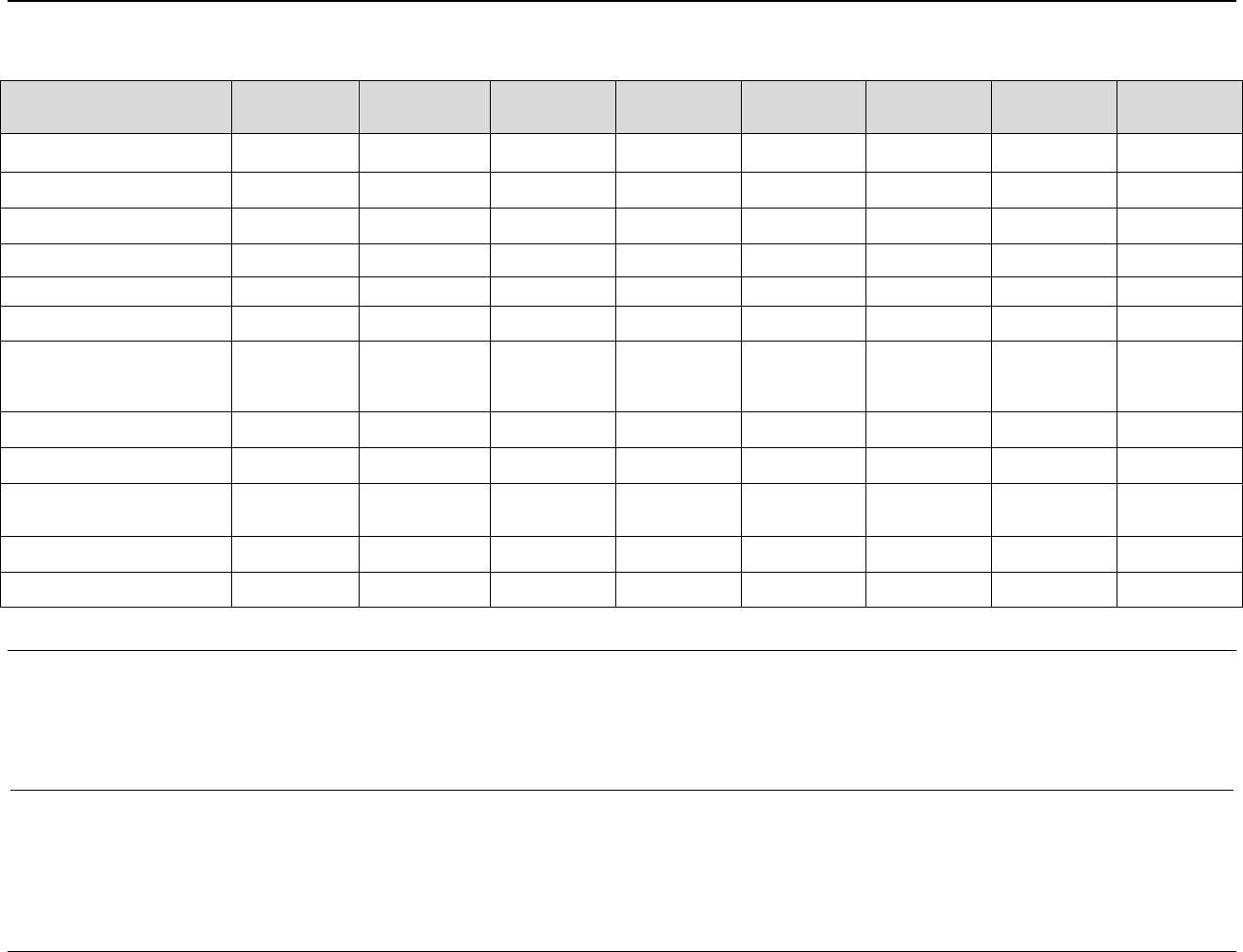
Part II: A Comparison of Tax Rates in the Washington Metropolitan Area as of January 1, 2020
2019 Tax Rates and Tax Burdens – Washington Metropolitan Area
Page 56
Table 18: Public Utilities Tax to Residential Consumers
JURISDICTION
ELECTRICITY
MAXIMUM
MONTHLY
TAX
TELEPHONE
MAXIMUM
MONTHLY
TAX
GAS
MAXIMUM
MONTHLY
TAX
WATER
MAXIMUM
MONTHLY
TAX
DISTRICT OF COLUMBIA
$0.0070/kwh
---
---
---
$.0707/
therm
---
---
---
MARYLAND
$0.00062/kwh
---
---
---
$0.00402/therm
---
---
---
Montgomery County
$0.01106/
kwh 1/
---
$2.00
2/
---
$.09515/
therm 1/
---
---
---
Prince George’s County
$0.0099/kwh 1/
---
8%
2/
---
$0.084949/therm
1/
---
---
---
VIRGINIA
$0.00155/kwh 6/
3/
$0.0135/ccf
Alexandria
$ 1.12 plus
$0.012075/kwh
$3.00
3/
---
$ 1.28 plus
$0.124444/ccf
$3.00
15.0%
Arlington County
$0 plus
$0.0111/kWh
with first 400
kwh exempt
$3.00
3/
---
$0 plus
$1.038/ccf with
first 20 ccf
exempt
$3.00
---
---
Fairfax
$1.05 plus
$0.01136/kwh
$2.25
3/
---
$1.05 plus
$0.05709/ccf
$2.25
15.0%
$15.00
Fairfax County 4/
$ 0.56 plus
$0.00605/kwh
$ 4.00
4/
3/
---
$ 0.56 plus
$0.05259/ccf
$ 4.00
4/
---
---
Falls Church
$0.70 plus
$0.007535/kwh
$ 5.00
5/
3/
$ 5.00
5/
$0.70 plus
$0.0039/ccf
$ 5.00
5/
10.0%
$ 5.00
5/
Loudoun County
$0.63 plus
$0.06804/kwh
$ 2.70
3/
---
$0.63 plus
$0.06485/ccf
$ 2.70
---
---
Prince William County
$1.40 plus
$0.01509/kwh
$ 3.00
5/
3/
$ 3.00
5/
$1.60 plus
$0.06/ccf
$ 3.00
5/
---
---
Source: Survey of local government officials and local government web sites.
1/ This energy tax is levied upon every person transmitting, distributing, manufacturing, producing, or supplying electricity, gas, steam, coal, etc., in Montgomery and Prince George's Counties.
Although the tax is levied upon the distributor, it is effectively borne by the consumer.
2/ Montgomery County telephone tax per line and $3.50 per wireless telephone each month.
3/ All local telephone utility taxes in Virginia are taxed with 5 percent statewide communications sales and use tax.
4/ Per month maximum shown is for residential consumers only; separate rates are in effect for commercial consumers.
5/ Maximum monthly tax for commercial consumers is $100.
6/ For up to 2,500 kwh used. Between 2,500 and 50,000 kwh, the rate is $0.00099; and over 50,000 kwh, the rate is $0.00075.

Part II: A Comparison of Tax Rates in the Washington Metropolitan Area as of January 1, 2020
2019 Tax Rates and Tax Burdens – Washington Metropolitan Area
Page 57
Table 19: Public Utilities Tax to Suppliers
JURISDICTION
UTILITIES
SUBJECT TO TAX
RATE
BASIS
DISTRICT OF COLUMBIA
Telecommunications
Residential
Non-residential
10.0%
11.0%
Gross receipts
Residential
Non-residential
MARYLAND
Telegraph, telephone,
oil pipeline, light and
power, electric, or gas
companies
2.0%
Gross Receipts
VIRGINIA
Water
2.0%
Gross Receipts
Telephone
2/
Source: “DC Tax Facts, 2020.” Government of the District of Columbia, Office of the Chief Financial Officer, Office of Revenue Analysis,
p. 26.
1/ Local consumption tax rates and a special regulatory tax rate may also apply.
2/ All local telephone utility taxes in Virginia are taxed with 5 percent statewide communications sales and use tax.

Part II: A Comparison of Tax Rates in the Washington Metropolitan Area as of January 1, 2020
2019 Tax Rates and Tax Burdens – Washington Metropolitan Area
Page 58
RECORDATION AND TRANSFER TAXES
District of Columbia
A tax of 1.1 percent of the consideration is imposed on each deed when it is submitted for
recording if the fair market value is under $400,000; otherwise, the rate is 1.45 percent on fair
market value $400,000 and above.
18
The minimum recordation tax is $1.00.
The Fiscal Year 2018 Budget Support Act of 2017 provides a reduced recordation tax rate
of 0.725 percent or reduced economic interest in a cooperative unit tax rate to qualified first-time
District homebuyers, based on their residency status and income, provided that the entire benefit
of the reduced recordation tax rate is allocated to the first-time District homebuyer, as shown on
the settlement statement, or closing disclosure form.
Another tax of 1.1 percent of the consideration paid is imposed on each transferor for
each transfer if the fair market value is under $400,000 and is payable at the time the deed is
submitted for recording; otherwise, the rate is 1.45 percent on fair market value $400,000 and
above. The minimum transfer tax is $1.00.
Transfers of economic interests in the District of Columbia are subject to a 2.9 percent tax
based on consideration paid (2.2 percent for cooperatives valued less than $400,000). For
qualified first-time home buyers, the rate for an economic interest in a cooperative unit is: (i)
1.825 percent when consideration allocable to the real property is less than $400,000; or (ii)
2.175 percent when consideration allocable to the real property is $400,000 or greater.
Maryland
The Maryland state realty transfer tax is 0.5 percent of the consideration, there is a 0.25
percent rate for first-time homebuyers. Recordation taxes differ by county and range from a rate
of $2.50/$500 of consideration (0.5%) in Baltimore and Howard Counties, to a high of
$6.00/$500 of consideration (1.2%) in Frederick and Talbot Counties.
Charles County
The recordation tax in Charles County is 1.00 percent. A new county transfer tax took
effect on August 8, 2016, the rate of which is 0.5 percent of the purchase price of the property.
First-time homebuyers who will live in their home are exempt from paying the tax on the first
$50,000 of the purchase price.
Montgomery County
Montgomery County's recordation tax is $8.90 per thousand of consideration rounded up
18
Effective fiscal year 2020, new rates of 2.5 percent for deed recordation and deed transfer taxes respectively, were added for commercial
properties sold for more than $2 million.

Part II: A Comparison of Tax Rates in the Washington Metropolitan Area as of January 1, 2020
2019 Tax Rates and Tax Burdens – Washington Metropolitan Area
Page 59
to the next increment of $500 up to $500,000 of consideration (this is a rate of 0.89 percent).
(For property valued over $500,000 it is computed at 1.35 percent). A $890 exemption may be
available for owner occupied residential property.
The county transfer tax is typically 1 percent of the selling price of a property.
Prince George's County
The recordation tax rate in Prince George's County is $5.00 per $1,000 of consideration
(0.50%). In addition, the county imposes a transfer tax of 1.4 percent of the selling price.
Virginia
The state recordation tax is $0.25 per $100, or fraction thereof, of the consideration of the
deed or the actual value of the property conveyed, whichever is greater. The state also levies a
tax on the grantor of $0.50 per $500, excluding any liens or encumbrances, on the purchase
price. In the Northern Virginia region, an additional grantor's tax of $0.15 per $100 (or portion of
$100) of the purchase price or fair market value of the property is levied and revenue goes to the
Northern Virginia Transportation District Fund. In addition, the state allows cities and counties
to impose a recordation tax of up to one-third of the state tax. The cities of Alexandria, Fairfax,
Falls Church, and the counties of Arlington, Fairfax, Loudoun, and Prince William impose this
tax at the rate of $0.0833 per $100.
The state transfer tax is $0.50 for each $500 of consideration, or fraction thereof,
exclusive of any lien or encumbrance remaining thereon when the consideration or the value of
the interest exceeds $100. One half of the conveyance tax collected is returned to the state
treasury and one half goes into the treasury of the locality of the property. The land transfer fee is
one dollar and is collected whenever improved or unimproved land of any amount of acreage is
transferred between two parties.

Part II: A Comparison of Tax Rates in the Washington Metropolitan Area as of January 1, 2020
2019 Tax Rates and Tax Burdens – Washington Metropolitan Area
Page 60
SALES AND USE TAXES
District of Columbia
The District of Columbia has six tax categories that fall under the general sales and use
tax. The retail sales tax rate of 6 percent is imposed on all tangible personal property sold or
rented at retail in the District and on certain selected services. Grocery-type foods, prescription
and non-prescription drugs, and professional services such as consulting, engineering, legal, and
physician services, are among the items exempt from the sales tax. Construction materials and
business purchases of public utility services are among those included. The Tax Revision
Commission Implementation Amendment Act of 2014 (BSA Subtitle (VII) (B)) expanded the
sales tax base to include some services not taxed in the District of Columba. These include
bottled water delivery services and other direct selling establishments, carpet and upholstery
cleaning services, fitness and recreational sports centers, and other personal care services such as
tanning, car washes, bowling centers and billiard parlors. The other rate categories apply to
goods and services as indicated below.
The FY 2020 Budget Support Act of 2019, effective October 1, 2019 exempts sales of
diapers and incontinence products from the retail sales tax. Additionally, the Act amends the
definition of soft drinks to only exclude any beverages that are 100 percent fruit or vegetable
juice or are at least 50 percent milk, including soy, rice, or similar milk substitutes and increases
the general gross receipts tax on sales of soft drinks to 8 percent from 6 percent.
The use tax is imposed at the same rate on property sold or purchased outside the District
and then brought into the District to be used, stored, or consumed. Vendors who are subject to
the jurisdiction of the District are required to collect and pay the sales or use tax. When the
vendor is not subject to the jurisdiction of the District, or when the purchaser brings the property
into the District, the purchaser is required to pay the tax. Beginning January 1, 2019, remote
vendors selling goods (including digital) will be required to collect tax from DC purchasers and
in April 2019 marketplace facilitators will be required to collect tax from all its hosted vendor
transactions with DC purchasers.
ITEMS
2020 SALES
TAX RATE
Retail rate for sales of certain tangible personal property and selected services; food or
drinks sold in vending machines
6.0%
Medical marijuana
6.0%
Soft drinks. A "soft drink" is defined as a beverage with a natural or artificial
sweetener that contains less than 100% juice; or a beverage that is less than 50% milk,
soy or other milk substitutes; or coffee, coffee substitutes, cocoa, or tea.
8.0%
Prepared meals for immediate consumption, restaurant meals, liquor prepared for
immediate consumption on the premises, and prepaid telephone cards,
10.0%
Off-premises alcohol, rental vehicles, tickets sold for games and events at the ballpark,
merchandise sold at the baseball stadium, tickets sold for games and events at the
Capital One Center and merchandise sold at the Capital One Center
10.25%
Hotels (transient accommodations)
14.95%
Parking motor vehicles in commercial lots
18.0%
Source: “DC Tax Facts 2020.” Government of DC, Office of the Chief Financial Officer, Office of Revenue Analysis, p. 33.

Part II: A Comparison of Tax Rates in the Washington Metropolitan Area as of January 1, 2020
2019 Tax Rates and Tax Burdens – Washington Metropolitan Area
Page 61
Maryland
A 6 percent tax is imposed on retail sales, including the rental, lease or royalty of tangible
personal property, including: (a) sales of food and drink on purchases over $1.00; (b)
production, fabrication or printing of tangible personal property on special order; (c) sales of
tangible personal property to contractors, builders or landowners for use or resale in the form of
real estate; (d) lodgings or accommodations; and (e) sales of tangible personal property and/or
services to persons who will use them as facilities, tools, machinery or equipment, even though
the intention is to transfer title to the property. Alcoholic beverage sales are subject to a 9 percent
tax.
Rental of passenger cars for 180 days or less is taxed at the rate of 11.5 percent, while
certain short-term truck rentals are taxed at 8 percent.
Residential public utilities (natural or artificial gas, electricity, steam, and coal) are
exempt from the sales tax. This exemption covers residential properties containing not more than
four units, including cooperative housing, condominiums, and other similar residential living
arrangements.
In addition to the state rate of 6 percent, Maryland localities impose a tax ranging from
0.5 percent to 10 percent on admissions to movie theaters, concerts, amusement parks, and
various other events.
Virginia
A 5.0 percent state tax and a state-administered 1.0 percent local tax is imposed on retail
sales, proceeds from leases and rentals, and proceeds from transient accommodations. Among
the exempt items are gas, electricity, home heating fuel, water, alcoholic beverages sold by the
state, certain medical supplies, and charitable purchases.
Vending machine dealers are taxed at 6.3 percent (there is an additional 0.7 percent state
tax imposed in the localities that make up Northern Virginia and Hampton Roads, making the
rate in these regions 7 percent, and the sales tax rate on groceries is 2.5 percent.
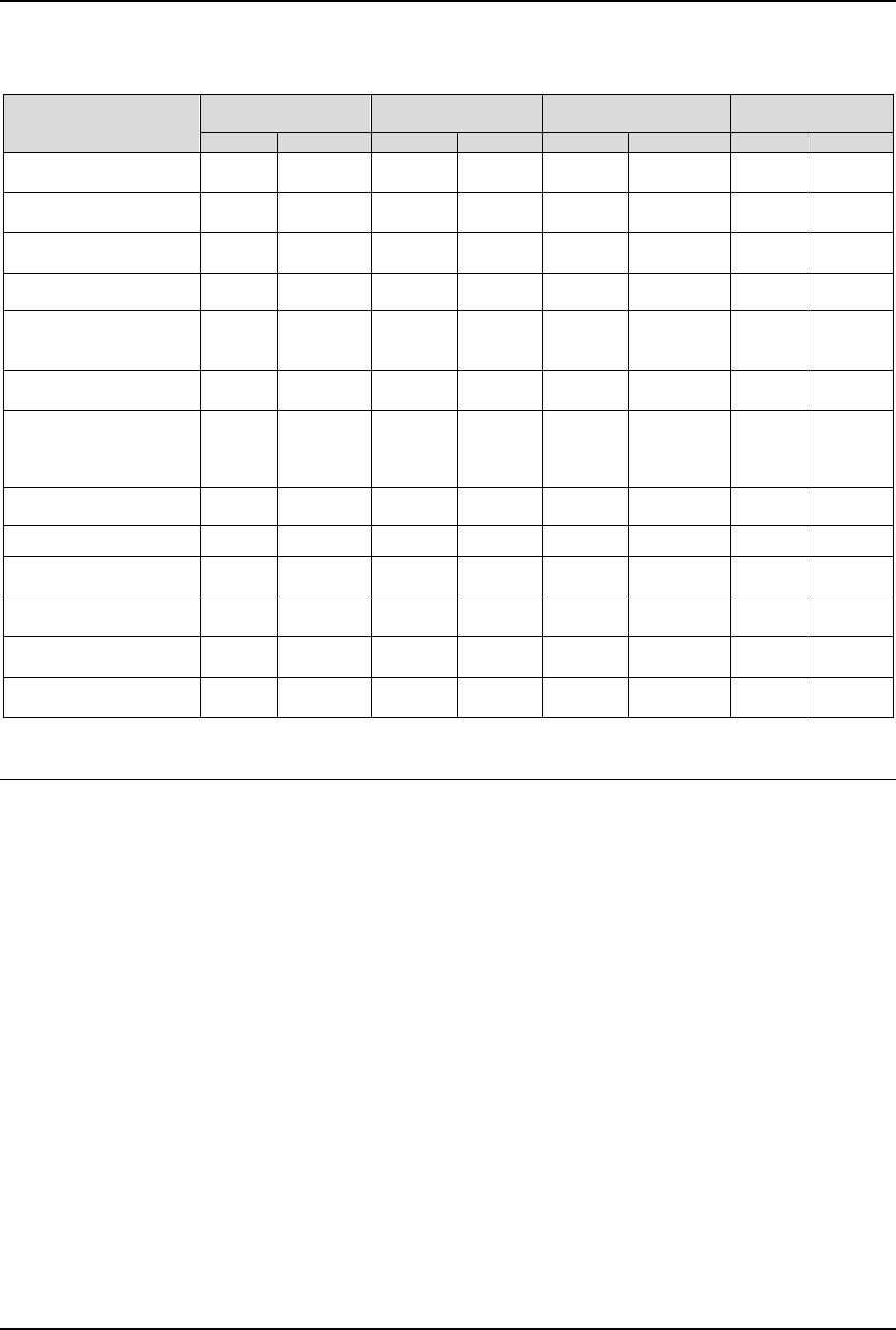
Part II: A Comparison of Tax Rates in the Washington Metropolitan Area as of January 1, 2020
2019 Tax Rates and Tax Burdens – Washington Metropolitan Area
Page 62
Table 20: Metropolitan Area Sales and Use Tax Rates
JURISDICTION
GENERAL RATE
ADMISSIONS
TRANSIENT
ACCOMMODATIONS
RESTAURANT
MEALS
STATE
LOCAL
STATE
LOCAL
STATE
LOCAL
STATE
LOCAL
DISTRICT OF
COLUMBIA
6.0%
---
10.25%
---
14.95%
---
10.0%
---
MARYLAND
6.0%
---
10.0%
---
6.0%
---
6.0%
---
Charles County
---
---
---
10%
---
5.0%
1/
---
---
Montgomery County
---
---
---
7.0%
2/
---
7.0%
3/ 4/
---
---
Prince George’s County
---
---
---
10.0%
---
7.0%
---
---
VIRGINIA
5.0%
---
---
---
2.0%
5/
---
6.0%
6/
---
Alexandria
---
+1.0%
---
10.0%
7/
---
+6.5% plus
$1.00 per
night/room
---
+5.0%
Arlington County
---
+1.0%
---
---
---
+5.25%
---
+4.0%
Fairfax
---
+1.0%
---
---
---
+4.0%
---
+4.0%
Fairfax County
---
+1.0%
---
---
---
+4.0%
---
---
Falls Church
---
+1.0%
---
8/
---
+8.0% 9/
---
+4.0%
Loudoun County
---
+1.0%
---
---
---
+5.0%
---
---
Prince William County
---
+1.0%
---
---
---
+5.0%
---
---
Source: Survey of local government officials and local government web sites.
+ In addition to state rate.
1/ Permanent residents of 120 days or more are exempt from the tax.
2/ Rates are limited to 5% when the state sales tax is applied, since the combination of the two taxes may not exceed 10%.
3/ Rates range from 5 to 10%.
4/ 3.5% is allocated to the Montgomery County Conference and Visitors Bureau, and Convention Center.
5/ This is called the “state transient occupancy tax.”
6/ This is the state general sales tax rate for the Northern Virginia area (5% state + 1% local add-on).
7/ Alexandria admissions tax not to exceed $0.50 per person.
8/ There is a $0.05 tax per admission for bowling.
9/ Includes a 2% transportation tax.

Part II: A Comparison of Tax Rates in the Washington Metropolitan Area as of January 1, 2020
2019 Tax Rates and Tax Burdens – Washington Metropolitan Area
Page 63
WATER AND SEWERAGE USER CHARGES (RESIDENTIAL)
Charges for water and sanitary sewerage and basic rates for each jurisdiction are
presented in Table 21, on the following page. Average cost per 1,000 gallons is the common
standard used. Special charges for service connections, availability, demand and account service
and front foot (a foot measured along the front of a piece of property) assessments are not
included in Table 21.
The rates for Loudoun and Prince William Counties are those that exist in the town of
Leesburg. This is done to simplify the rates because rates differ throughout these counties
according to the city or town of residency.
In Virginia and Maryland jurisdictions, billing is quarterly, while the District of Columbia
bills monthly.

Part II: A Comparison of Tax Rates in the Washington Metropolitan Area as of January 1, 2020
2019 Tax Rates and Tax Burdens – Washington Metropolitan Area
Page 64
Table 21: Water and Sewerage User Charges
(Residential), 2019 (unless noted)
JURISDICTION
WATER
SEWERAGE
MINIMUM
DISTRICT OF COLUMBIA
$4.09/1,000 gal.
$11.89/1,000 gal.
None
MARYLAND
Charles County
$4.61/1,000 gal.
$8.70/1,000 gal.
None
18,000 gallons or less per
quarter for Residential
Customers
single family residential
capped at 24,000 gallons
Montgomery County
Low $5.09 /1,000 gal.
Usage 49 gal. or less/day
High $ 8.34 /1,000 gal.
Usage 9,000 gal./day
or more
$ 6.80 /1,000 gal.
49 gal. or less/day
$ 11.89 /1,000 gal.
Usage 9,000 gal./day
or more
None
Prince George’s County
Low $5.09/1,000 gal.
Usage 49 gal. or less/day
High $8.34/1,000 gal.
Usage 9,000 gal./day
or more
$6.80/1,000 gal.
49 gal. or less/day
$11.89/1,000 gal.
9,000 gal./day or more
None
VIRGINIA
Alexandria
$29.55 flat fee
up to 6,000 gal./qtr.
$6.36/1,000 gal. +
$4.51/bill
+ sewer service charge
1/
None
Arlington County 2/
$14.20/1,000 gal.
$14.20/1,000 gal.
None
Fairfax 3/
$3.20/1,000 gal.
$8.22/1,000 gal
$17.49 water
$15.67 sewer

Part II: A Comparison of Tax Rates in the Washington Metropolitan Area as of January 1, 2020
2019 Tax Rates and Tax Burdens – Washington Metropolitan Area
Page 65
Table 21: Water and Sewerage User Charges
(Residential) 2019, Continued
JURISDICTION
WATER
SEWERAGE
MINIMUM
Fairfax County
$3.20/1,000 gal.
$7.28/1,000 gal.
None
Falls Church 4/
$5.00/1,000 gal.
over 5,000 gal.
$9.87/1,000 gal.
None
Loudoun County
$2.53/1,000 gal.
$4.97/1,000 gal.
None
Prince William County
(Service Authority)
$4.33/1,000 gal.
$6.65/1,000 gal.
None
Source: Survey of local government officials and local government web sites.
1/ As of July 1, 2019, these rates represent the first of two rate increases and include $7.63/1,000 gal for wastewater charge, and $2.28/1,000 gal
for a City Sanitary Sewer System Capital Investment and Maintenance Fee.
2/ Rate for FY21.
3/ Residential customers are taxed on water and sewer at a rate of 10 percent each, with a maximum of $15 each.
4/ As of January 3, 2014, water service is provided to City of Falls Church residents and businesses by Fairfax Water. All customers of the Falls
Church Water Utility automatically became customers of Fairfax Water on January 3. The rates originally effective with service rendered July
1, 2016 were effective through June 30, 2019.

Part II: A Comparison of Tax Rates in the Washington Metropolitan Area as of January 1, 2020
2019 Tax Rates and Tax Burdens – Washington Metropolitan Area
Page 66
Miscellaneous Taxes
District of Columbia
911 Emergency
Wireless/Wireline Subscribers $0.76 per line per month
Centrex Lines $0.62 per line per month
Private Branch Exchange (PBX) Station $0.62 per line per month
Bag Tax
The District requires all businesses that sell food or alcohol to charge five cents for every
carryout paper or plastic disposable bag. The business retains one cent (or two cents if it offers a
rebate when customers bring their own bag), and the remaining three or four cents goes to
the Anacostia River Clean Up and Protection Fund.
Maryland
Montgomery County:
911 Emergency $1.00 per bill per month
Telephone Service $0.75 to county
Charge $0.25 to state trust fund
Prince George's County:
911 Emergency $1.00 per line per month
Telephone Service $0.75 to county
Charge $0.25 to state trust fund
Charles County:
911 Emergency $1.00 per line per month
Telephone Service $0.75 to county
Charge $0.25 to state trust fund
Virginia
VA E-911 All local E-911 fees have been
replaced with a statewide $0.75
per line per month fee. Also, all
local mobile telecommunications
taxes in Virginia have been
replaced with a 5 percent
statewide communications sales
and use tax.

Part II: A Comparison of Tax Rates in the Washington Metropolitan Area as of January 1, 2020
2019 Tax Rates and Tax Burdens – Washington Metropolitan Area
Page 67
Alexandria:
Daily Rental Tax 1 percent on the gross proceeds
of a short-term rental business
1.5 percent on the gross proceeds
of the rental on heavy equipment
Public Rights-of-Way Use Fee $1.20 per line per month
Arlington County:
Short-term Rental Tax 1 percent on the gross proceeds
of short-term rental receipts
Solid Waste & Recycling Fee $319 per year
Fairfax County:
Short-term Daily Rental 1 percent on the gross proceeds
of a short-term rental business
Falls Church:
Short-term Rental 1 percent on gross proceeds of
a short-term rental business
Loudoun County:
Daily Short-term Rental Tax 1 percent on gross proceeds of
a short-term rental business
Prince William County:
Daily Rental Tax 1 percent daily rental tax; 1.5
percent of the proceeds from
heavy equipment
Business Litter Tax
Virginia imposes an annual $10 litter tax on each business establishment that produces
litter. An additional $15 tax is levied on each business operating as a manufacturer, wholesaler,
distributor, or retailer of groceries, soft drinks, carbonated water, beer, or other malt beverages.

Part II: A Comparison of Tax Rates in the Washington Metropolitan Area as of January 1, 2020
2019 Tax Rates and Tax Burdens – Washington Metropolitan Area
Page 68
Uniform Disposition of Unclaimed Property
District of Columbia
The District of Columbia is authorized to act as conservator over property presumed
abandoned and held by businesses and financial corporations by mandating the reporting and
delivery of such property into the custody of the Mayor.
The Uniform Disposition of Unclaimed Property Act includes all tangible and/or
intangible personal property and requires that reports be filed annually. Banks, businesses, and
other financial corporations must report on or before November 1 for property abandoned by the
preceding June 30. Life insurance companies must report by May 1 for property abandoned by
the preceding December 31.
Maryland
Maryland's unclaimed property law is custodial in nature. The law covers tangible and
intangible personal property and requires holders to file a report annually.
The reporting period for an insurance company is from January 1 through December 31,
of each year and the report is due no later than April 30 of the following year. Reports for all
other entities (banks, financial organizations, utilities, and corporations) cover the period of July
1 through June 30 of each year and must be filed no later than October 31 of that year.
Virginia
All unclaimed property is subject to the custody of the Commonwealth of Virginia,
including funds or other property, tangible and intangible, including any income or increments
thereon, less any lawful charges that are held, issued, or owing in the ordinary course of the
holder's business and have remained unclaimed by the owner.
Banking organizations, business associations and financial organizations must file an
unclaimed property report before November 1 of each year as of June 30 preceding. Insurance
corporations must file a report before May 1 of each year as of the preceding December 31.

Appendix
2019 Tax Rates and Tax Burdens – Washington Metropolitan Area
Page 69
Appendix: Additional Maps
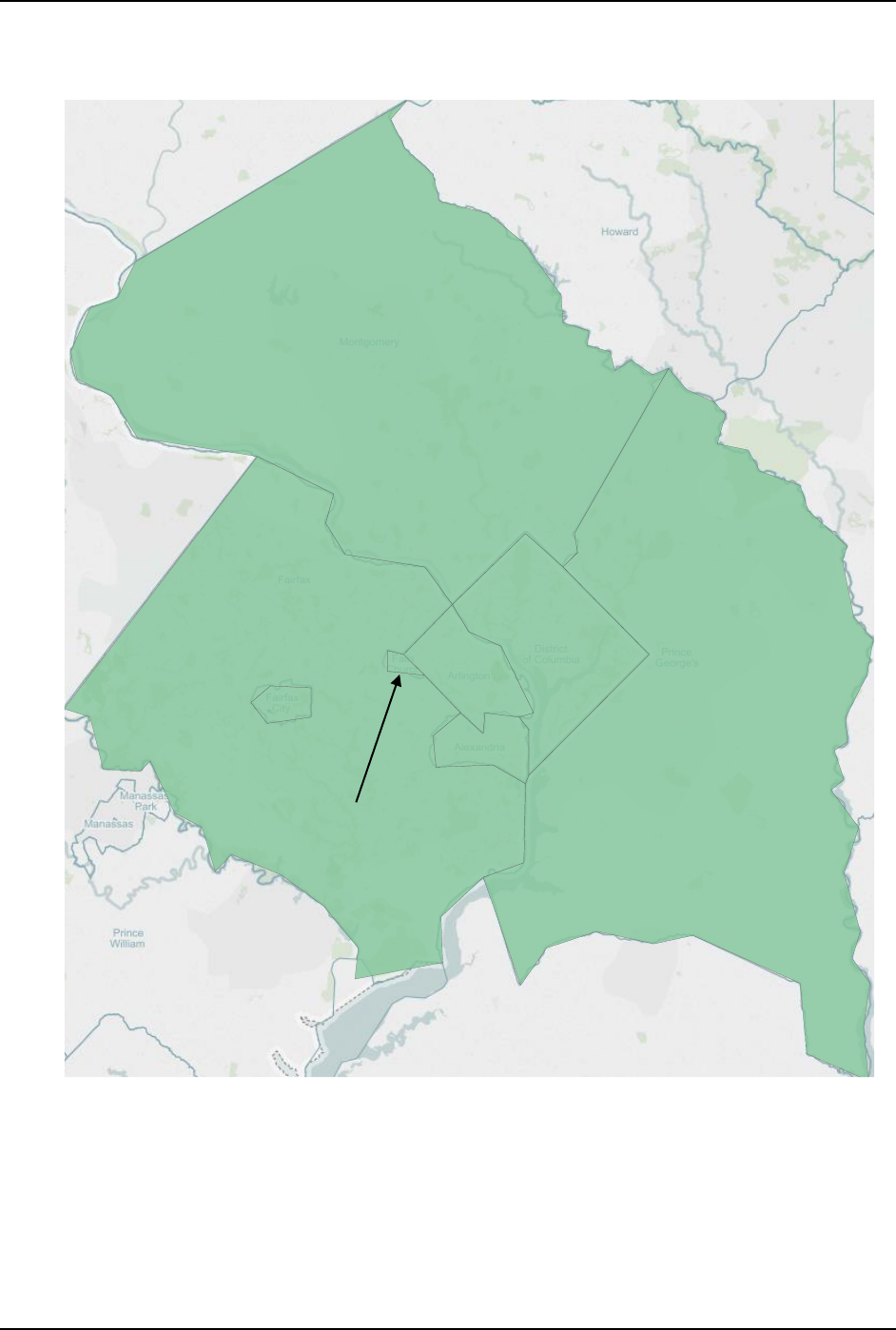
Appendix
2019 Tax Rates and Tax Burdens – Washington Metropolitan Area
Page 70
Map 2: DC Metropolitan Area Map
Montgomery County, MD
DC
Arlington,
VA
Alexandria,
VA
Fairfax County, VA
Fairfax
City, VA
Falls Church,
VA
Prince George’s
County, MD
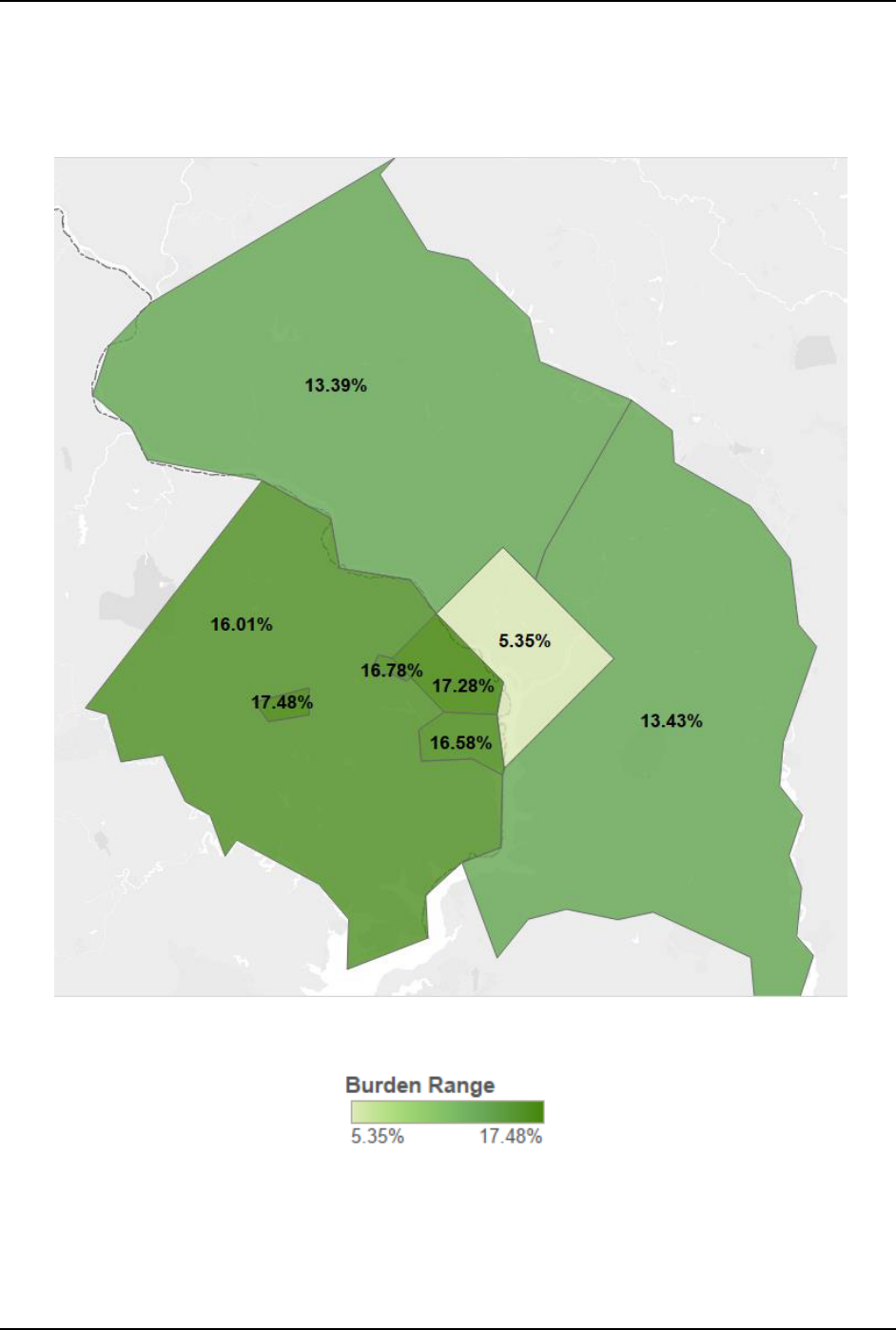
Appendix
2019 Tax Rates and Tax Burdens – Washington Metropolitan Area
Page 71
Map 3: Combined 2019 Metropolitan Area Tax Burdens
(Income, Property, Sales, & Auto) as a % of Income
(Family Earning $25,000/ Year)
Source: ORA Analysis. Note: The lighter green shading represents a lower tax burden.
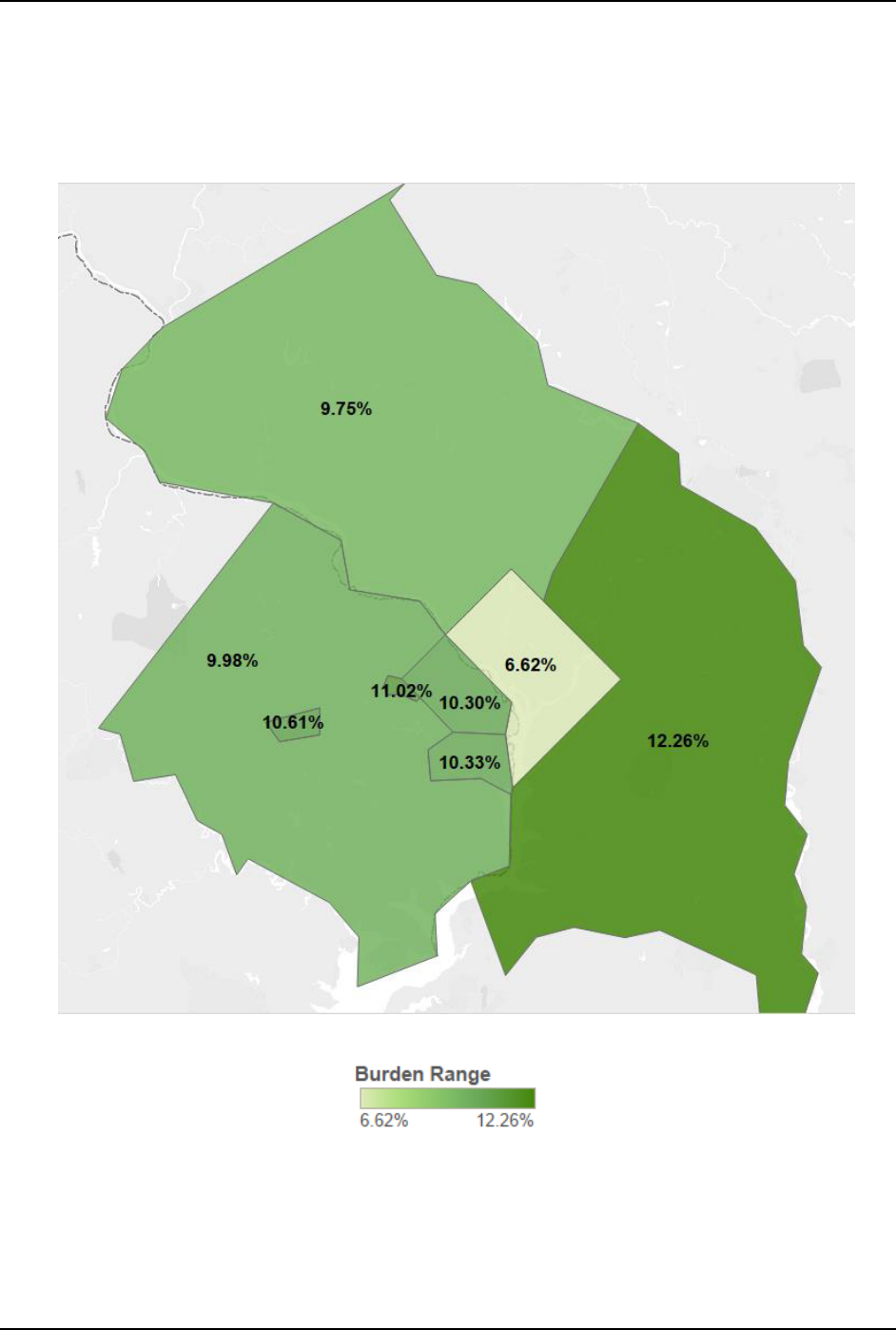
Appendix
2019 Tax Rates and Tax Burdens – Washington Metropolitan Area
Page 72
Map 4: Combined 2019 Metropolitan Area Tax Burdens
(Income, Property, Sales, & Auto) as a % of Income
(Family Earning $50,000/ Year)
Source: ORA Analysis. Note: The lighter green shading represents a lower tax burden.
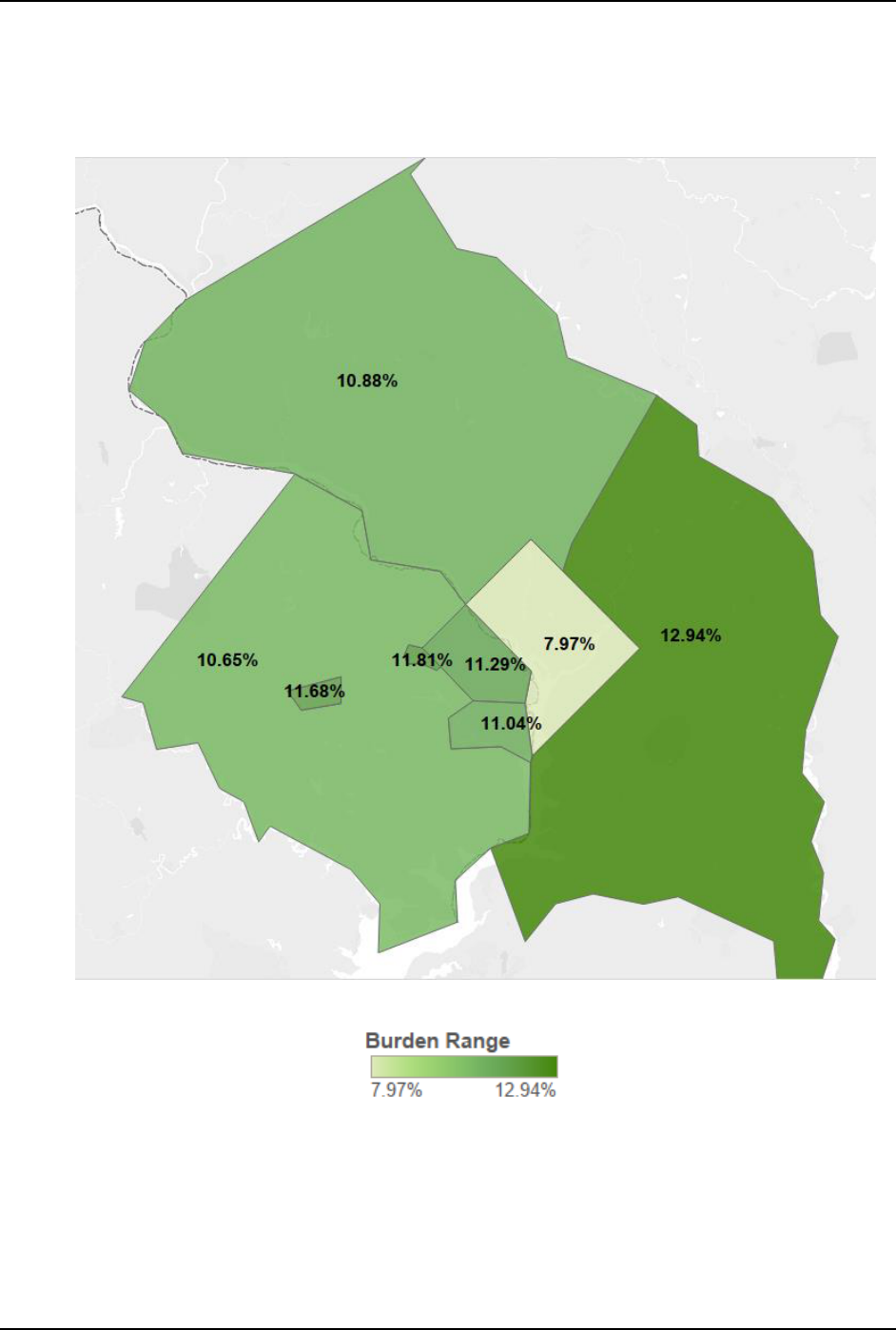
Appendix
2019 Tax Rates and Tax Burdens – Washington Metropolitan Area
Page 73
Map 5: Combined 2019 Metropolitan Area Tax Burdens
(Income, Property, Sales, & Auto) as a % of Income
(Family Earning $75,000/Year)
Source: ORA Analysis. Note: The lighter green shading represents a lower tax burden.
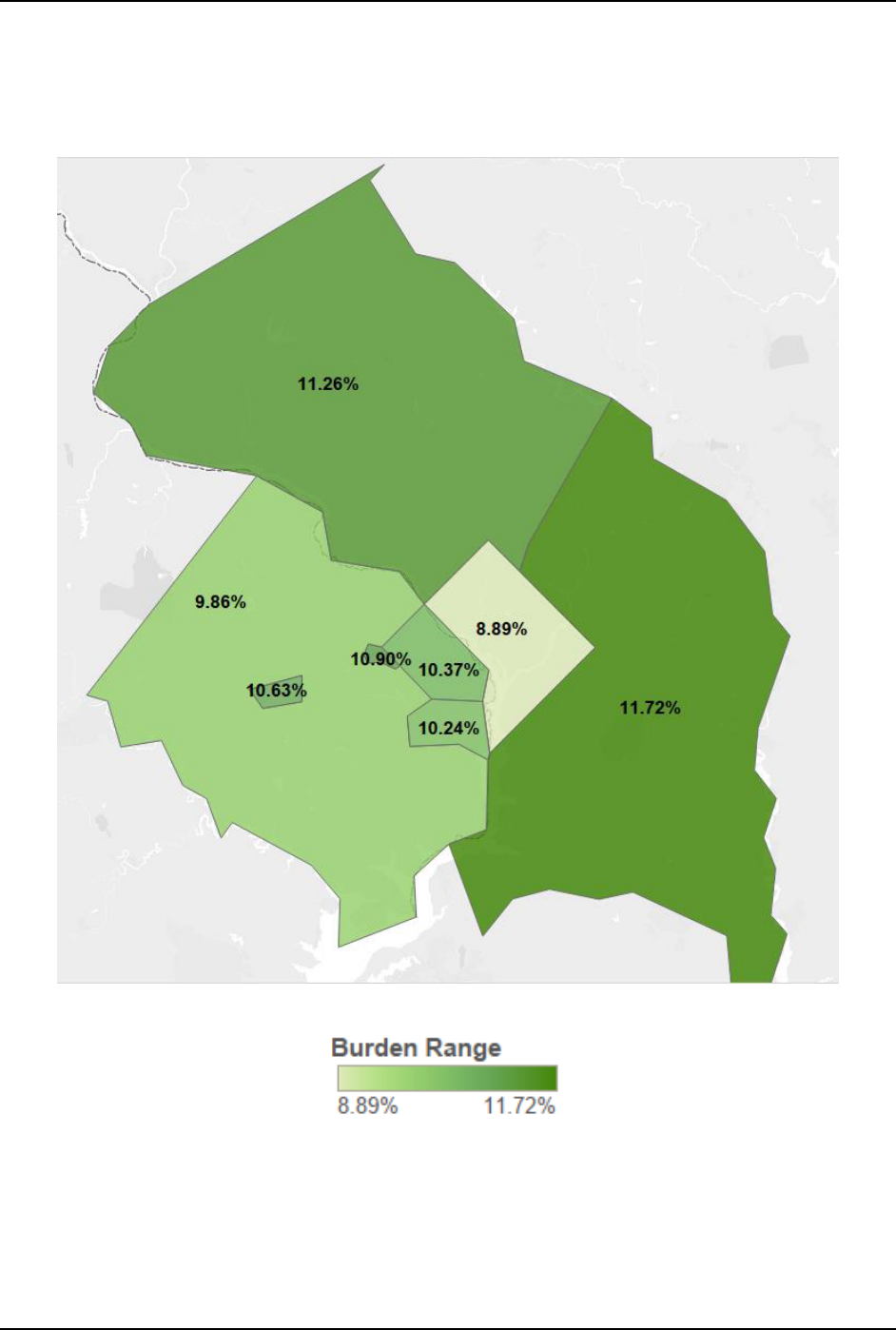
Appendix
2019 Tax Rates and Tax Burdens – Washington Metropolitan Area
Page 74
Map 6: Combined 2019 Metropolitan Area Tax Burdens
(Income, Property, Sales, & Auto) as a % of Income
(Family Earning $100,000/ Year)
Source: ORA Analysis. Note: The lighter green shading represents a lower tax burden.
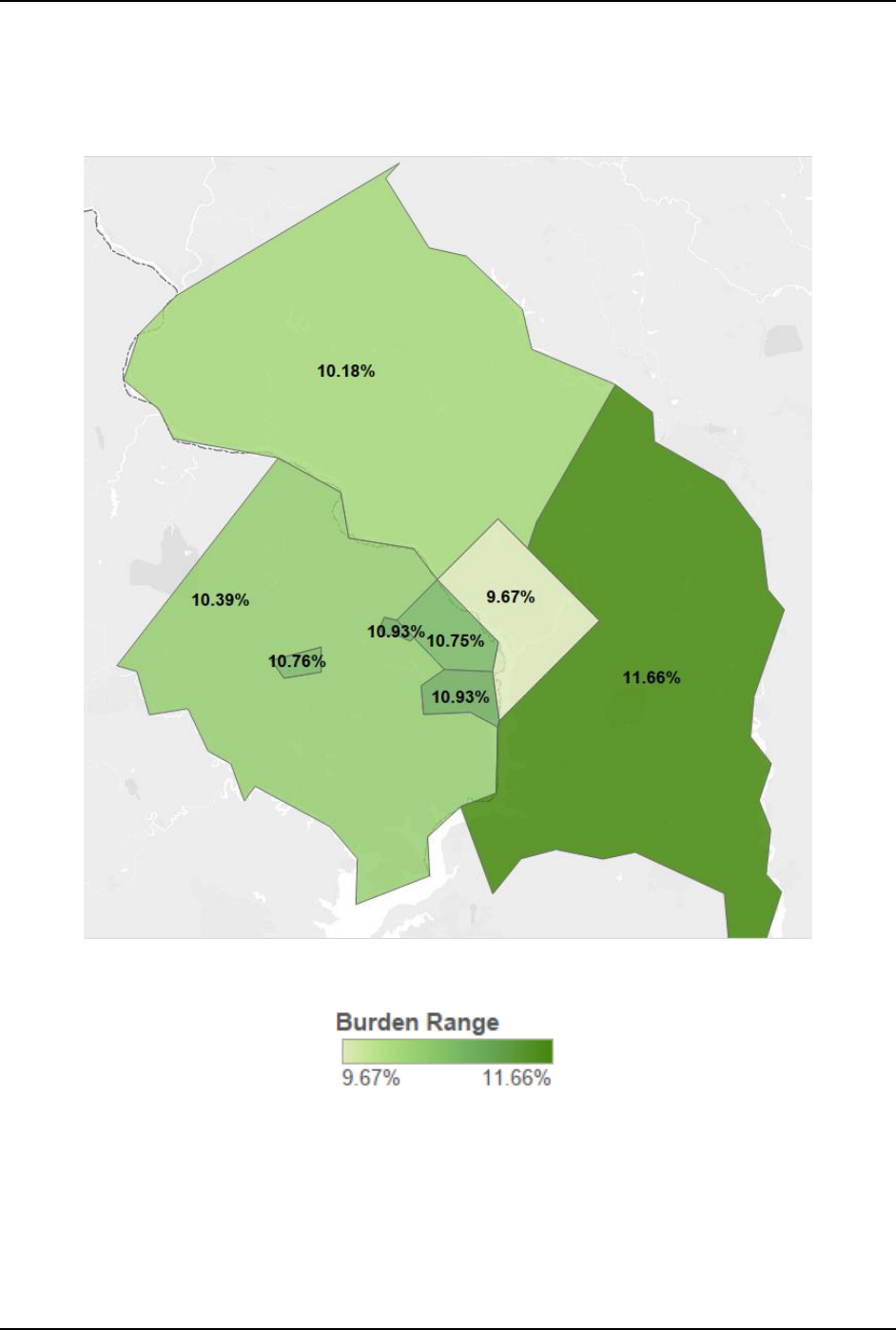
Appendix
2019 Tax Rates and Tax Burdens – Washington Metropolitan Area
Page 75
Map 7: Combined 2019 Metropolitan Area Tax Burdens
(Income, Property, Sales, & Auto) as a % of Income
(Family Earning $150,000/ Year)
Source: ORA Analysis. Note: The lighter green shading represents a lower tax burden.
Office Locations and Telephone Numbers
Office of the Chief Financial Officer
The John A. Wilson Building
1350 Pennsylvania Avenue, NW, Suite 203
Washington, DC 20004
Office hours: Monday through Friday, 8:00 a.m. – 6:00 p.m.
(202) 727-2476
Office of the Chief Financial Officer
Fitzroy Lee, Interim Chief Financial Officer
Angell Jacobs, Chief of Staff and Deputy Chief Financial Officer
David Tseng, General Counsel
Alok Chadda, Chief Information Officer
Paul Lundquist, Executive Director for Management and Administration
David Umansky, Public Affairs Officer
Timothy Barry, Executive Director for Integrity & Oversight
Marshelle Richardson, Chief Risk Officer
Jeffrey Gander, Continuous Improvement Officer
Office of Revenue Analysis (ORA)
Norton Francis, Interim Deputy Chief Financial Officer
1101 4
th
Street, SW, Suite W770, Washington, DC 20024
(202) 727-7775
Office of Budget and Planning (OBP)
Eric Cannady, Deputy Chief Financial Officer
1350 Pennsylvania Avenue, NW, Suite 229, Washington, DC 20004
(202) 727-6234
Office of Finance and Treasury (OFT)
Carmen Pigler, Deputy Chief Financial Officer and Treasurer
1101 4
th
Street, SW, Suite W800, Washington, DC 20024
(202) 727-6055
Office of Financial Operations and Systems (OFOS)
Bill Slack, Deputy Chief Financial Officer
1100 4
th
Street, SW, Suite E800, Washington, DC 20024
(202) 442-8200
Office of Tax and Revenue (OTR)
Keith Richardson, Deputy Chief Financial Officer
1101 4
th
Street, SW, Suite W750, Washington, DC 20024
(202) 442-6200
DC Lottery
Ridgely Bennett, Interim Executive Director
Economic Development and Regulation
Leroy Clay III, Associate Chief Financial Officer
EventsDC
Henry Mosley, Associate Chief Financial Officer
Government Operations
Angelique Hayes Rice, Associate Chief Financial Officer
Government Services
George Dines, Associate Chief Financial Officer
Human Support Services
Delicia Moore, Associate Chief Financial Officer
Not-for-Profit Hospital Corporation
Lilian Chukwuma, Chief Financial Officer, United
Medical Center
Primary and Secondary Education
Deloras Shepherd, Associate Chief Financial Officer
Public Safety and Justice
David Garner, Associate Chief Financial Officer

Prepared By:
Government of the District of Columbia
Office of Revenue Analysis
1101 4
th
Street, S.W.
Suite W770
Washington, DC 20024
(202) 727-7775
